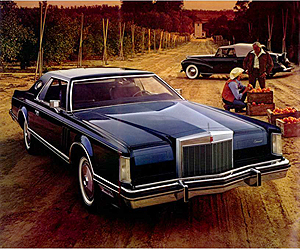
A star during the 1970s boom in “personal luxury” cars, 1977-79 Mark Vs are highly sought after today for their clean styling, and last-of-their-kind XL classic dimensions. This ’77 base model features entry level wheel covers and vinyl roof delete. SEE PHOTO SLIDESHOW AT BOTTOM OF ARTICLE FOR MORE PICTURES
A star during the 1970s boom in “personal luxury” cars, 1977 – 1979 Lincoln Mark Vs are highly sought after today for their clean styling and last-of-their-kind extra large dimensions. By the 1979 model year, every other make and model large car sold in the United States had been downsized to meet 1980 fuel economy regulations except Lincolns, which held on for one final year…truly making them making them worthy of the phrase “Old School’s last graduate”.
(Photo slideshow with large pictures detailing all Mark V variations is at end of article)
The 1977-79 Lincoln Mark V is decidedly old-school. Truly the last 1979 passenger car 80 inches wide and 230 inches long with fuel economy barely in the double digits, and with a design putting styling over aerodynamics….the Mark V embodies what traditional “Amercian luxury cars” were known for since the dawn of the automobile.
A handsome car in its day, the V’s elegant and crisp lines have stood the test of time well making it a period piece that still turns heads today. Produced for only three model years, many collectors consider it as recognizable an icon today as a 1955-57 Ford Thunderbird, a 1964-66 Mustang, a 1968-70 Dodge Charger (Dukes of Hazzard), or even a 1995-97 Ferrari F50…all vehicles with three-year model runs also.
That said, it’s fair to say the Mark V is more an evolutionary design than a revolutionary one. Improving on its predecessor (the 1972-76 Mark IV), the ’77 used the same 120-inch wheelbase as well as same front/rear tread width. While 2.2 inches were added to the overall length for styling, engineers diligently brought curb weight down from 5,000 pounds to 4,600 pounds.
Sheetmetal, grille, and bumpers were all new for ’77 and embodied a sharp-edged more angular theme rather than the more rounded and heavier-looking styling of the Mark IV. Three vent slats along both front fenders were new, and served to improve interior ventilation. Evolutionary styling carried over the previous Mark IV’s narrow Rolls grille, vertical “blade” style parking/turn signal lights in front fender extensions, simultated spare tire hump in trunk, concealed headlamps, and opera windows in roof c-pillars.
In a 2003 interview, Ford Motor Company designer Don DeLaRossa reflected in Collectible Automobile Magazine back to the Mark Vs development in the 1970s. “The starting point for the Mark V was an alternate design proposal for the Mark IV that had been championed by Gene Bordinat, corporate styling vice president. Bordinat didn’t like the Mark IV design he approved for production. We extended those lines of the Mark IV, straightened them, and kept them flowing….Gale Halderman (head of Lincoln-Mercury design studio at the time) said taillamp blades that wrapped over into the rear fender tops were considered until they proved unpopular in market research.”.
1977 MODELS INTRODUCED October 1, 1976. Base price: $11,396 (80,321 sold).
To view a commercial from Autumn 1976 introducing the Mark V at the New York Museum of Modern Art, see http://www.youtube.com/watch?v=daN4tYCssSI. Note the vehicle shown in this “modern art” theme has no vinyl roof. The narrator was actor John Houseman.
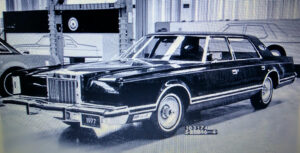
Ford developed a 4-door 1977 Mark V concept in 1974, but nixed it because they feared it might cut into Continental/Town Car sales.
The standard engine for 1977 through 1979 was a 179-horsepower 400 cubic inch V8 (6.6 liters), with a 210-horsepower 460 cubic inch V8 (7.5-liters) optional only for 1977 and 1978. All Mark Vs offered mechanically advanced 4-wheel disc brakes as standard, and technologically advanced anti-lock braking systems (“Sure Track”) as a $280 option. Automatic climate control, a Cartier dashboard clock, and full power accessories were all standard.
Options of Note: dual exhausts ($71), C.B. radio ($285), cruise control ($124), power no-draft windows ($85), tilt steering wheel ($73), silver molding strips underneath doors ($28), leather trim in place of velour ($252), passenger side remote mirror ($33), power glass moonroof ($938).
Padded vinyl roofs covering the rear half of the roof were a $187 option. All models built from the factory were so equipped unless custom ordered without one. The vinyl roof was offered as a delete option, and gave a credit to customers ordering 1977 and 1978 models. For 1979, vinyl roofs were standard and could not be deleted on the order form. A full (not half) vinyl roof covering was an additional $185+. For pictures of plain, half-, and full-vinyl roofs, see pictures at the bottom of this article.
1978: $12,099 (72,602 sold)
Mechanically, ’78 models were updated with wider radiators for better engine cooling, a modified transmission torque converter, and a freer flowing exhaust. The electrical system gained a maintenance-free battery and an electronic voltage regulator. A slightly smaller gas tank was fitted. The base 400-cubic-inch engine was detuned to 166 horsepower in the interest of higher fuel economy.
While the two choices of aluminum alloy wheels were unchanged from 1977, base model wheel covers were redesigned from a flat disc appearance to a more three-dimensional shape. Wire wheel hubcaps were introduced for the first time on all Lincolns as a $233 option this year.
A $900 “carriage roof” option which simulated the look of a convertible top was introduced for ’78. Made out of vinyl textured to resemble canvas type grain, it covered the whole roof and featured fake top braces and stitching. It was quite convincing.
A digital Miles To Empty gauge ($125) was a new option that calculated the number of miles a driver could theoretically travel before running out of gas. While computer controlled fuel injection was never an option on Mark Vs, a rudimentary on-board system used engine vacuum pressure instead to guestimate fuel economy, then multiplied that by the amount of fuel remaining in the tank. While crude compared to today’s standards, it was the first use of a digital gauge showing a mechanical function in any production car.
A limited production Mark V “Diamond Jubilee” Edition was offered to celebrate Ford Motor Company’s 75th anniversary. Available in light blue and gold metallic colors, Diamond Jubilees cost $8,000 extra and featured every available option. Unique body color matching of the turbine spoke alloy wheels, bumper rub strips, vinyl roof, and spare tire vinyl cover were features unique to Diamond Jubilee editions. 5,159 were produced. Note: similar Diamond Jubilee packages were offered on the 1978 Ford Thunderbird.
The optional C.B. radio ($321) was redesigned to feature a digital display for channel numbers.
(SEE PICTURES AT BOTTOM OF ARTICLE FOR A CLOSER LOOK AT ALL MODELS AND FEATURES DESCRIBED)
1979: Base price $13,067 (75,939 sold)
-Mechanical changes for 1979 included the discontinuation of the automatic parking brake release, a heater core inlet and supply line enlarged for improved performance, and ignition and door-lock modification for better antitheft protection.
-The 460 cubic-inch V8 engine (7.5 liters) and dual exhaust options were dropped after 1978, and were not available in the Mark V’s final year. All ‘79s were equipped with the 400 cubic-inch V8 (6.6 liters), two-barrel carbuerator, and single exhaust.
-Diamond Jubilee editions had proved very popular the previous year – but because Ford’s 75th anniversary would not translate to 1979, the packages returned in another guise. By 1979, every car sold in the United States except the Lincoln Mark V and Continental sedan had been downsized to meet upcoming 1980 fuel economy laws. To commemorate the Mark Vs unique XL holdout status in its final year, the “Collector’s Series” was created. Also selling for upwards of $8,000, Collector’s Edition interiors, exteriors, and features were identical to Diamond Jubilee – only in different colors.
Offered in just two colors initially (midnight blue moondust metallic and white), two additional Collector’s Edition colors (light silver moondust metallic and diamond blue moondust metallic) were offered later in the ’79 model year. All Collector’s colors featured navy blue paint in between alloy wheel spokes, navy blue interiors, and gold paint on the front grille slats.
-Two new radio choices debuted, an 8-track stereo with digital memory settings, display and scanning function. Also new was an AM/FM non-digital stereo with a more modern cassette player (see photos below for details).
TELEVISION AND MOVIES HEAVILY FEATURING THE MARK V:
-Dallas (1978-91 television show)
-Starsky & Hutch (1975-79 television show)
-Knots Landing (1979-93 television show)
-many appearances during highway scenes in “CHiPs” (1978-83 television show)
-North Dallas 40 (1979 movie)
-Robocop 3 (1993 movie)
-No Man’s Land (1987 movie)
-Provinces of Night (2010 movie)
-Alanis Morrisette’s 1996 music video “Ironic”
So…aerodynamics? Who needs aerodynamics!? As Enzo Ferrari once said, “Aerodynamics are for people that can’t build engines.”
CLICK ON ANY OF THE PHOTOS BELOW TO SEE LARGER IMAGES. HIT ARROW BUTTONS UNDER EACH PICTURE TO SCROLL BACKWARDS OR FORWARDS.
- A star during the 1970s boom in “personal luxury” cars, 1977-79 Mark Vs are highly sought after today for their clean styling, and last-of-their-kind XL classic dimensions. This ’77 base model features entry level wheel covers and vinyl roof delete.
- Mark Vs have made appearances in many television shows and movies, most noteably this 1977 model driven by Jock Ewing in the long-running 1978-91 TV series “Dallas”.
- Today, the ’78 Mark V driven by Jock Ewing is in the museum dedicated to the Dallas television show located in the actual South Fork ranch located near Dallas, Texas.
- This 1978 Mark V was also used on the set of the original television show Dallas as Jock Ewing’s car. While it’s the same silver color as the ’77, those with a discerning eye will notice this one has a set of turbine alloy wheels. Its whereabouts are unknown today.
- A better look at an extremely rare steel painted roof Mark V. The vinyl roof was offered as a delete option ($271 credit) to customers ordering 1977 and 1978 models. For 1979, vinyl roofs were standard and could not be deleted.
- Here, a 1977 Mark V with base model wheel covers and no vinyl roof is seen in the 1979 Disney movie “North Avenue Irregulars”.
- Full vinyl roofs as equipped on this model cost an additional $187 – $236 over the normal half-roof covering. A Luxury Group option allowed owners to mix and match paint, body molding, roof, and interior colors such as on this 1977 model.
- A Luxury Group option shown on this ’77 (and the one in the previous picture) allowed owners to mix and match paint, body molding strip, roof, and interior colors.
- 1979 Lincoln Mark V
- All Mark Vs featured one-piece grilles that extended below the bumper cutout area.
- A closer look at the standard wheel cover equipped on base 1977 Mark Vs, unchanged from its origination on 1972 Lincolns. After this year, the standard wheel cover was redesigned.
- Optional wheels on 1977-79 Mark Vs. On the left is a forged aluminum wheel introduced earlier in the 1970s, and on the right is a turbine spoke aluminum wheel introduced for 1977. Both ran unchanged through 1979, and cost from $230-$373.
- Cartier clocks were standard on all Mark V instrument clusters from 1977 to 1979.
- A better view of the instrument cluster found on all 1977, 1978, and 1979 Lincoln Mark Vs.
- The 1977 Cartier edition also cost $2,100 and featured “Dove grey” non-metallic silver paint with a choice of full or half vinyl roof, and light gray leather interior.
- A left rear quarter view of a 1977 Mark V Cartier Edition. Unpainted turbine alloy wheels were standard.
- Passenger side view of a 1977 Mark V Cartier Edition.
- 1977 Cartier Edition leather interior.
- The 1977 Givenchy Edition cost $2,100 and featured “Dark Jade” green metallic paint, a tan vinyl half roof covering the front portion only, and an all-jade green velour or leather interior.
- 1977 LINCOLN MARK V Givenchy Edition.
- Passenger side view of a 1977 Mark V Givenchy Edition.
- Right front quarter view of a 1977 Mark V Givenchy edition.
- The 1977 Mark V Givenchy Edition featured a choice of Dark Jade green leather or velour (shown here) interior.
- For 1977, the Bill Blass designer package cost $1,600 and featured “Midnight Blue” navy paint with palamino colored leather interior.
- 1977 Bill Blass Mark Vs featured dark blue body side moldings and a choice of palamino tan vinyl full- or half-roofs. Unpainted turbine style aluminum alloy wheels were standard.
- A 1977 Bill Blass edition with tan side rub strips.
- The 1977 Bill Blass Edition featured a palamino leather interior.
- The 1977 Pucci Edition cost $1,600 and featured “Black Diamond Fire” charcoal black/gray metallic paint with a white leather accented with black. Buyers had a choice of full or half textured vinyl roofs in “white cayman grain patent leather”. Standard wheels were unpainted turbine alloys.
- The 1977 Mark V Pucci edition white leather interior.
- This ’77 Mark V on display at the Imperial Palace Hotel in Las Vegas, Nevada was one of the last cars Elvis Presley purchased before his death on August 17, 1977.
- This 1977 advertisement introduces each of the four Designer Series models for that year.
- A 1977 Ford advertisement promoting lease deals on the Mark V and Ford LTD Country Squire. During the 1970s, the popularity of automobile leasing exploded – especially on personal luxury cars appealing to vanity such as the Mark V.
- A northern New Jersey leasing company advertisement featuring popular lease vehicles of 1977.
- For 1978, base model wheel covers (right) were redesigned and wire-wheel hubcaps (left) were added as a $233 option. Both of these remained unchanged through 1979. Note: with exception of the 1979 Pucci, all 1977-79 Special Edition models were equipped with turbine spoke wheels.
- This ’78 Lincoln Mark V allows a closer look at the wire wheel covers that were introduced for that model year.
- Another look at a 1978 Lincoln Mark V equipped with wire wheel covers that were new for the ’78 model year. These wire wheel covers would be used by Lincoln unchanged through the early 1990s.
- The 1978 Mark V in this picture allows a better look at the revised ’78 base wheel cover design. Vinyl roofs could be deleted when ordering, as on this model with only a painted roof.
- A new option for 1978-79 was the full simulated convertible top “Carriage Roof” option ($900).
- For 1978-79, the optional C.B. radio ($321) was redesigned to feature a digital display for channel numbers.
- When not in use, the cb radio found a convenient storage area on the center console found on ’78 Mark V Diamond Jubilee editions and ’79 Collector Series models.
- For 1978, a new Miles-To-Empty digital gauge was introduced as an option ($125).
- For 1978, a limited production Mark V Diamond Jubilee Edition was offered to celebrate the Ford Motor Company 75-year anniversary. Available in “Diamond Blue” (shown here) and “Jubilee Gold” metallic colors, Diamond Jubilees cost $8,000 extra.
- 1978 Mark V Diamond Jubilee Edition in diamond blue.
- Body color matching of the turbine spoke alloy wheels was a feature unique to 1978 Diamond Jubilee edition Lincoln Mark Vs, and on the following year’s Collectors Series.
- Diamond Jubilee Mark Vs also featured color-matched rub strips on the bumpers, as seen in this photo. On lower priced models, they were simply black in color.
- Left rear view of a ’78 Mark V Diamond Jubilee edition.
- Passenger side view of a 1978 Mark V Diamond Jubilee edition in diamond blue.
- Power antennas were standard equipment on all Mark Vs. This picture shows its location on the vehicle, where it periscoped up from the right front fender.
- A Diamond Jubilee interior in light blue (gold colored interiors were equipped on gold Diamond Jubilee models). This exact interior in a darker shade of blue was used on the following year’s Collectors Edition models.
- “Diamond Jubilee” was imprinted inside the opera window glass on all such 1978 Mark Vs.
- A view from inside a 1978 Mark V Diamond Jubilee edition. This picture allows a better look at the contours of the power dome hood in the raised position.
- Another feature unique to 1978 Diamond Jubilee editions and later 1979 Collectors Editions was a padded vinyl spare tire hump as seen in this picture.
- This special Lincoln hood ornament was found on all 1978 Mark V Diamond Jubilee editions, and also on 1979 Mark V Collector Series models.
- 1978 Mark V Diamond Jubilee editions were also offered in Jubilee Gold, with color-matched aluminum wheels, body moldings, bumper rub strips, and vinyl spare tire hump cover.
- Here, a “jubilee gold” 1978 Mark V Diamond Jubilee edition is seen at a 2010 Millburn, New Jersey car show.
- A look down the majestic hood of a ’78 Mark V Diamond Jubilee edition.
- For 1978, the Pucci Edition ($1,800) featured silver metallic paint, medium gray leather interior, and a textured “Black Cayman Grain” full or half roof covering
- A close up view of a 1978 Pucci editions textured vinyl roof, which featured a simulated patent leather Alligator skin surface.
- The 1978 Pucci Edition leather interior.
- For 1978, the Mark V Givenchy Edition was unchanged externally from 1977.
- While the 1978 Givenchy Edition ($1,800) was unchanged on the outside from 1977, the interior was revised.
- 1978 Givenchy edition interior. Similar to 1977, buyers had a choice of “Jade Green” leather (shown here) or tufted velour interiors.
- A rear seat view of the leather jade green interior found on 1978 Mark V Givenchy editions.
- The Givenchy logo was imprinted into the opera windows on all 1977, 1978, and 1979 Mark V editions. 1977 model shown here.
- For 1977 and 1978, Givenchy Mark Vs featured the same colors and did not change outwardly. The vinyl front half roof was a theme that would continue into 1979 and later Givenchy Lincoln models.
- A better view of a 1978 Mark V Givenchy Edition roof. Although the green color appears darker on this 1978 model than the ’77 shown in prior pictures, it is actually the same.
- 1977 and 1978 Givenchy edition Mark Vs featured palamino tan body molding strips and pin striping as shown on this 1978 model. Wire wheels seen here are aftermarket equipment.
- For 1978, the Bill Blass edition came in “Midnight Cordovan” (maroon) paint finish with a choice of light champagne full vinyl or landau vinyl roof. Unpainted turbine alloy wheels were standard.
- A better view of a ’78 Mark V Bill Blass edition with landau half roof covering. Bodyside moldings and pinstriping matched the color of the vinyl roof.
- 1978 Bill Blass interiors featured a choice of dark red velour (shown) or leather.
- 1978 Cartier Mark Vs featured “light champagne” paint with a choice of vinyl rear half roof (standard) or full roof covering at extra cost (shown in this picture). Trim along either vinyl roof was silver metal in color.
- 1978 Mark V Cartier editions featured bodyside moldings in champagne color, and unpainted turbine aluminum wheels were standard.
- 1978 and 1979 Mark V Cartier edition leather interiors featured the same colors and pattern.
- Mark V radio choices for 1979. The top two radios seen here were AM-FM only. New this year was an 8-track with digital display, memory settings, and auto scan (shown in middle). At the very bottom is also a more modern cassette tape player radio.
- This 1979 Mark V Collectors Series is equipped with the top-of-the-line digital radio new for that model year.
- Dashboard view of a 1978 Mark V Diamond Jubilee edition.
- By 1979, every car sold in the United States except the Lincoln Mark V and Continental sedan had been downsized to meet upcoming 1980 fuel economy laws. To commemorate its unique XL-size holdout status in its final year, the 1979 Collectors Series was created.
- Opera windows were fully covered with a vinyl roof section on Collectors Series Mark Vs. This is the only Mark V edition to have this treatment from the factory, so if you see one with a roof like this, it is a ’79 Collectors Series.
- An alternate view of the 1979 Mark V Collectors Series in midnight blue. Collectors Series were basically the previous year Diamond Jubilee Edition package in different colors.
- Here, a 1979 Mark V Collectors Series model is shown with hood up. Notice the gold pin striping down the center.
- Trunk panel view of a 1979 Mark V Collectors Series.
- 1979 Mark V Collectors Series interiors were available in thickly padded cloth shown here, or leather. All four exterior colors were offered only with dark blue interiors.
- Buyers of ’79 Collectors Series models could also choose seats covered in navy blue leather, as shown here. All four exterior colors were offered only with this dark blue interior.
- Aluminum spoke insets were painted midnight blue on all ’79 Collectors Series Continental and Mark V models, regardless of exterior color.
- As the original window sticker of this ’79 Mark V Collectors Series model shows, these were the priciest Mark Vs with a base price of $21,852 – a huge sum at the time. Options such as CB radio and moonroof could push the sticker price over $23,000.
- 1979 Collectors Series shown in white. The package price added over $8,000 to the cost of the standard Mark V’s $13,067 base price.
- Overhead view of a 1979 Mark V Collectors Series in white. White models were equipped with navy blue interiors, wheels, and bumper rub strips.
- The long-hood, short-deck styling popular with personal luxury cars of the 1970s made the Mark V a runaway success.
- While ’79 Collectors Series models in navy blue, light blue, and silver all featured padded vinyl on the spare tire humps that was navy blue, white Collectors Series models got matching white vinyl as seen here.
- Later in the 1979 model year, Collectors Edition Mark Vs were also offered in “Light Silver Moondust Metallic” silver, as shown on this model. Alloy wheels, vinyl-covered tire hump/roof, and bumper rub strips were navy blue.
- Body side molding strips and vinyl padded spare tire hump were also navy blue in color on silver ’79 Mark V Collectors Series models.
- Another mid-’79 addition was a Collector Edition Mark V in “Diamond Blue Moondust Metallic” light blue. Similar to silver Collector Editions, alloy wheels, vinyl areas and bumper rub strips were also painted navy blue.
- Rear view of a diamond blue ’79 Mark V Collectors Series model.
- Front view of a diamond blue ’79 Mark V Collectors Series model.
- The 1979 Collectors Series interior carries over the ebony wood grain dash and steering wheel from the 1978 Diamond Jubilee Edition. All were navy blue in color.
- Like the 1978 Diamond Jubilee edition, 1979 Collectors Series featured leather wrapped tool kit, owners manual, umbrella, and even a cook book.
- For 1979, the Bill Blass edition Mark V was created with a nautical theme of “Midnight Blue” navy / white two-tone paint and interiors. Buyers had a choice of “Carraige Roof” simulated convertible top (shown here) or traditional full vinyl roof.
- Most ’79 Bill Blass Mark Vs were equipped with the more expensive carraige roof choice as seen here. It featured contoured ribbing in three spots along the roof to simulate a real convertible top frame.
- The Bill Blass package with Carraige roof (shown here) was a $2,775 option, while the Bill Blass package with traditional full vinyl roof was $1,809.
- A rear quarter view of a ’79 Mark V Bill Blass edition with carraige roof. Spare tire humps were painted midnight blue, as seen here.
- Some ’79 Mark V Bill Blass editions were produced with a traditional full vinyl roof covering featuring exposed opera windows, as seen in this picture.
- A closer view of a 1979 Mark V Bill Blass edition with the less common padded vinyl roof and exposed opera windows. This Mark V is equipped with the all-navy leather interior choice.
- Gold pinstriping and accents were featured on all ’79 Bill Blass Mark Vs.
- Plastic insert panels between both bumpers and the body were painted midnight blue on all ’79 Bill Blass Mark Vs, as visible here in this photo.
- Right side view of a ’79 Mark V Bill Blass edition.
- Left side view of a ’79 Bill Blass Mark V.
- Left rear quarter view of a Bill Blass Mark V with traditional full vinyl roof covering.
- The 1979 Bill Blass Edition interior was available in white leather with navy blue pinstriping (shown), or solid navy blue leather with white accents.
- Shown here is the second choice for ’79 Bill Blass edition Mark V interiors. Leather was navy blue. Unlike the white leather seats which had navy blue pinstriping around all edges, contrasting accents in white were minimal on this version.
- This rusted ’79 Bill Blass Mark V perfectly illustrates how vinyl roofs trap humidity and cause corrosion.
- The 1979 Mark V Pucci edition cost $1,525 and featured turquoise metallic paint with a full vinyl matching roof. The ’79 Pucci version was the only special edition model that used wire wheel hubcaps instead of turbine spoke alloy wheels.
- For 1979, Pucci Edition Mark Vs went with a lighter interior than in years previous.
- The 1979 Givenchy package featured “Crystal Blue Moondust Metallic” blue paint with a similarly-colored “Valino Grain” vinyl half roof covering the front.
- For 1979, Givenchy dropped the jade green interiors used during the previous two model years and went with a deep sea blue color.
- The Mark V Givenchy tradition of covering only the front half of the roof in vinyl continued for 1979 in different colors. For this year, Givenchy editions featured turbine alloy wheels with midnight blue paint between the spokes.
- The 1979 Cartier Mark V, as shown in the factory brochure.
- 1979 Cartier models featured the same “light champagne” paint color as the year before, but the trim strip across the landau vinyl roof was now red in color instead of silver/chrome. Turbine aluminum wheels were now color matched, and buyers had a choice of cloth or leather seating with the same design.
- A 1979 Mark V Cartier Edition.
- All three years of Mark V Cartier editions featured this monogram on the decklid, as seen in red on this ’79 edition.
- The cloth version of the Cartier edition interior for 1979.
- Rear cloth seats on a ’79 Mark V Cartier edition.
- This 1979 Lincoln has the interior and opera glass window markings of a Cartier edition, but differs in several ways. There is no Cartier monogram logo on the trunk lid, bodyside moldings on this model are red instead of champagne color, and the entire vinyl roof is red compared to the standard Cartier roof treatment of one red trim strip surrounding a champagne vinyl section.
- This ’79 Mark V also differs from Cartier editions with wheel spoke insets that are painted red instead of champagne.
- This may be an actual ’79 Mark V Cartier edition customized during or after production with unique red coloring on the vinyl roof, body side moldings, and wheel spoke insets. The interior matches Cartier edition models for that year, but the rear decklid does not feature the double-C Cartier monogram.
- Mark Vs are popular among customizers who create low riders with 20-inch or larger rims. (1977 model shown)
- A look at Mark V headlamps concealed behind pneumatic covers. Position above and between the two headlights is a light sensor. Sensors on both sides of the Mark V provide input to the Twilight Sentinel processor, which automatically dims bright lights when oncoming cars are detected.
- Aftermarket custom convertible versions of the Mark V such as this one were produced in the 1970s by Hess and Eisenhardt, Emess Coach Builders, Global Coach, American Custom Coachworks, Hotten Associates, and Bradford Motorcars
- Aftermarket custom Mark V pickup truck conversions such as this “Saint Tropez” were popular in the 1970s as well.
- This customized 1977 Mark V wagon was once owned by singer Wayne Newton.
- A star during the 1970s boom in “personal luxury” cars, 1977-79 Mark Vs are highly sought after today for their clean styling, and last-of-their-kind XL classic dimensions. This ’77 base model features entry level wheel covers and vinyl roof delete. SEE PHOTO SLIDESHOW AT BOTTOM OF ARTICLE FOR MORE PICTURES
- Ford developed a 4-door 1977 Mark V concept in 1974, but nixed it because they feared it might cut into Continental/Town Car sales.
- Ford developed a 4-door 1977 Mark V concept in 1974, but nixed it because they feared it might cut into Continental/Town Car sales.
- Ford developed a 4-door 1977 Mark V concept in 1974, but nixed it because they feared it might cut into Continental/Town Car sales.
- Here, a graphic artist does a photoshop alteration to imagine what a Mark V would look like with a more modern wheelbase stretch. The length of the actual car (top) is unchanged in the revised version (below).
- This photoshop revision imagines if the Mark V would look like with a more modern wheelbase stretch. The overall vehicle length is unchanged.
- Creative musings on how different versions of the Mark V might have looked.

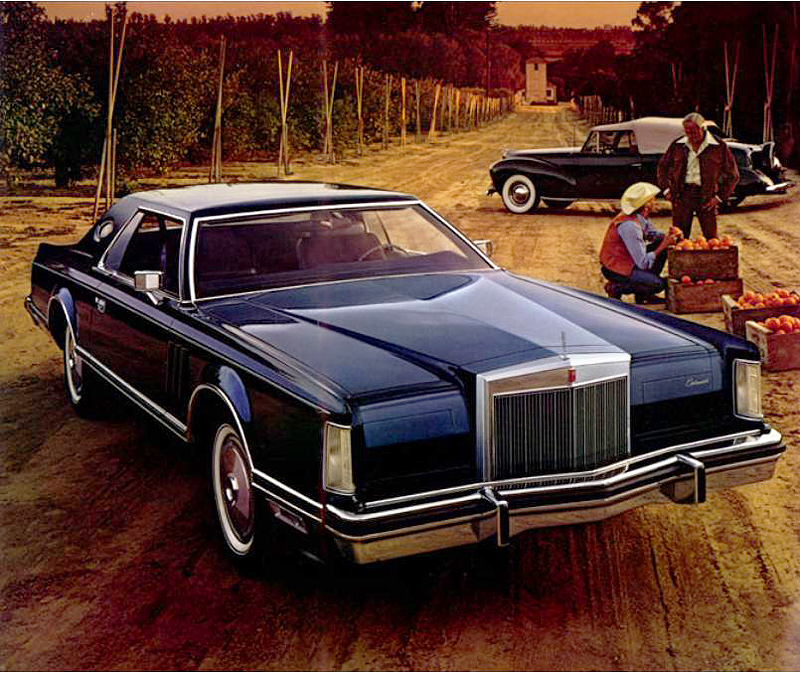
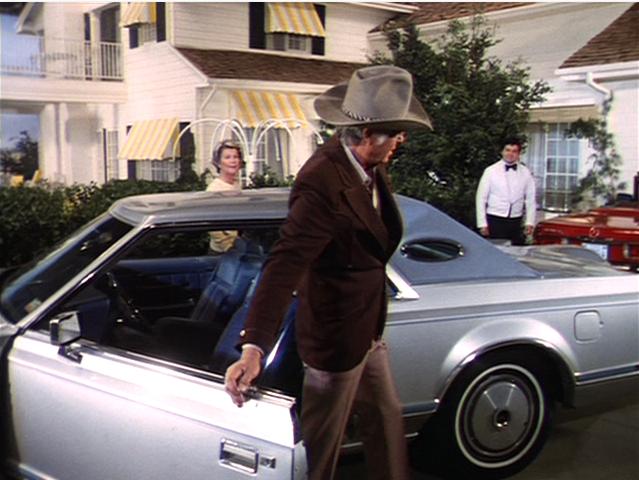
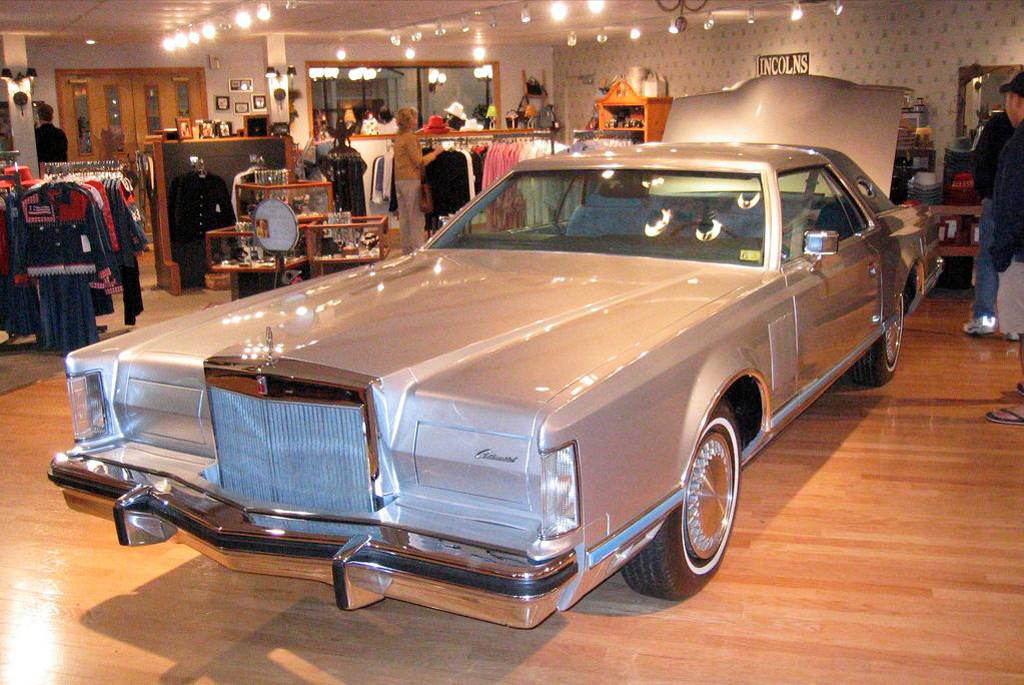
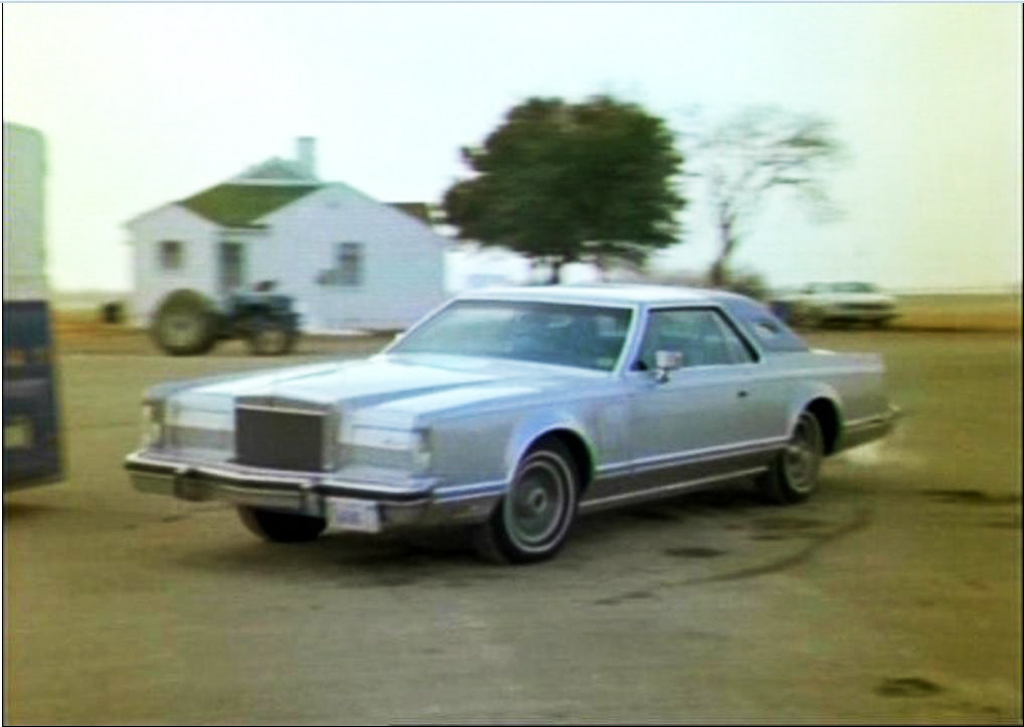
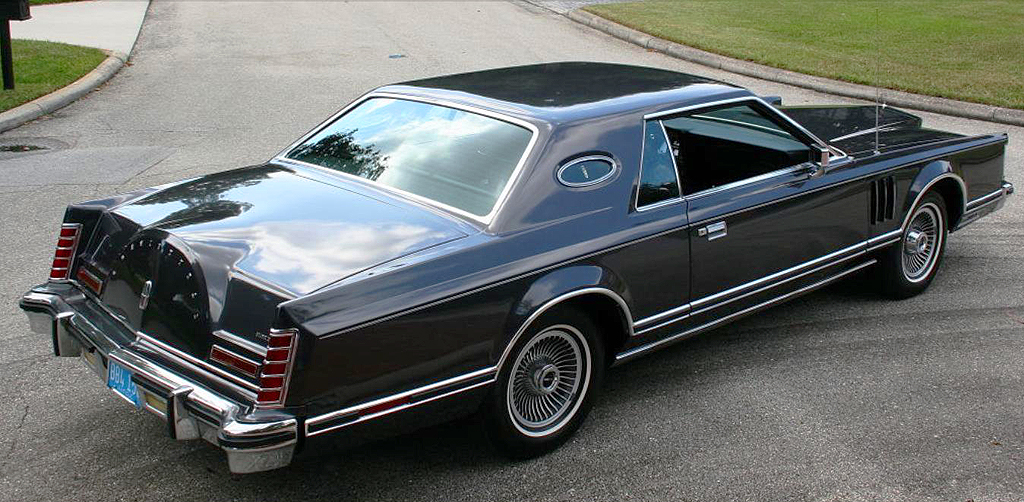
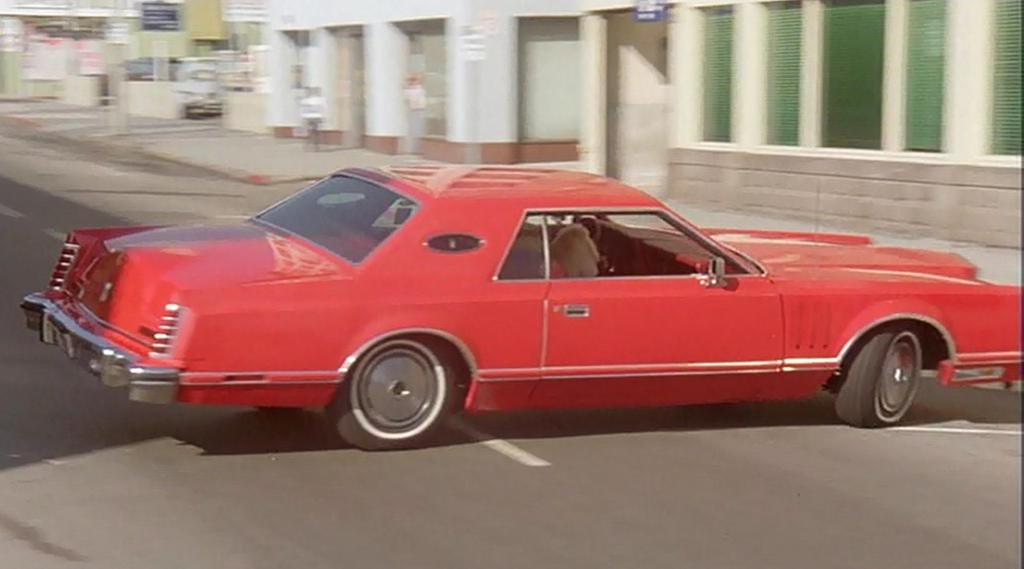
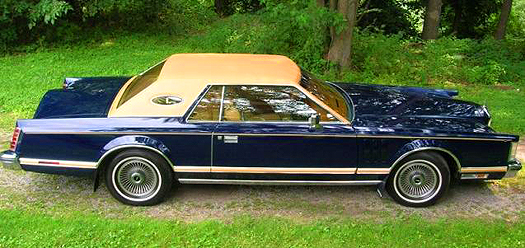
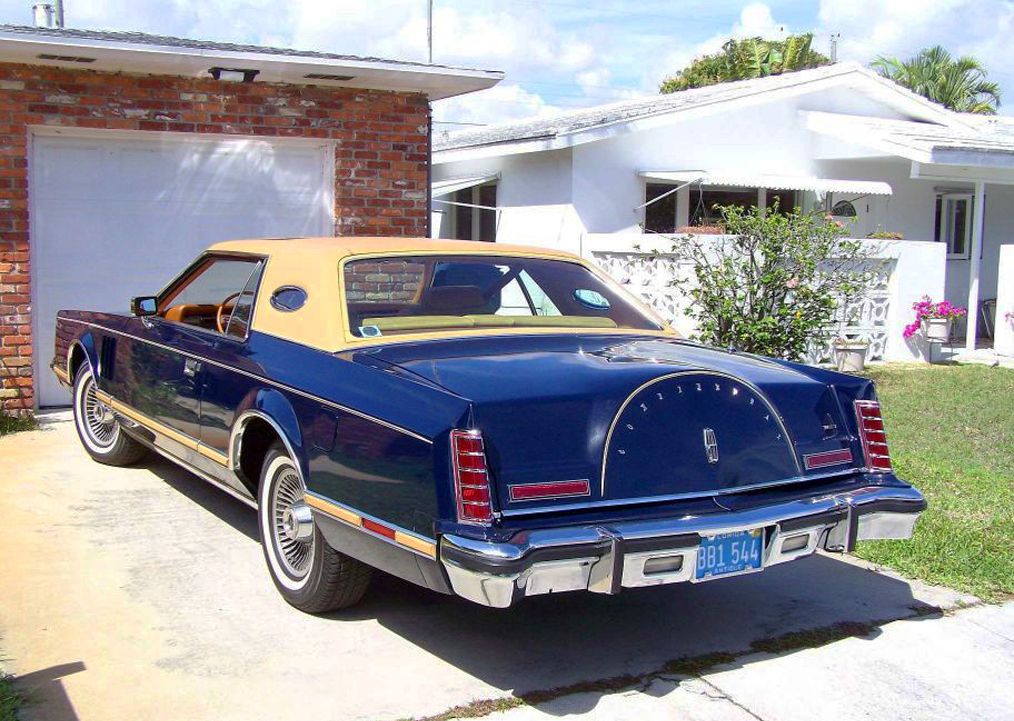
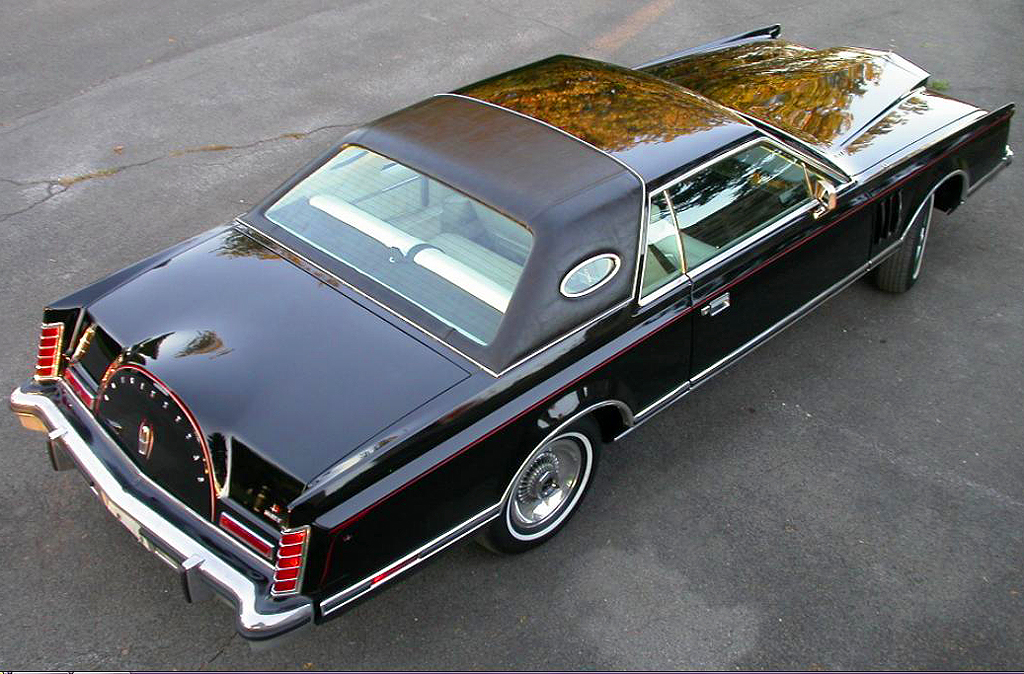
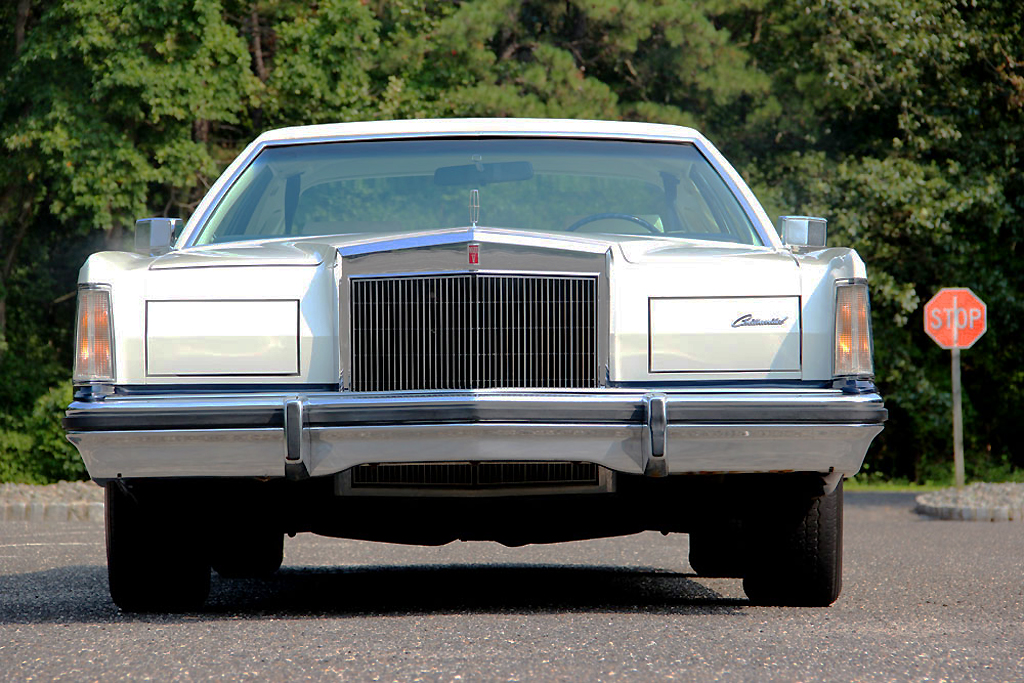
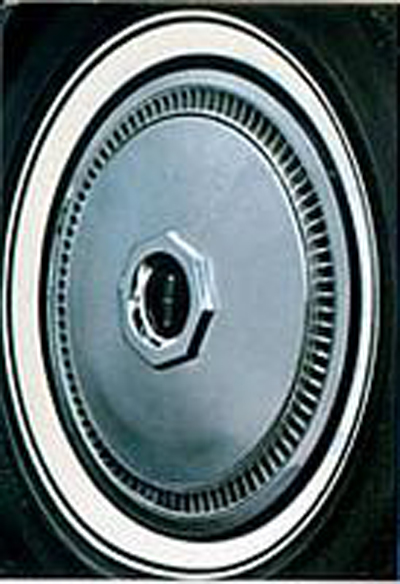
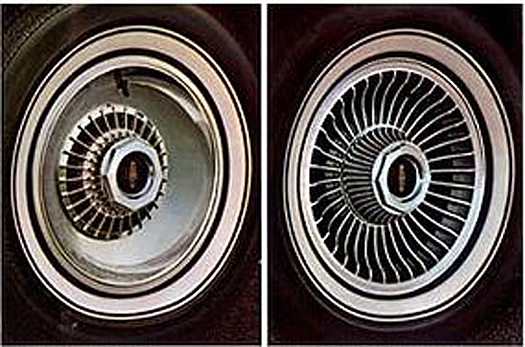
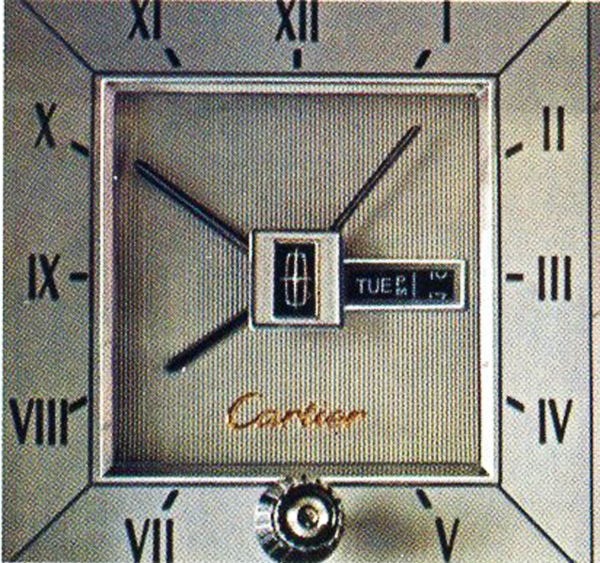
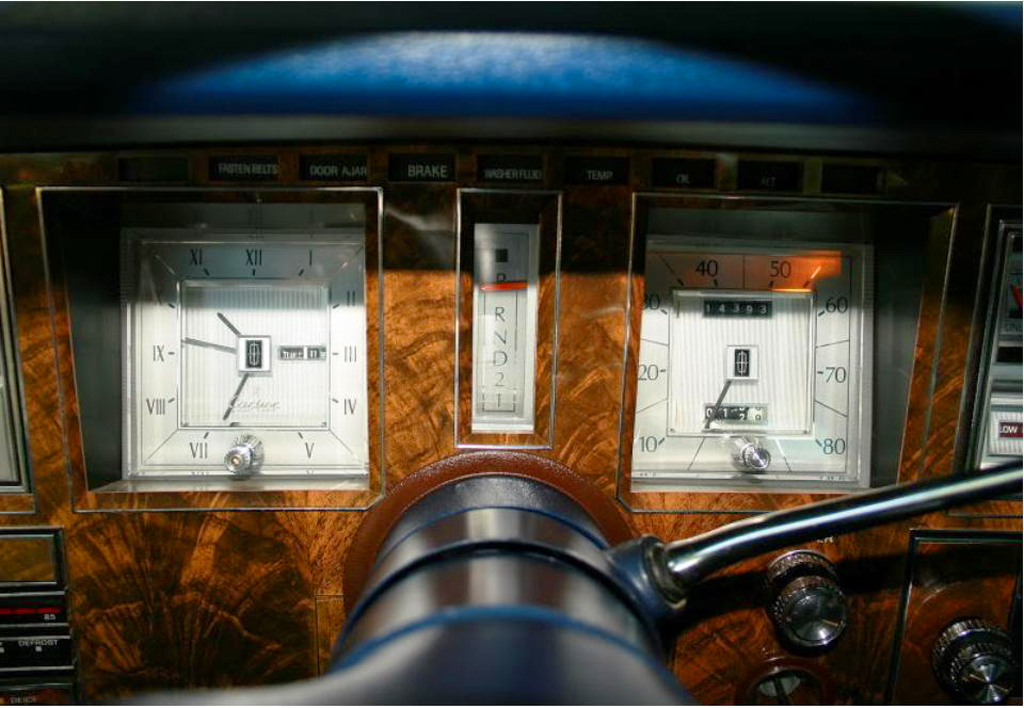
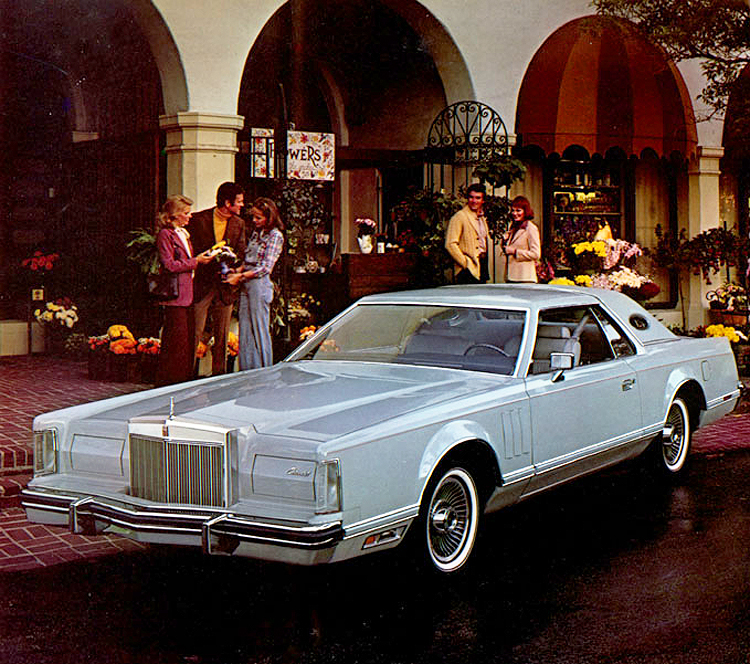
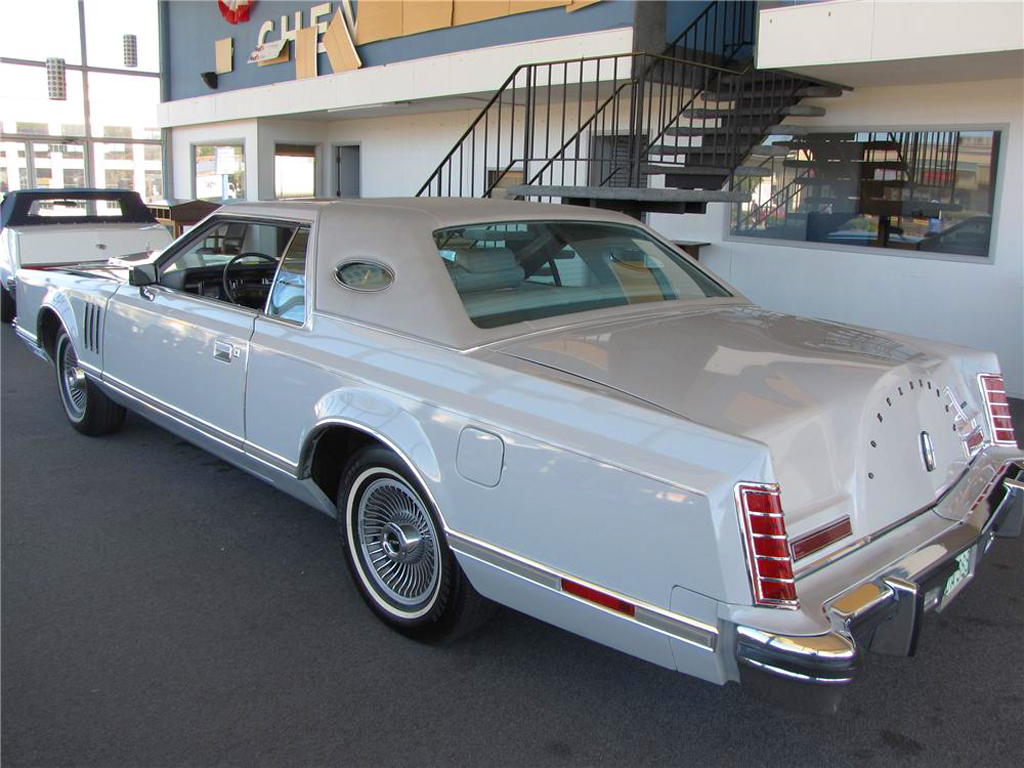
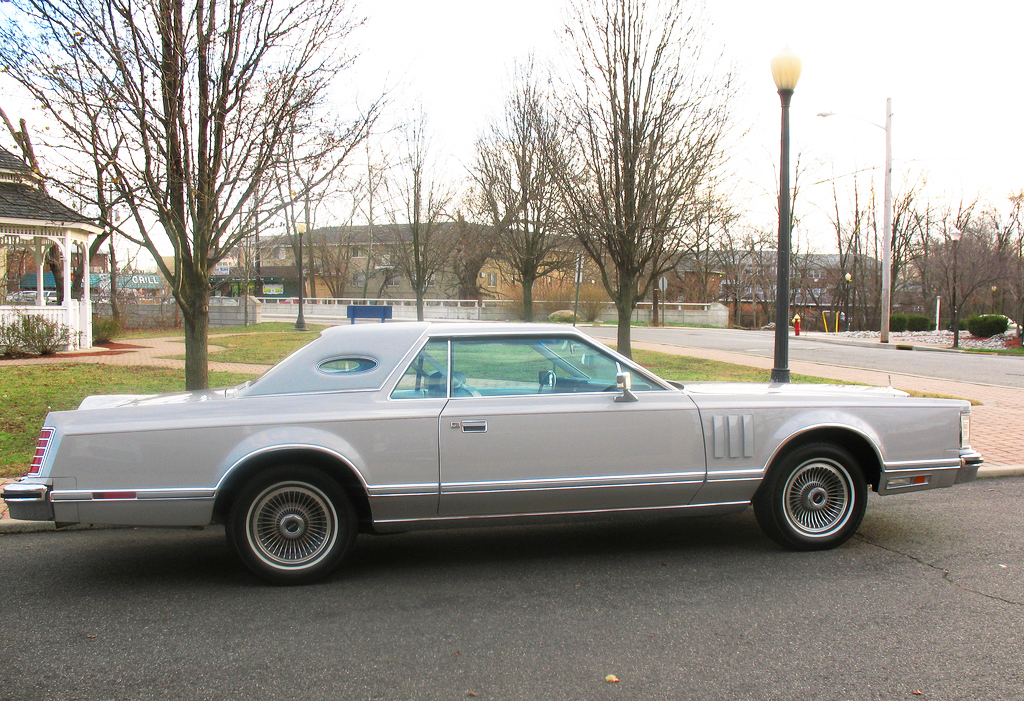
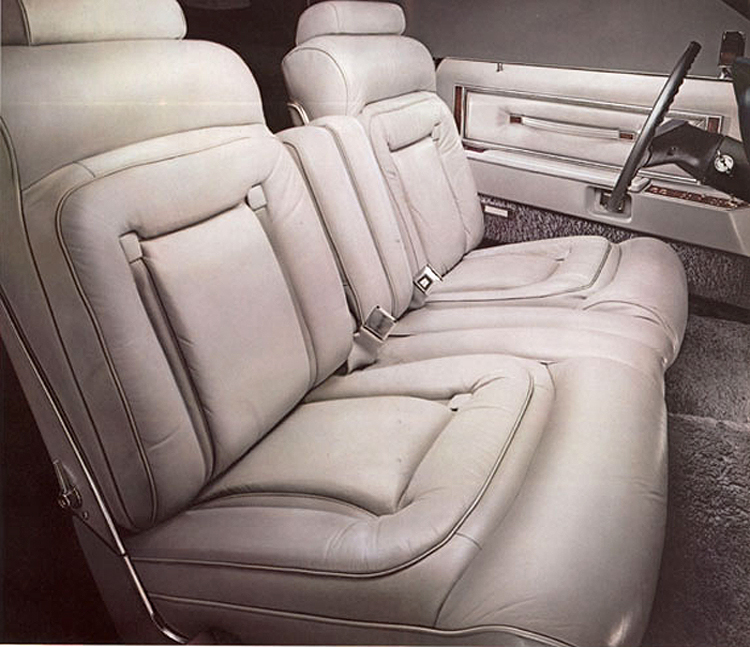
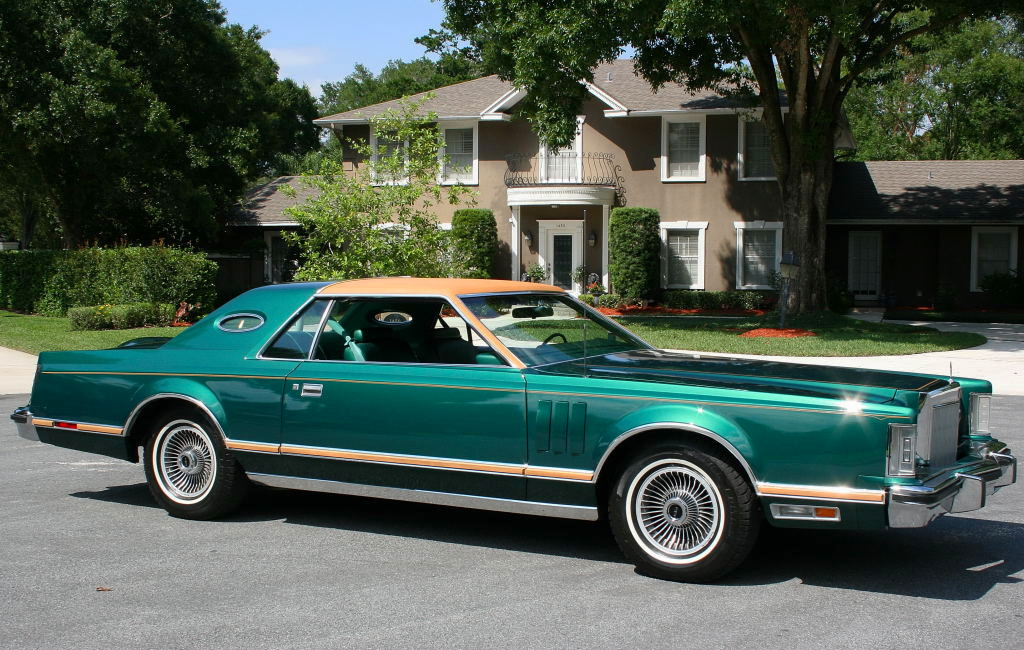
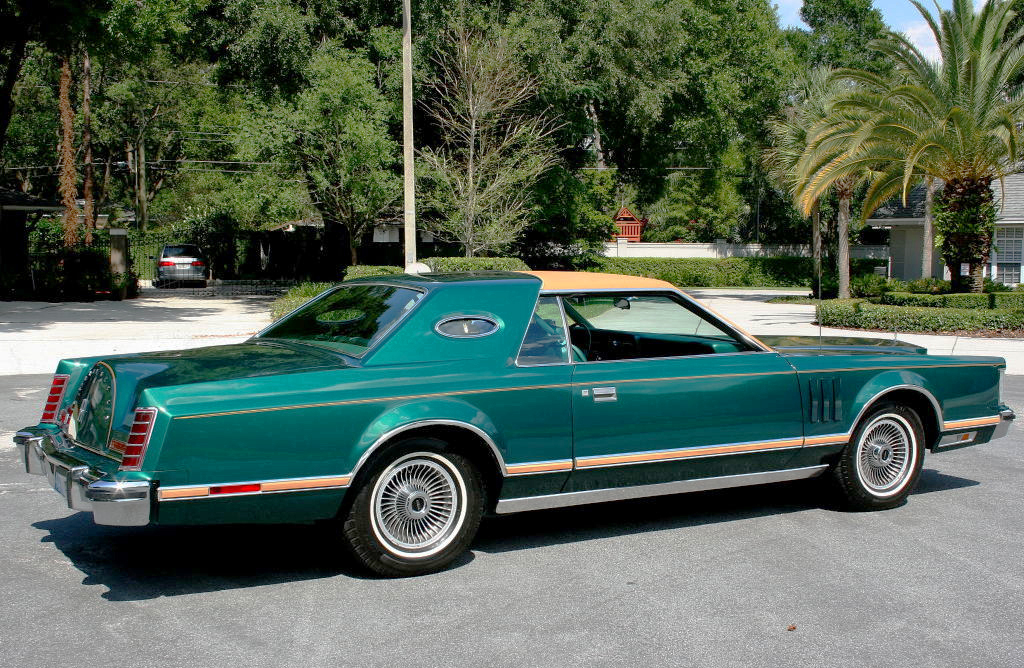
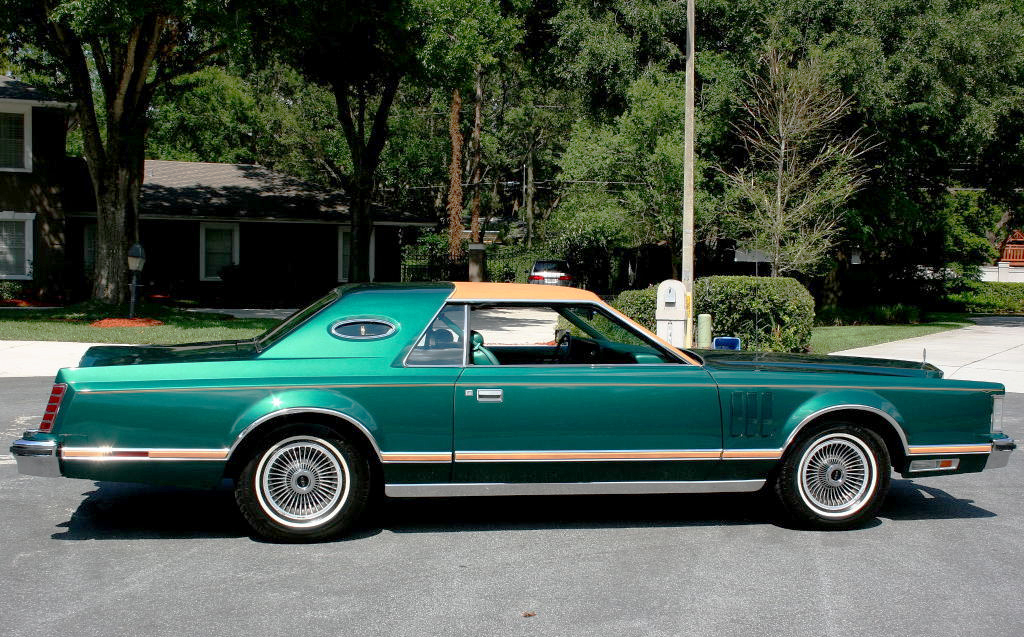
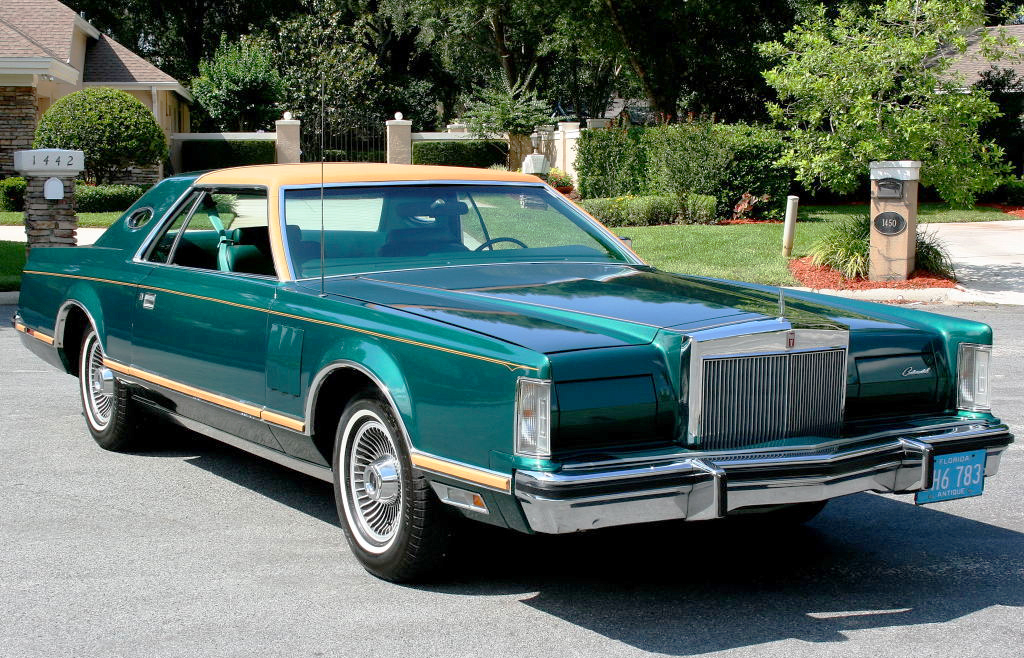
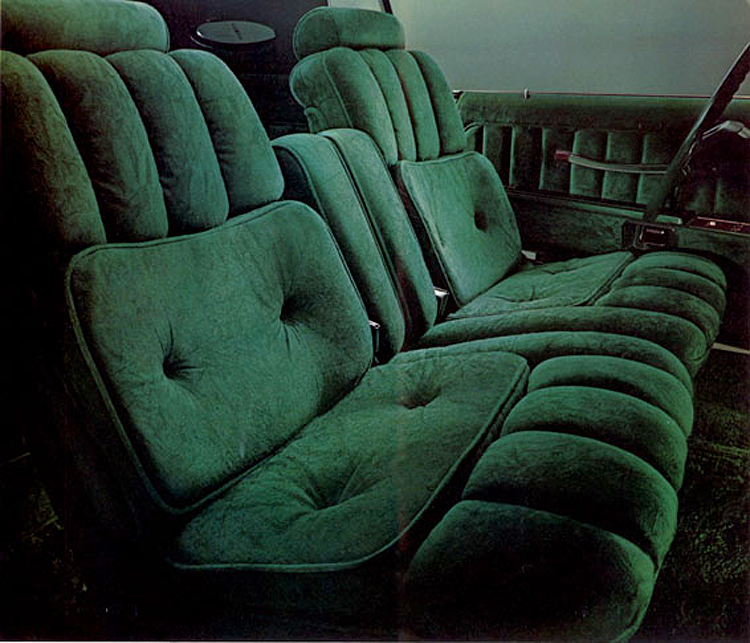
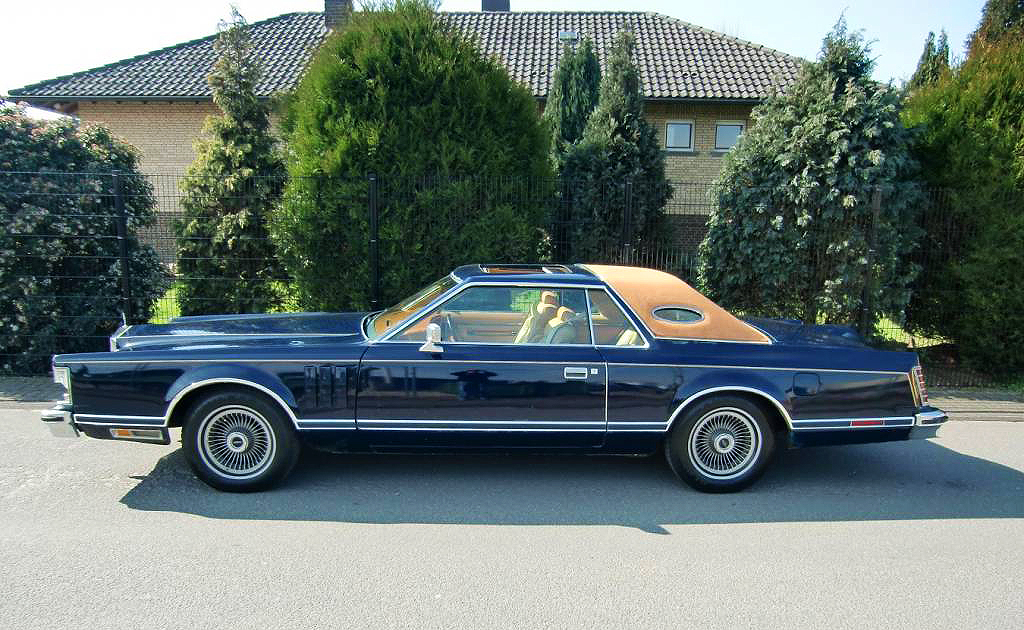
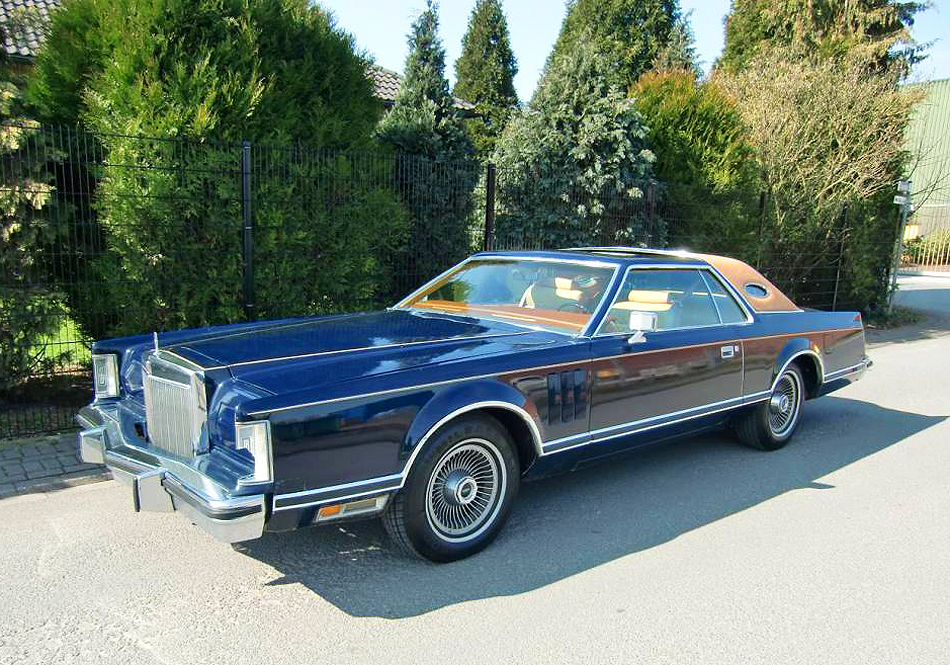
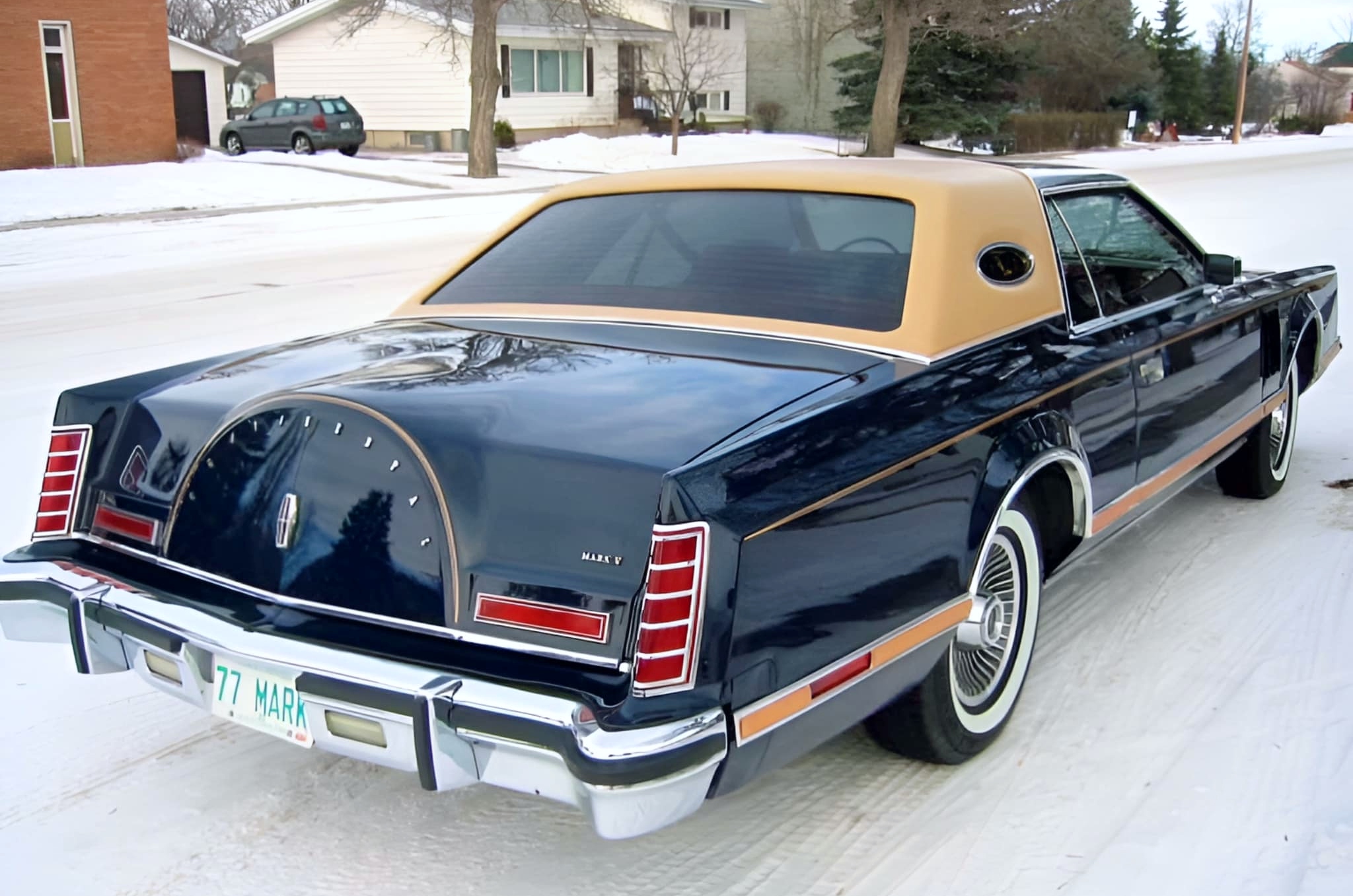
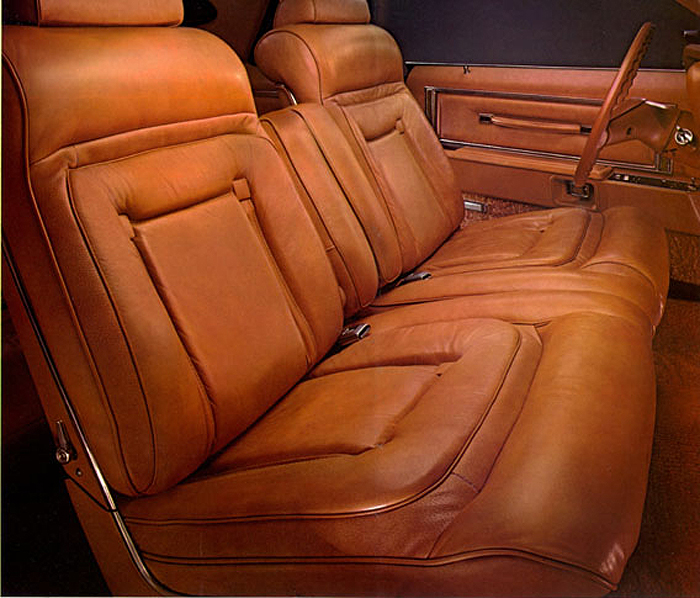
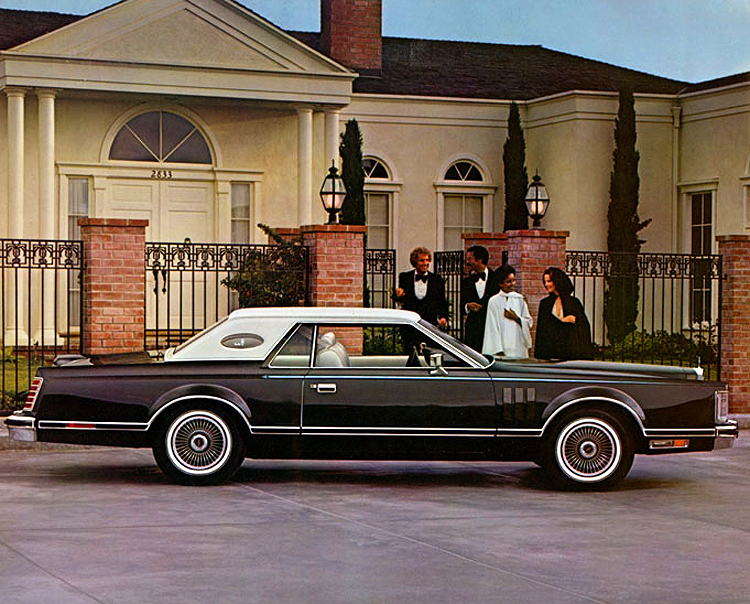
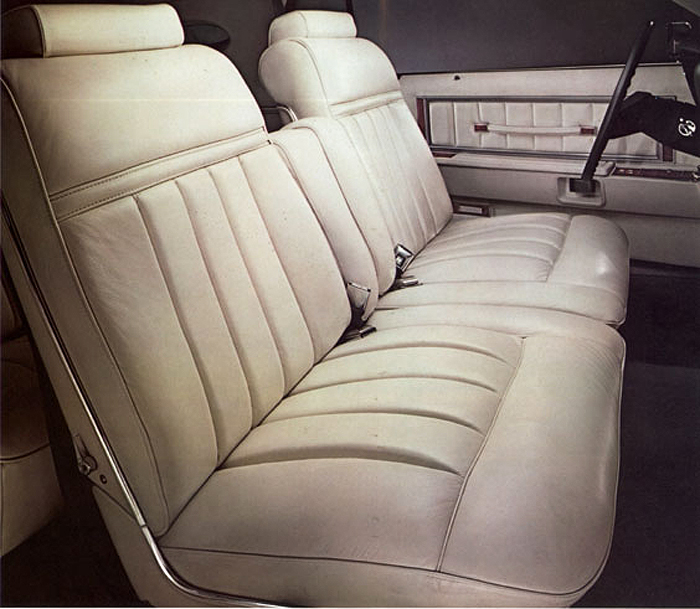
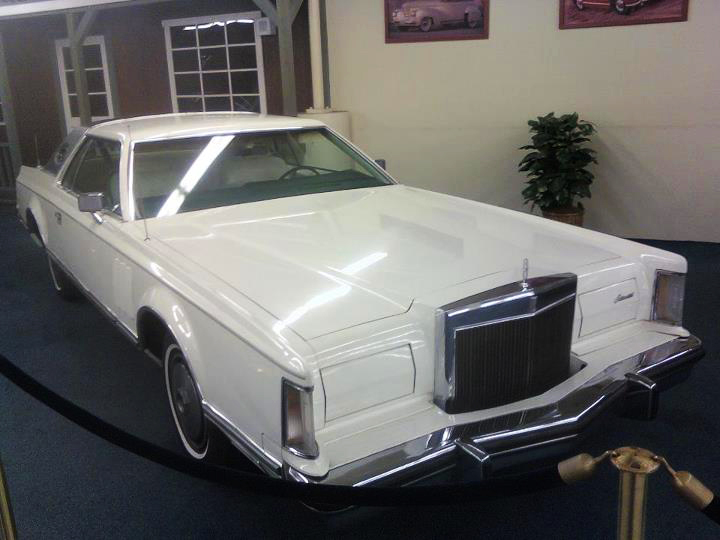
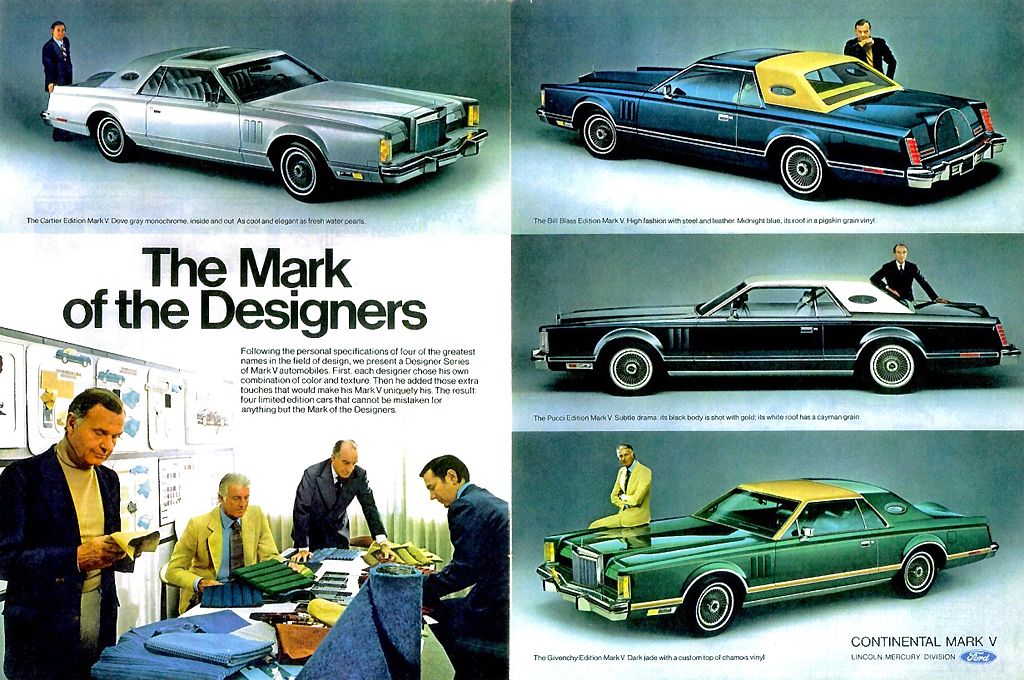
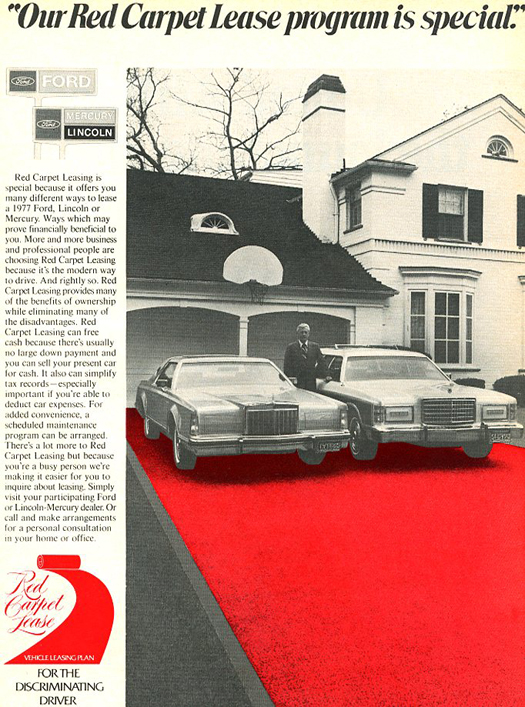
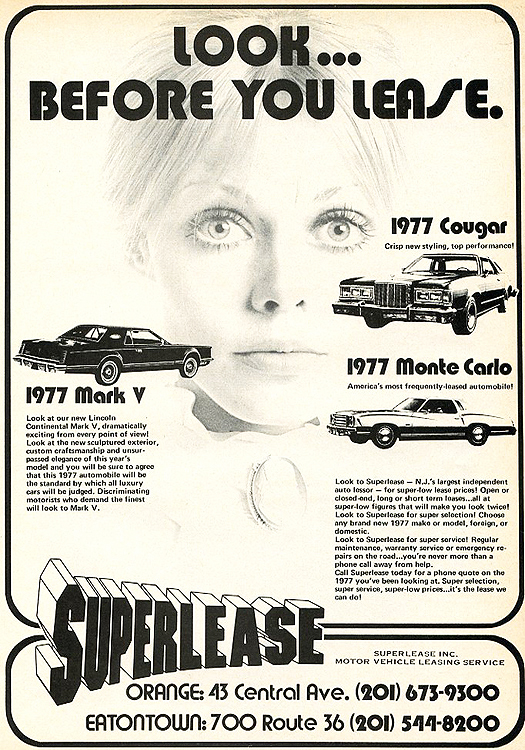
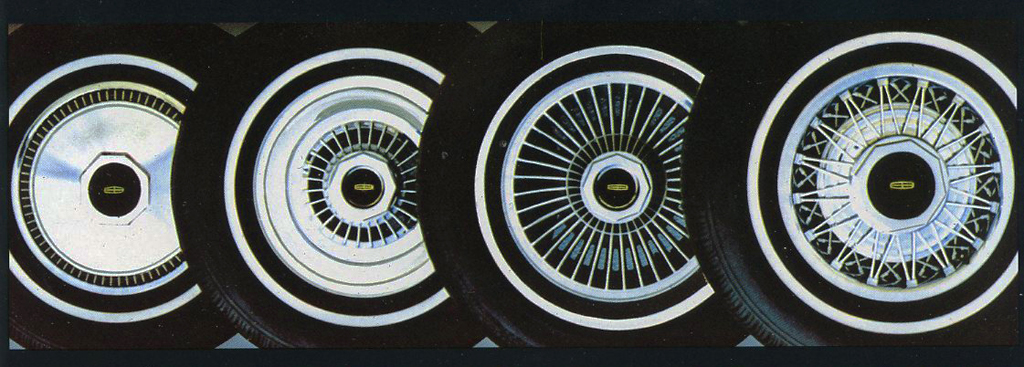
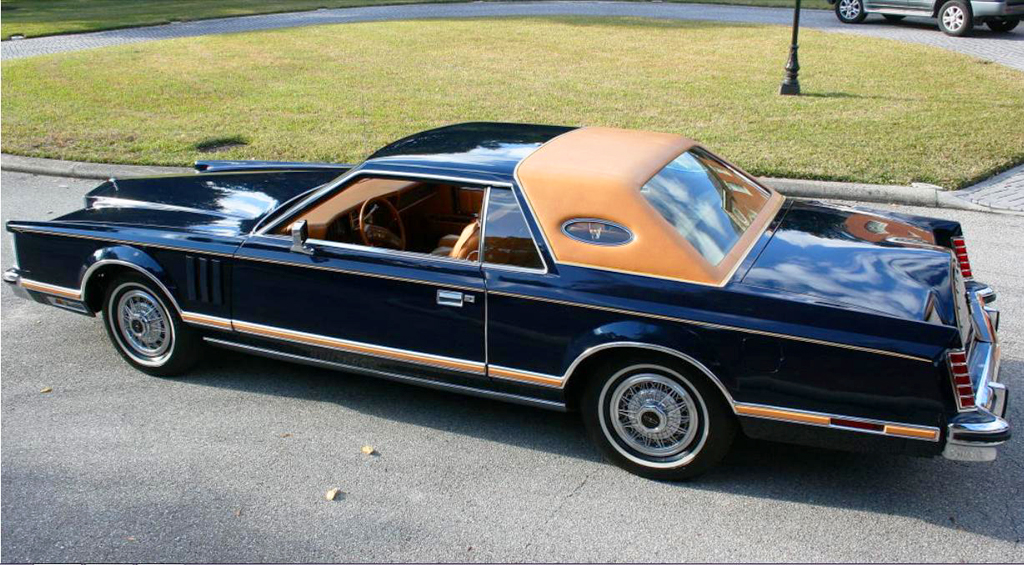
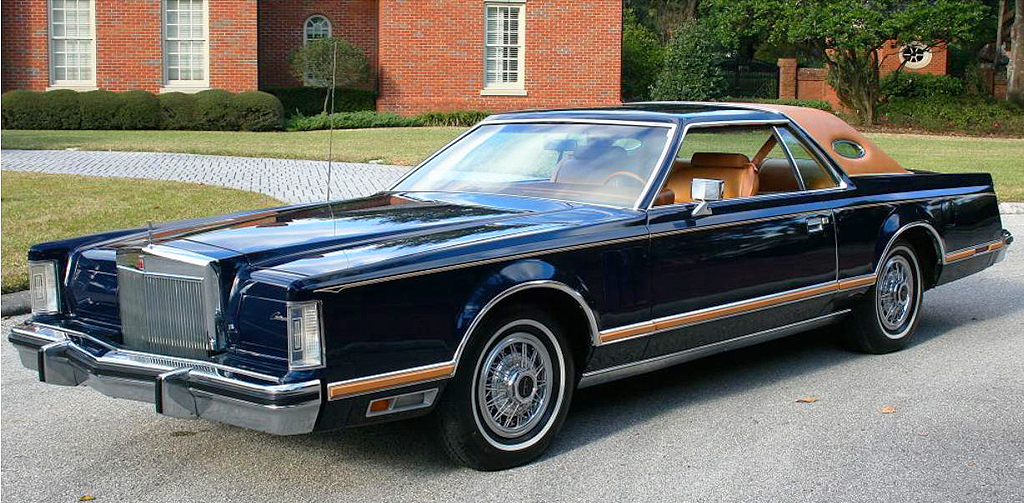
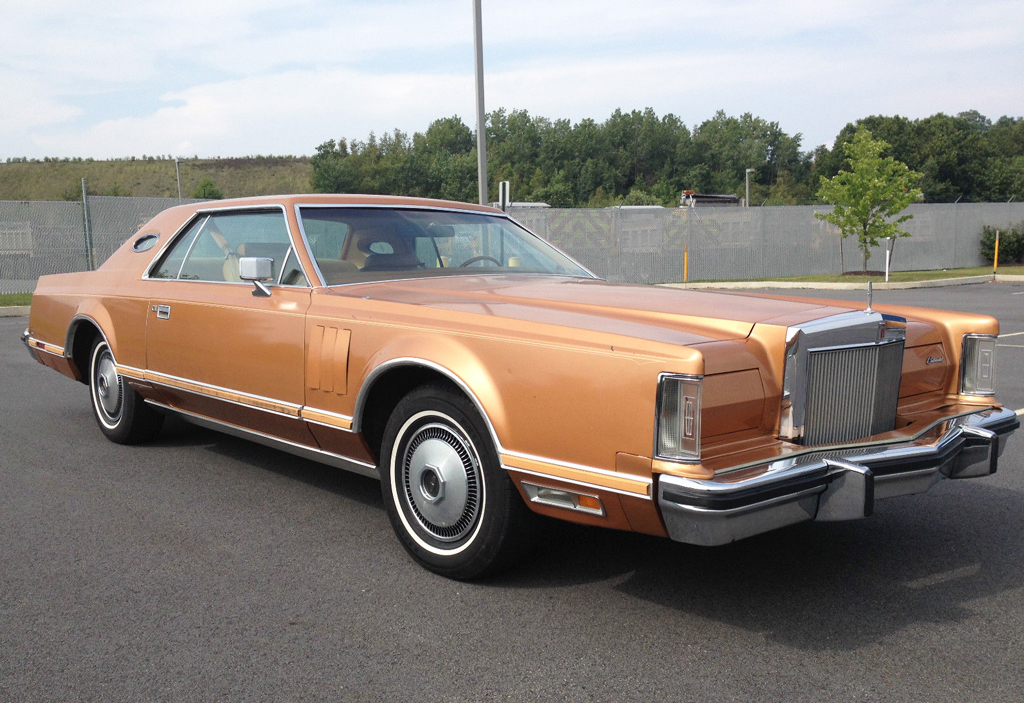
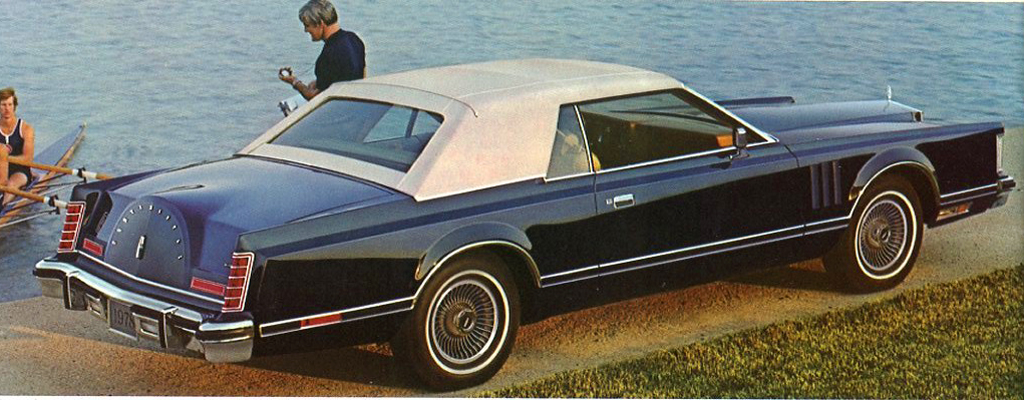
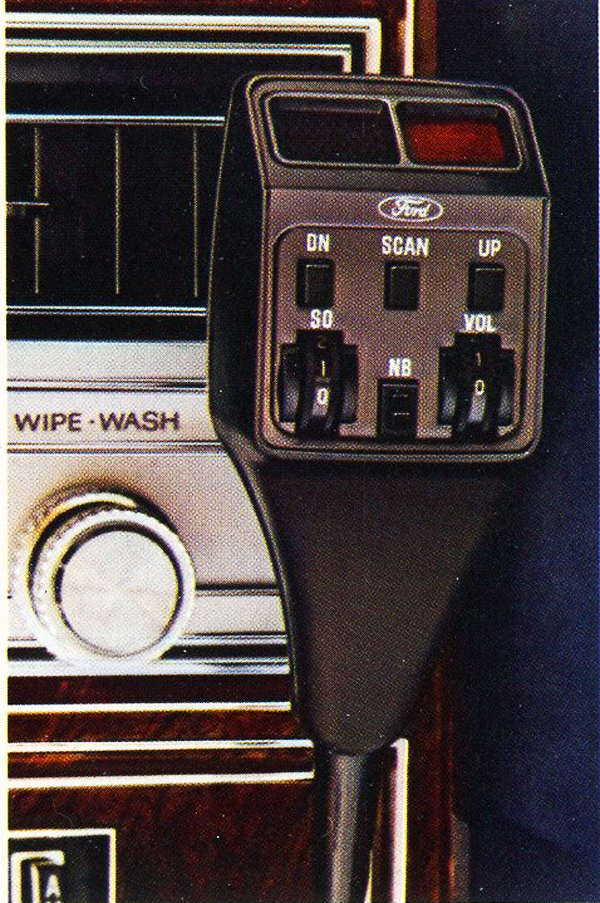
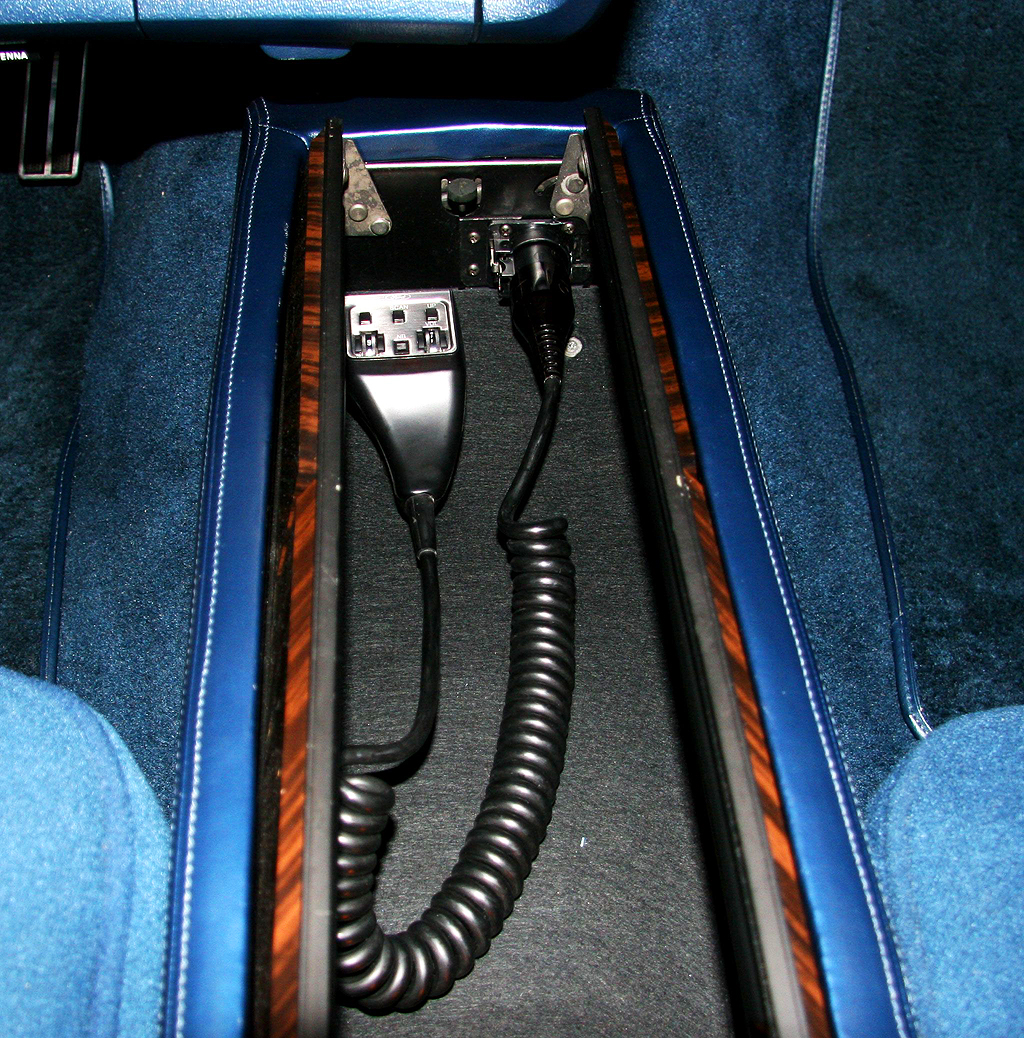
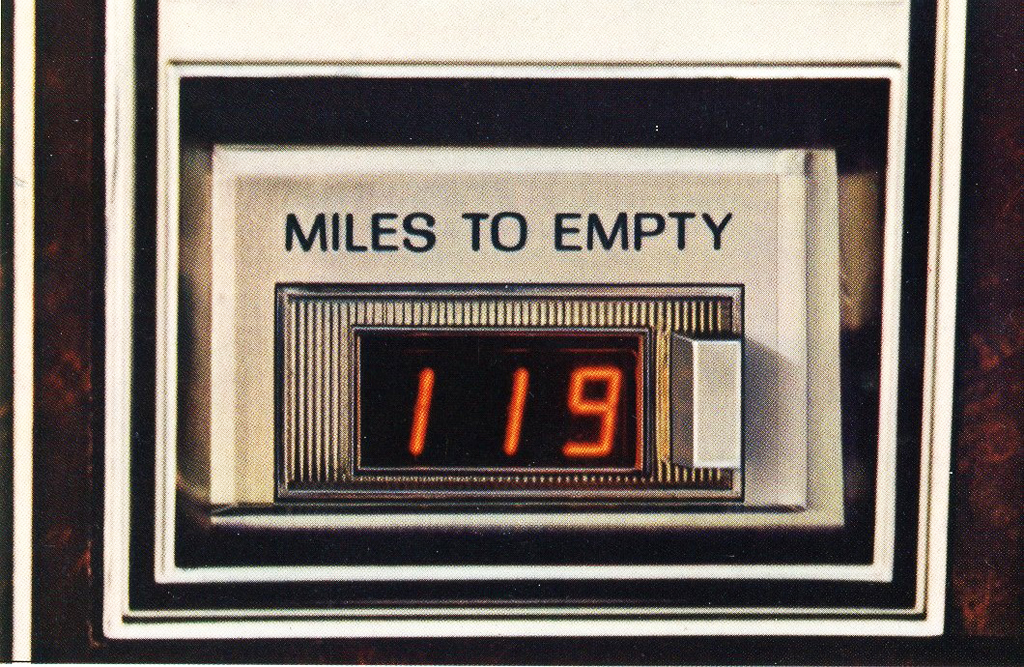
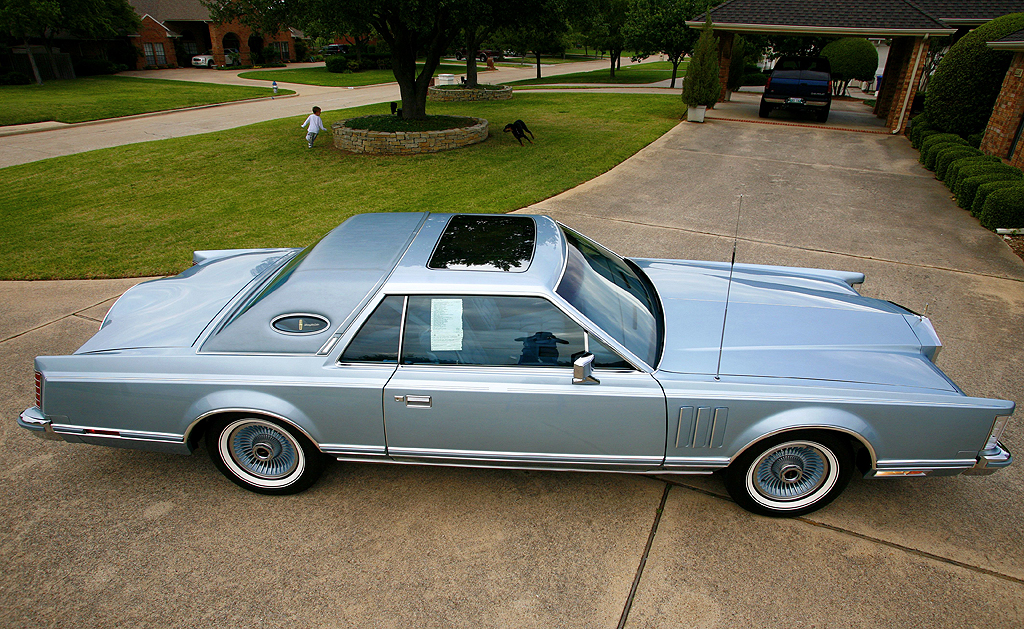
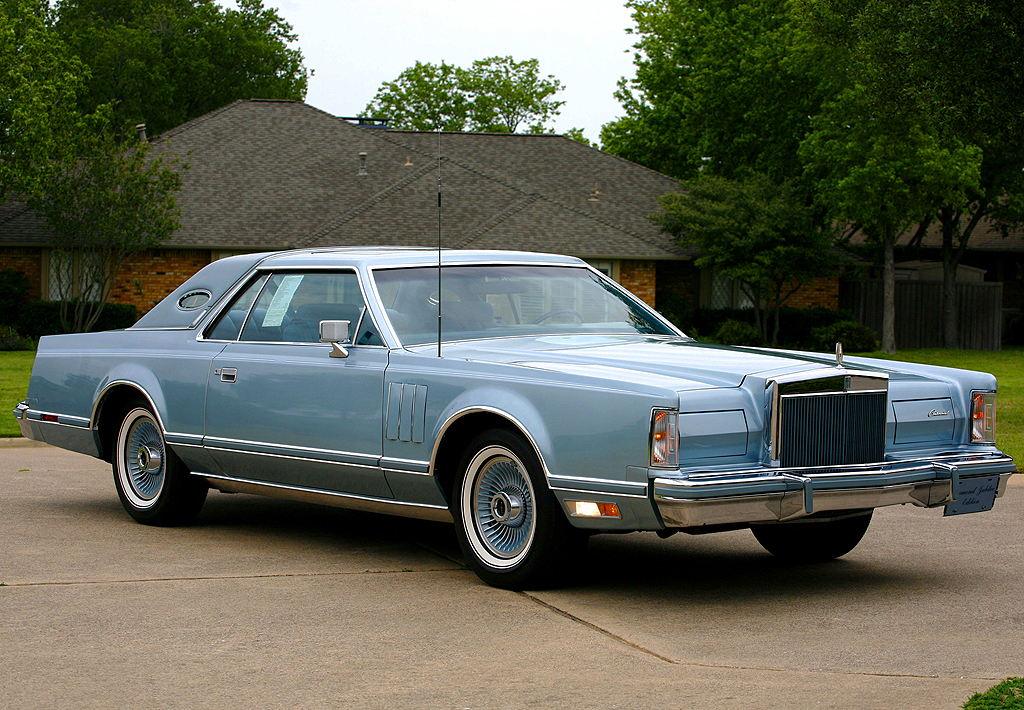

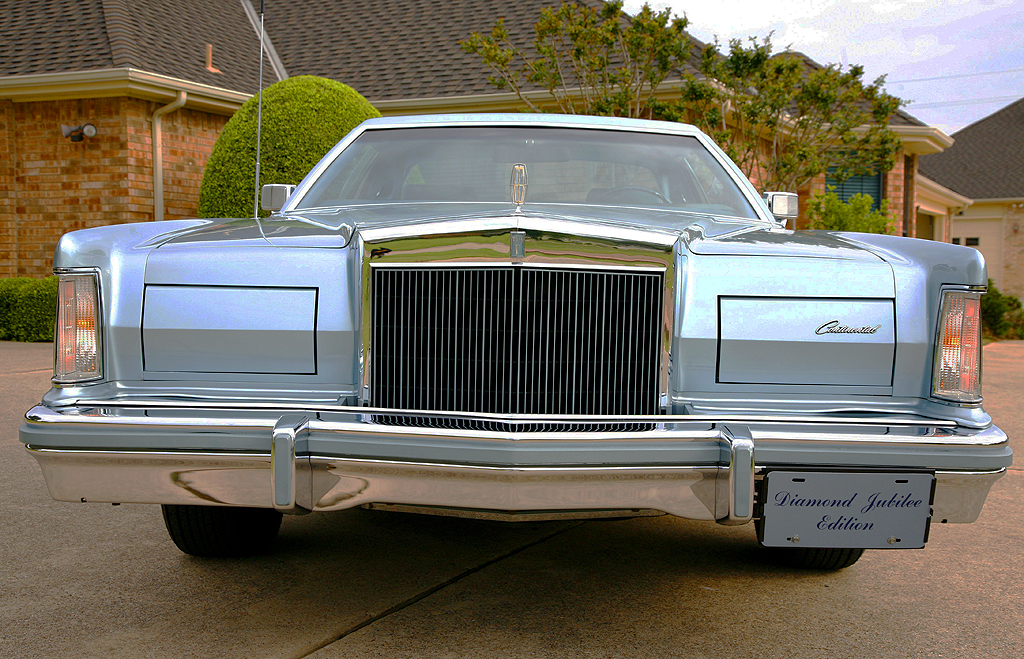
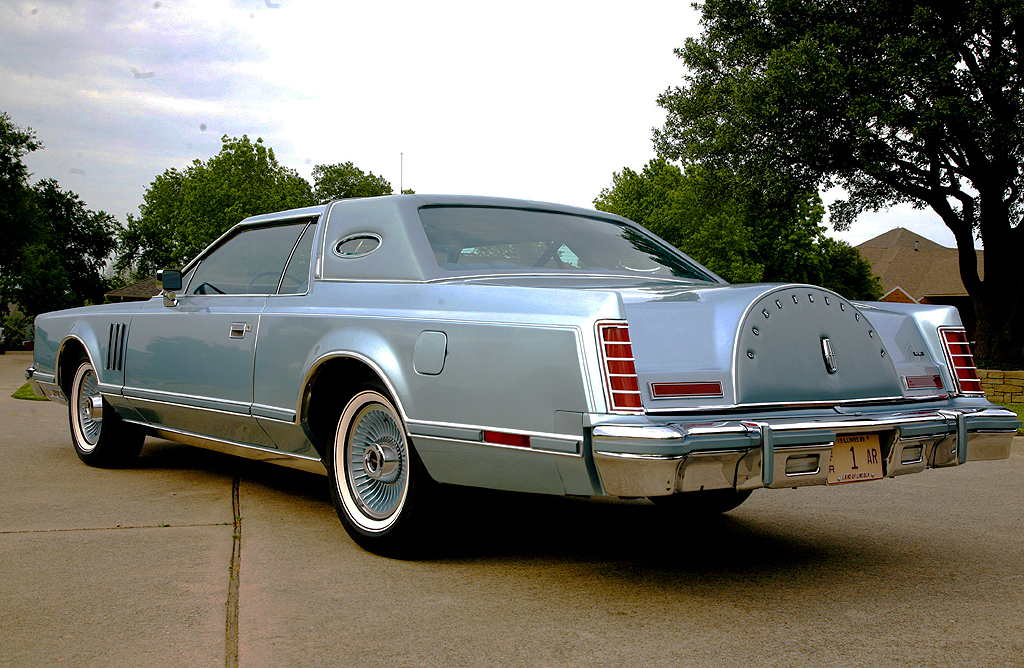
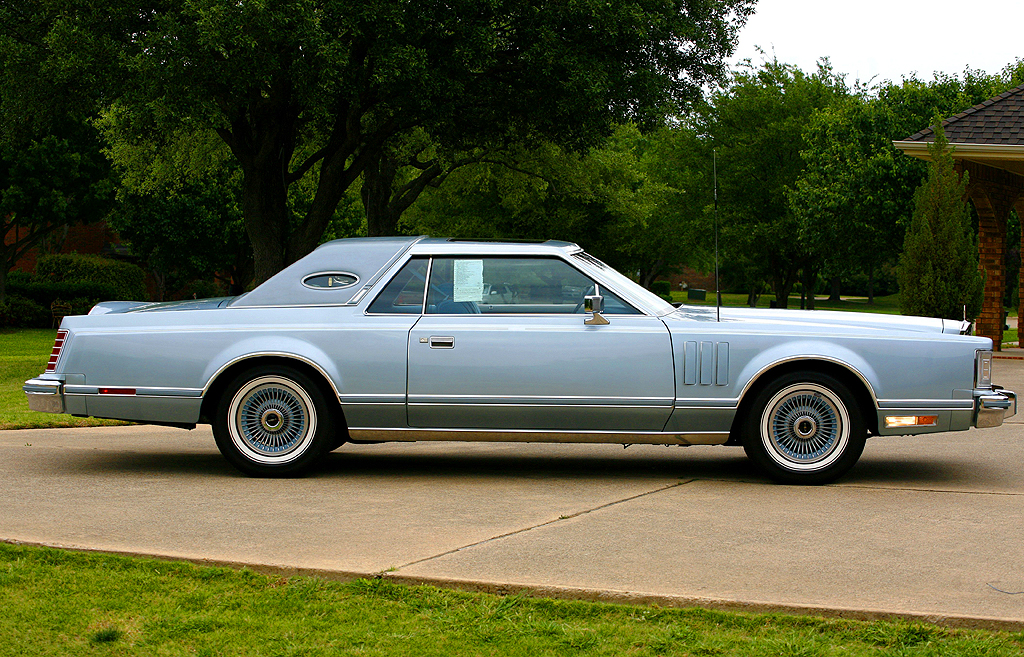
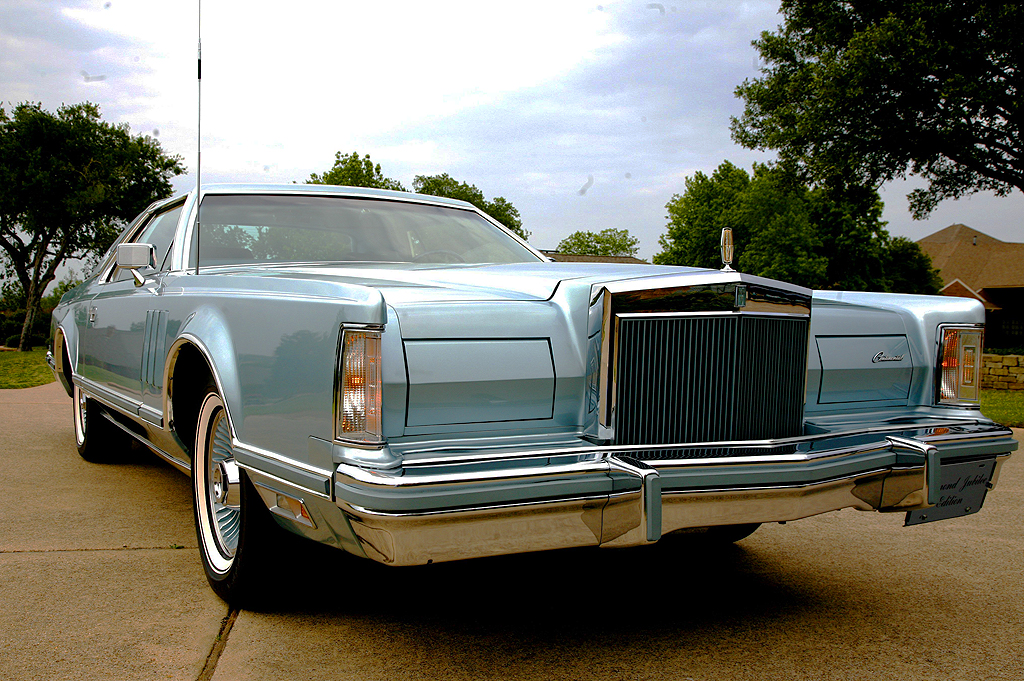
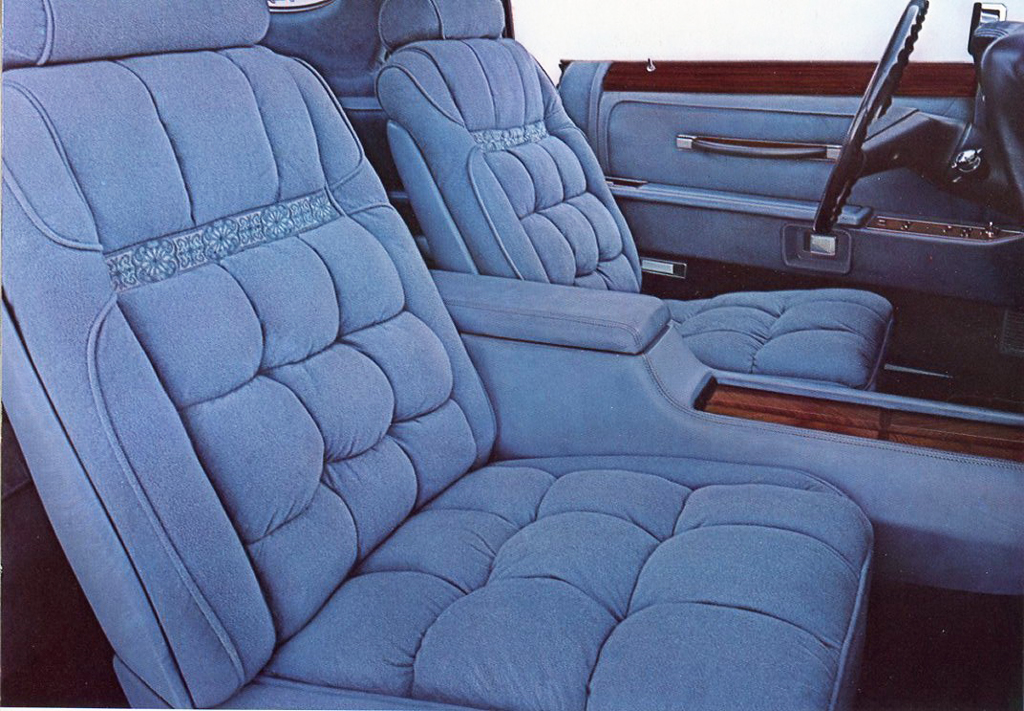
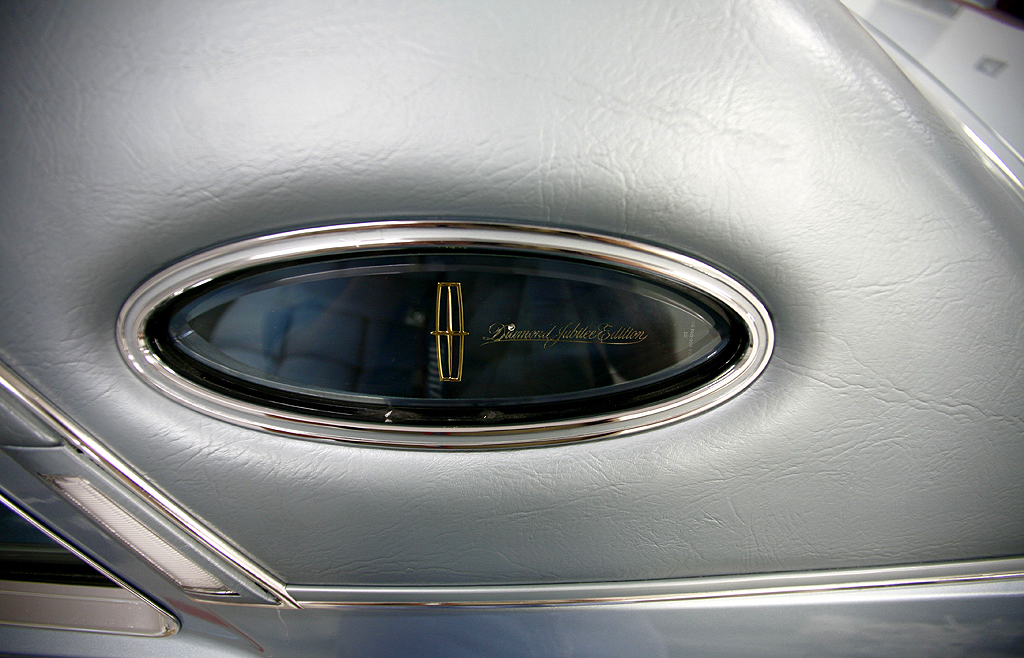
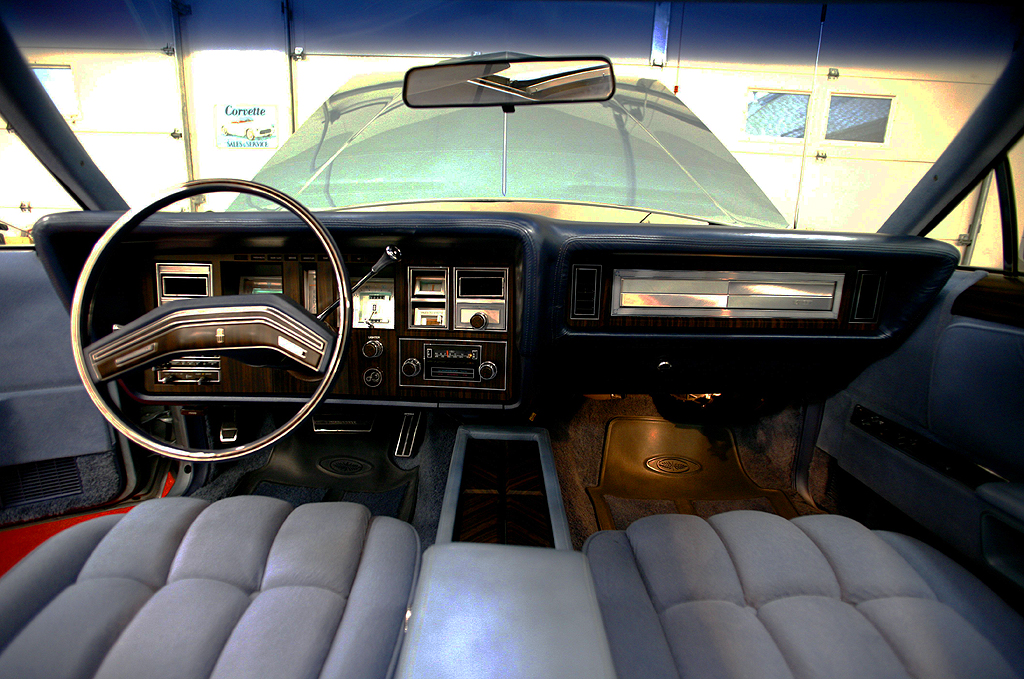
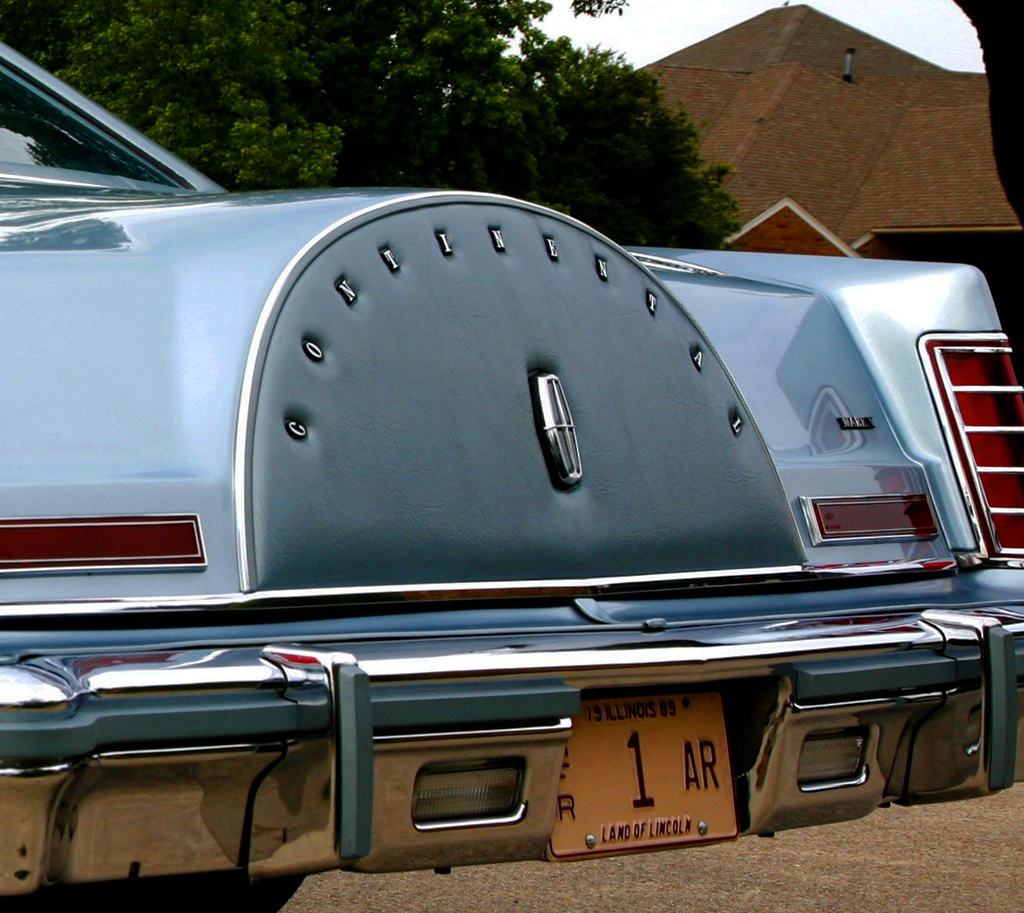
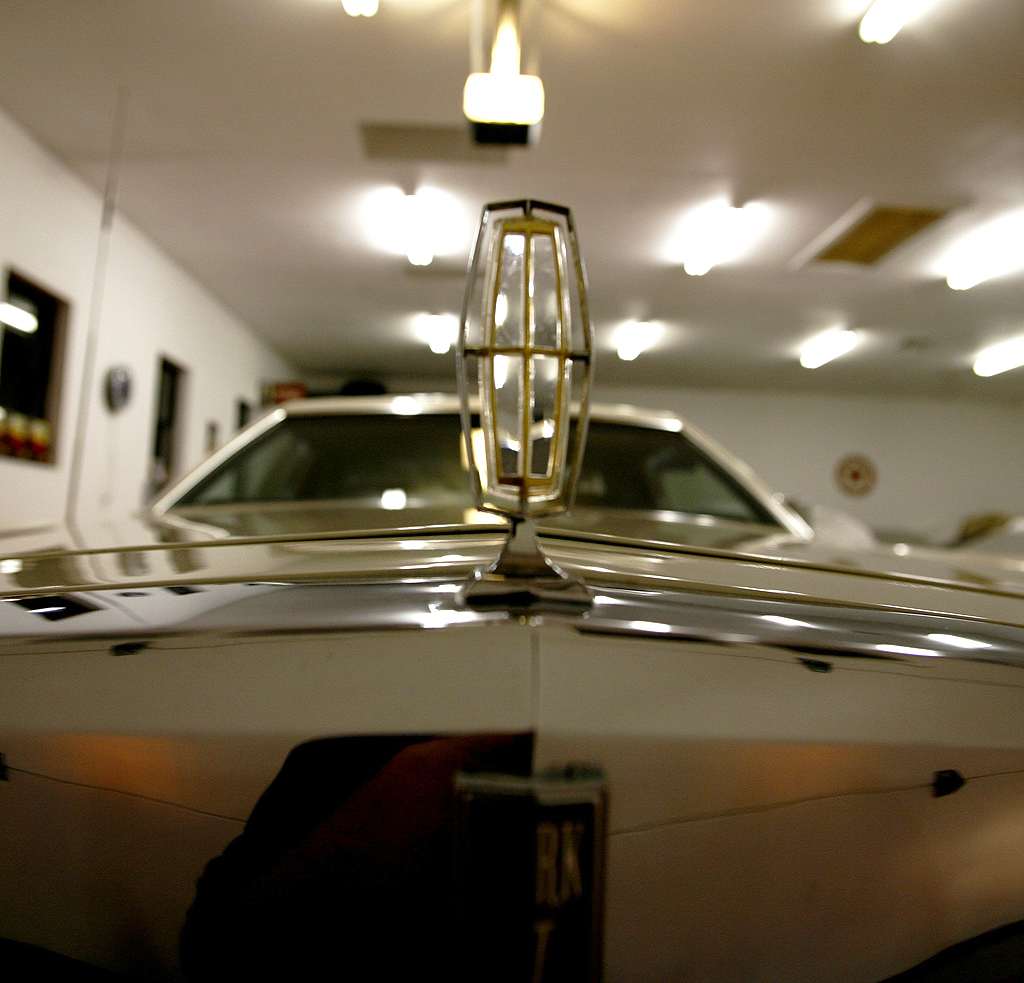
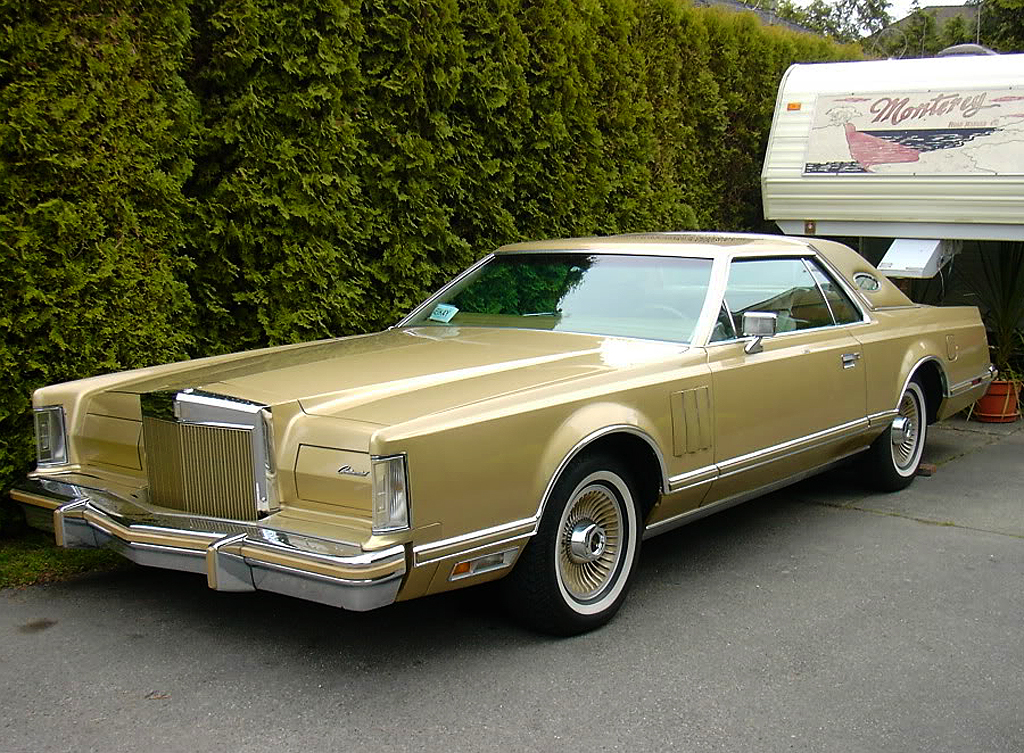
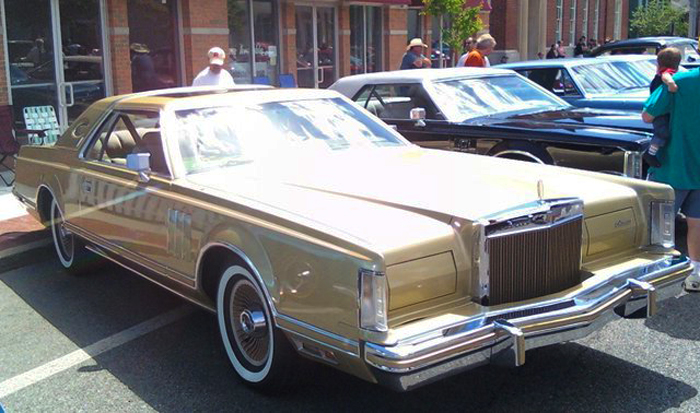
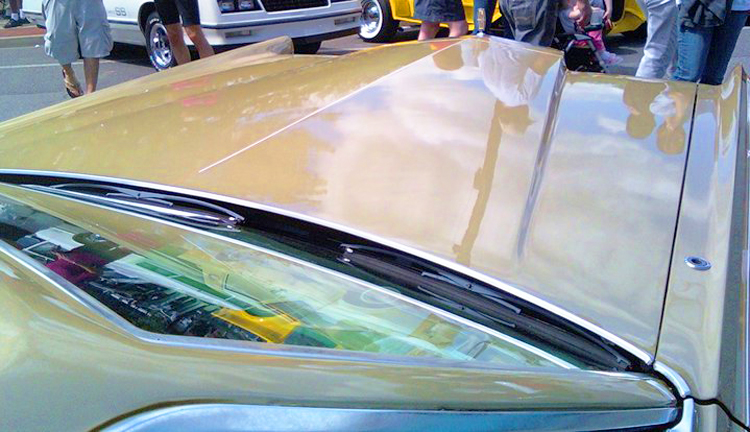
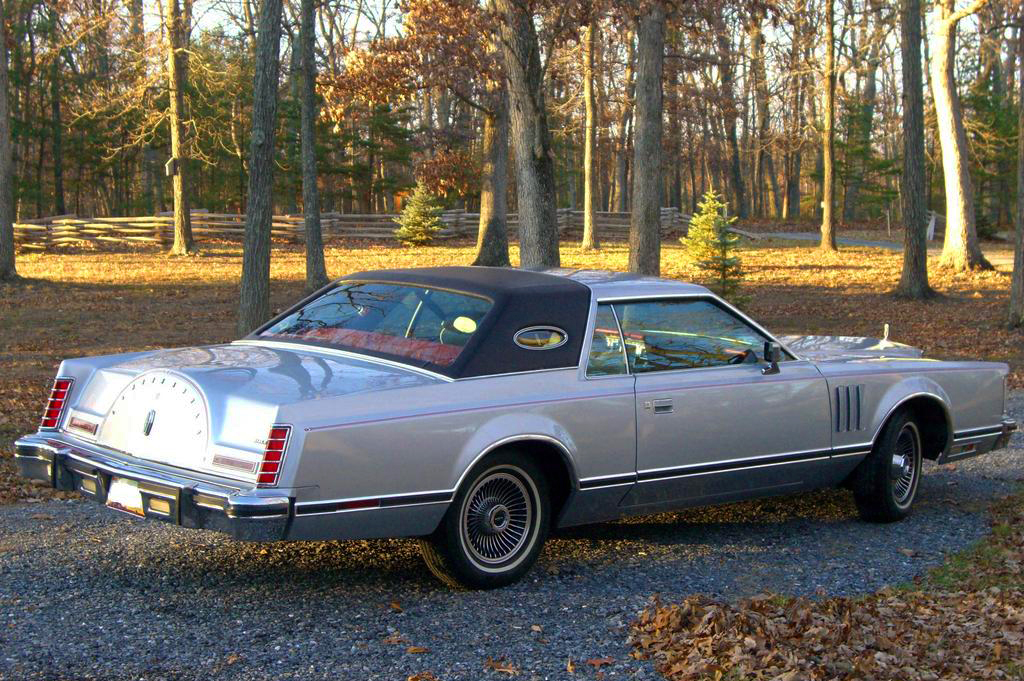
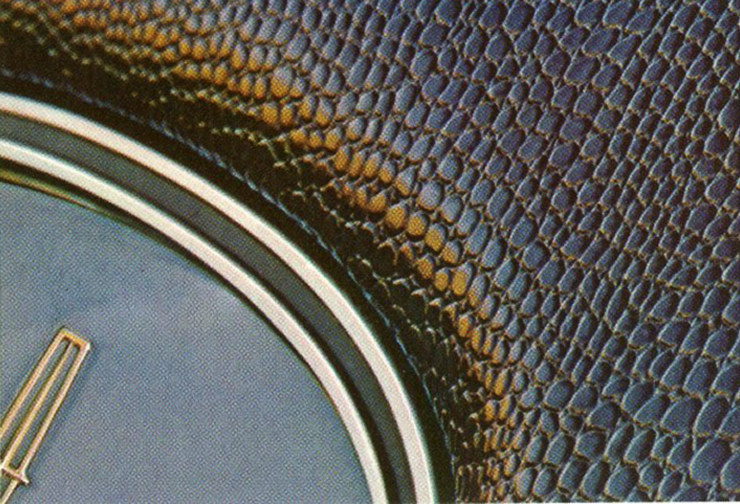
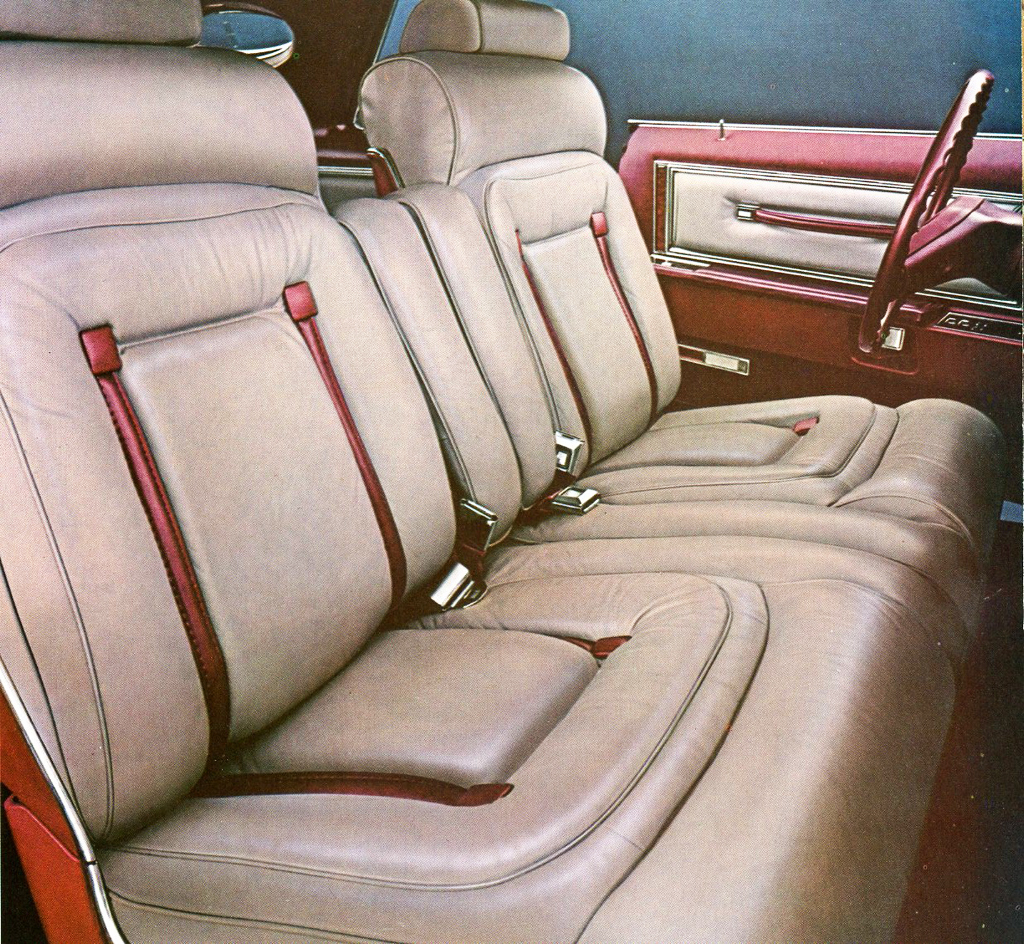
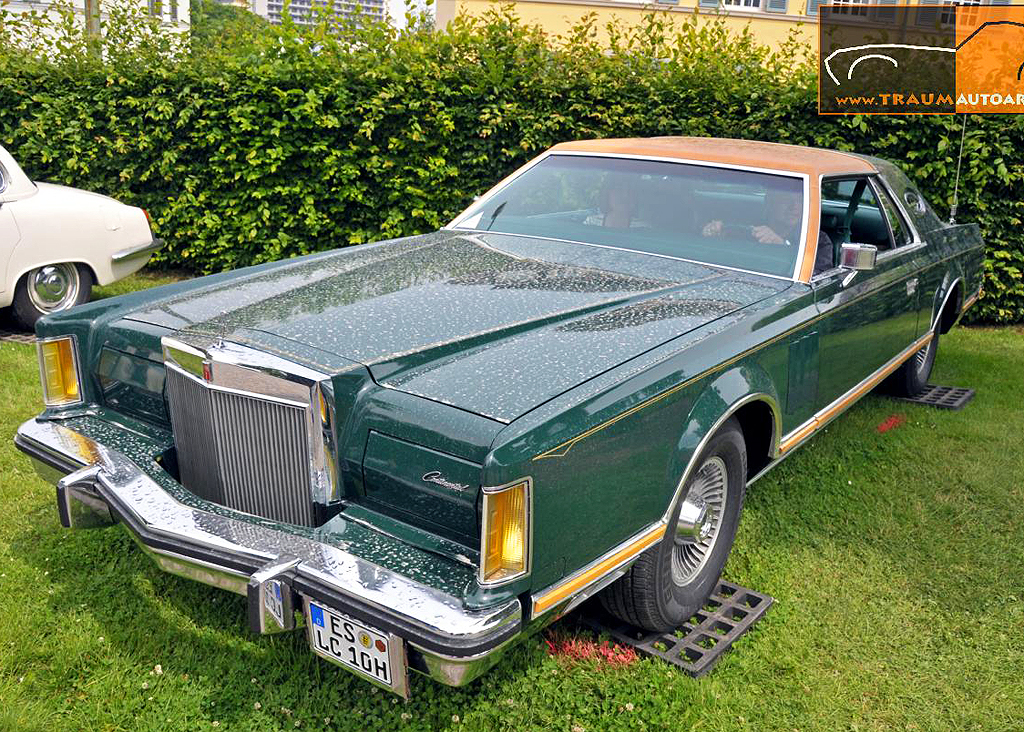
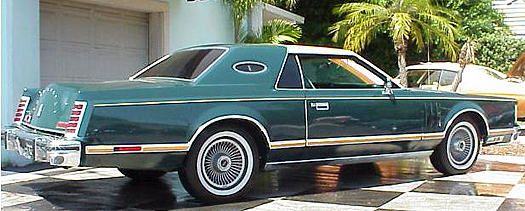
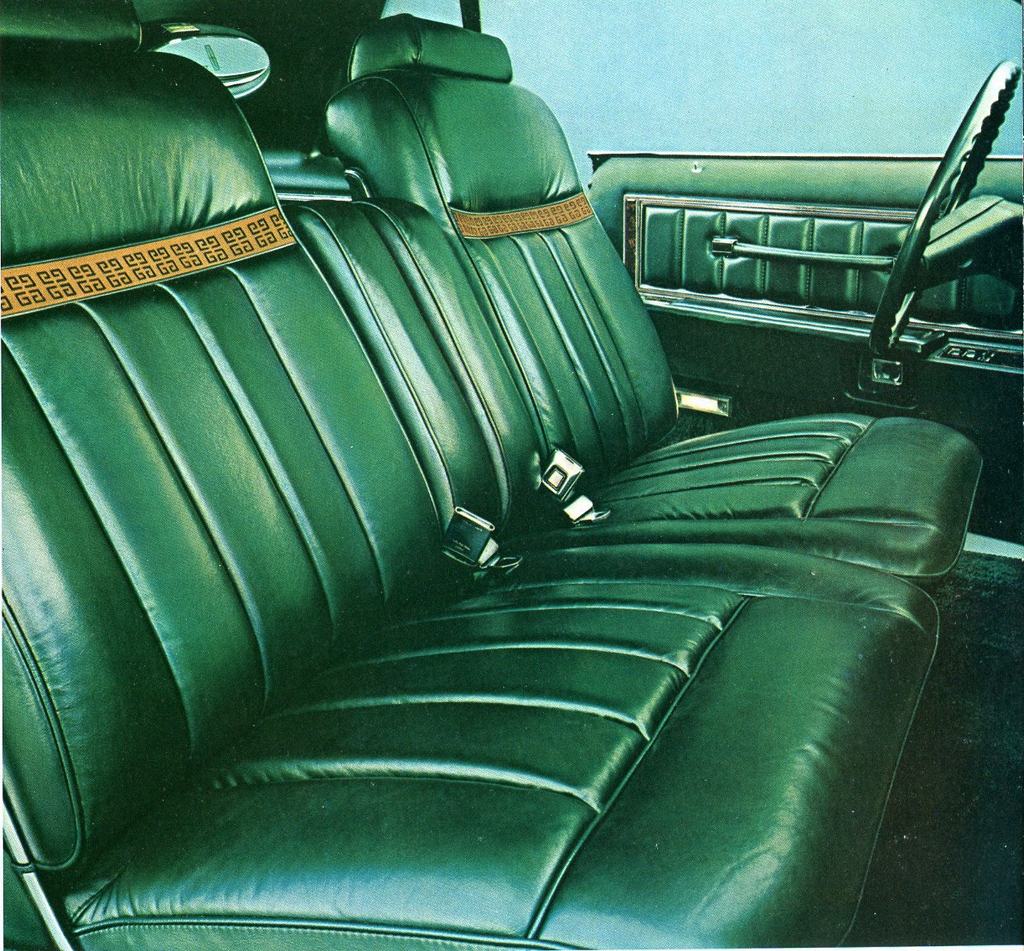
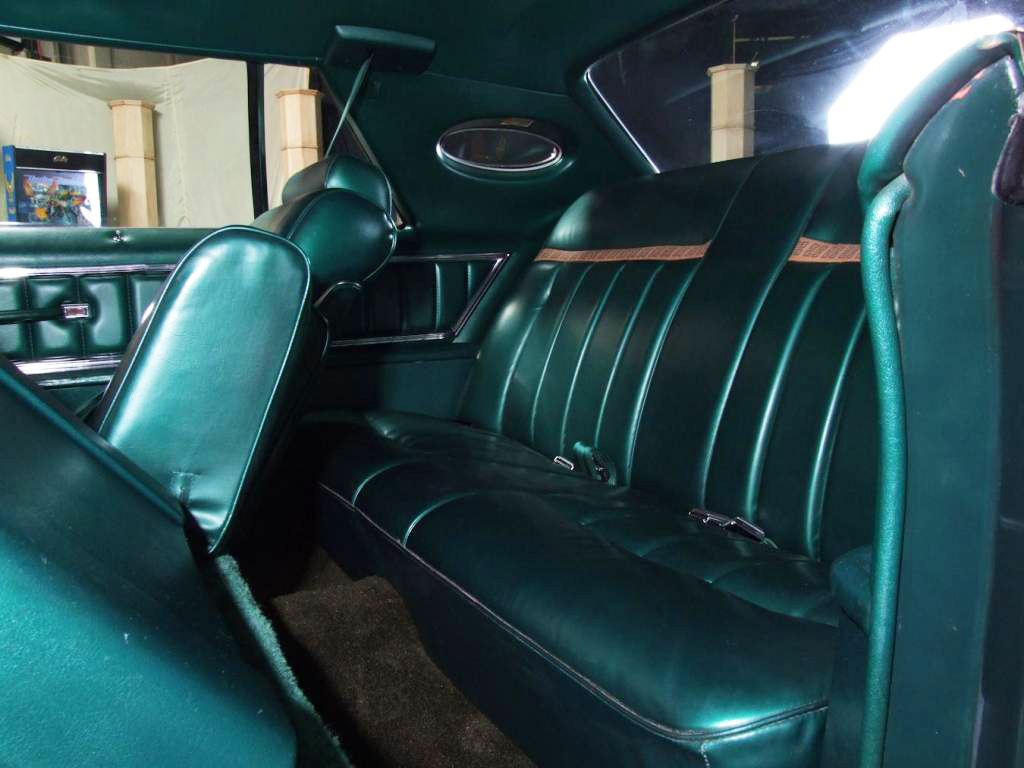
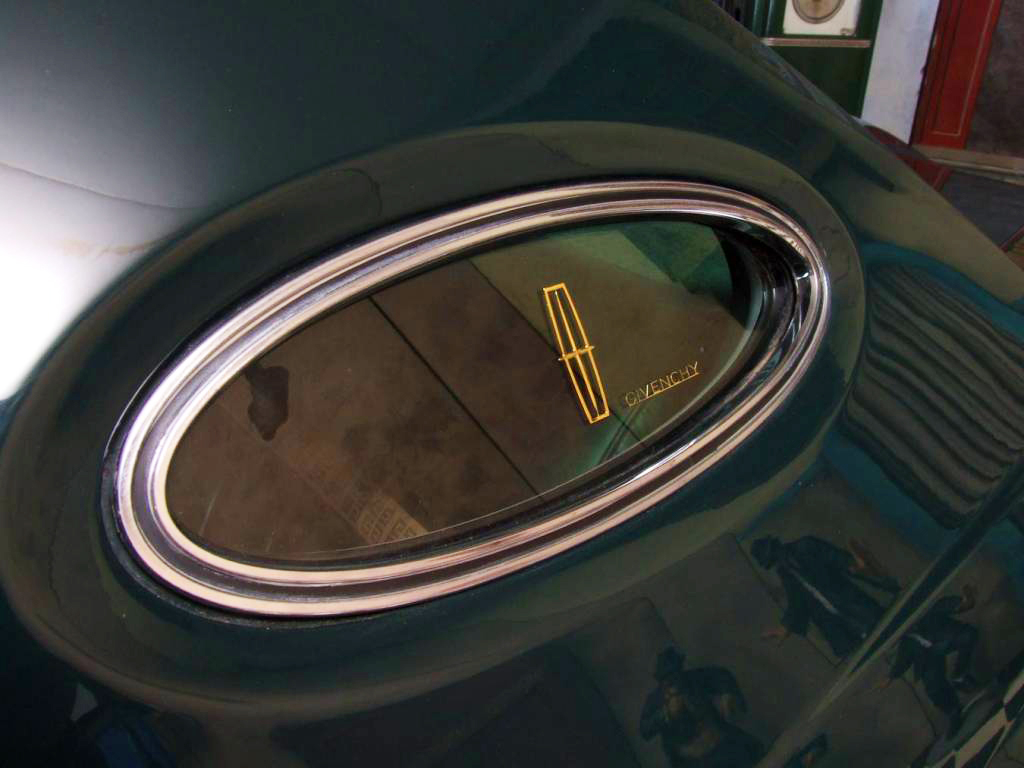
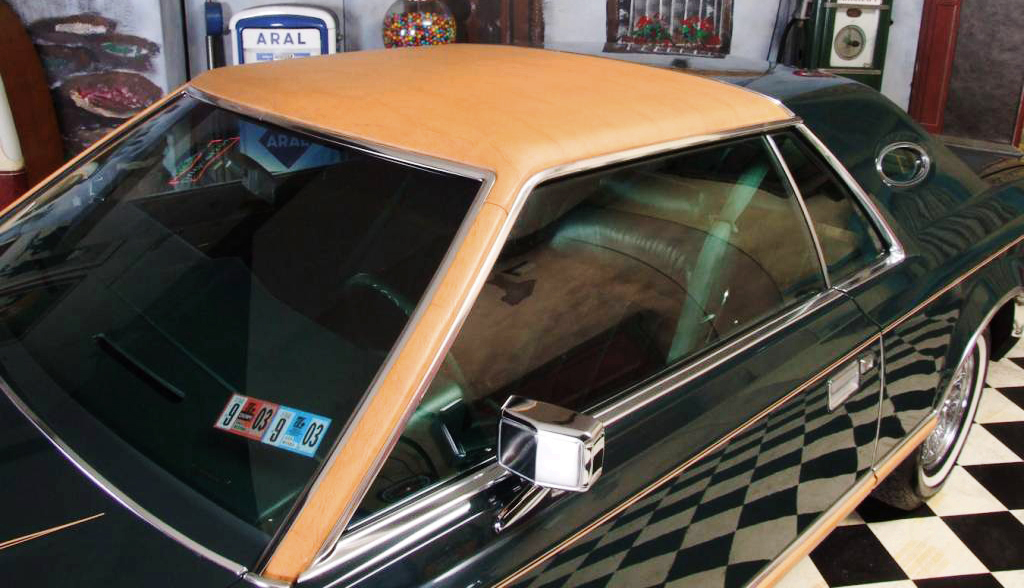
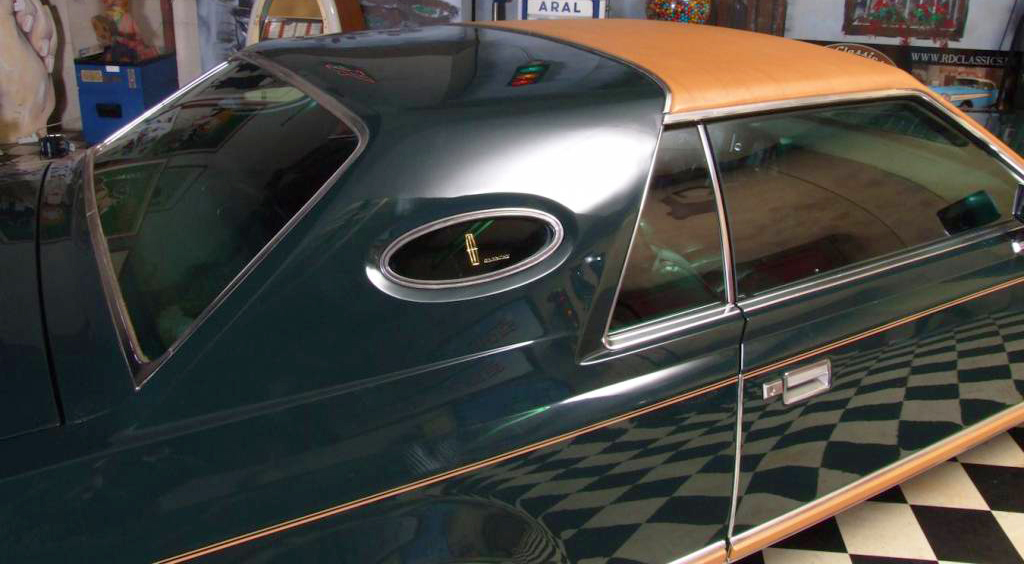
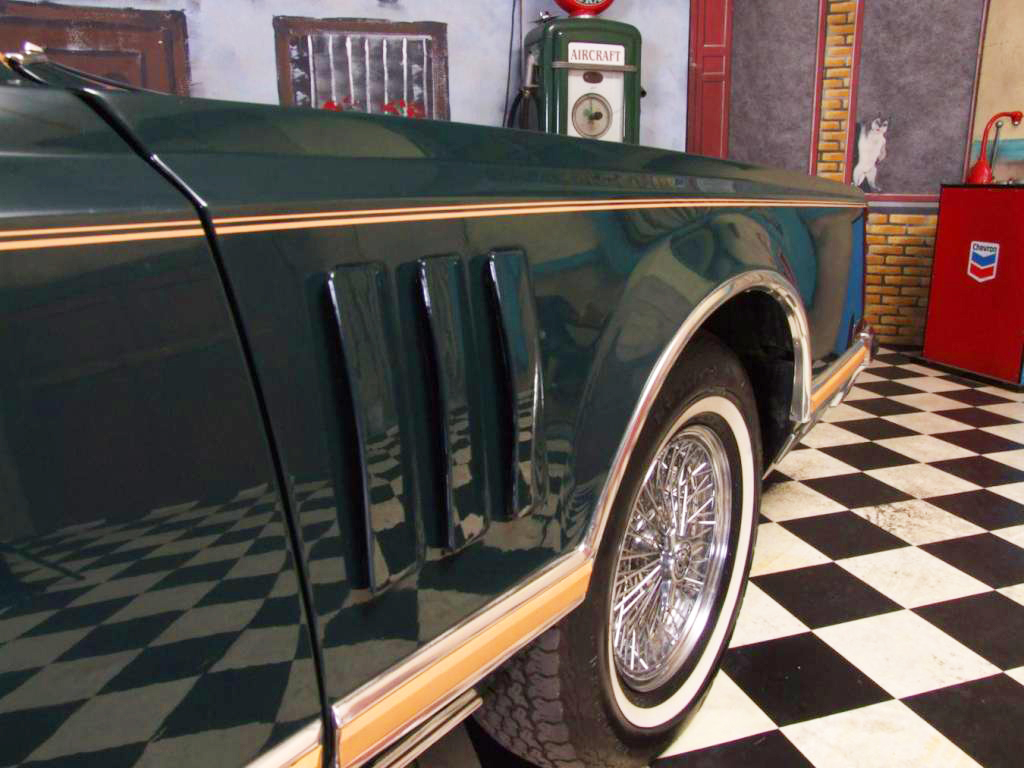
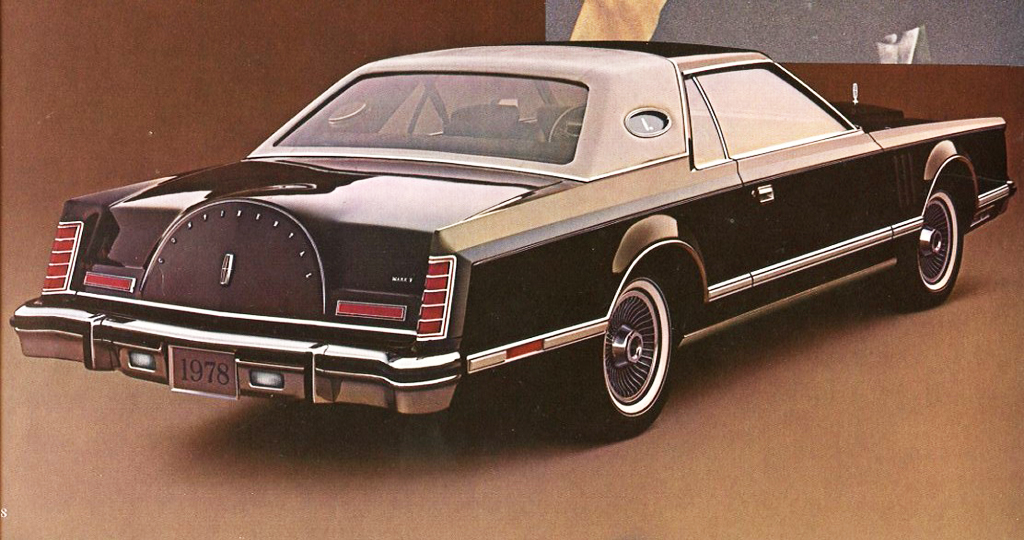
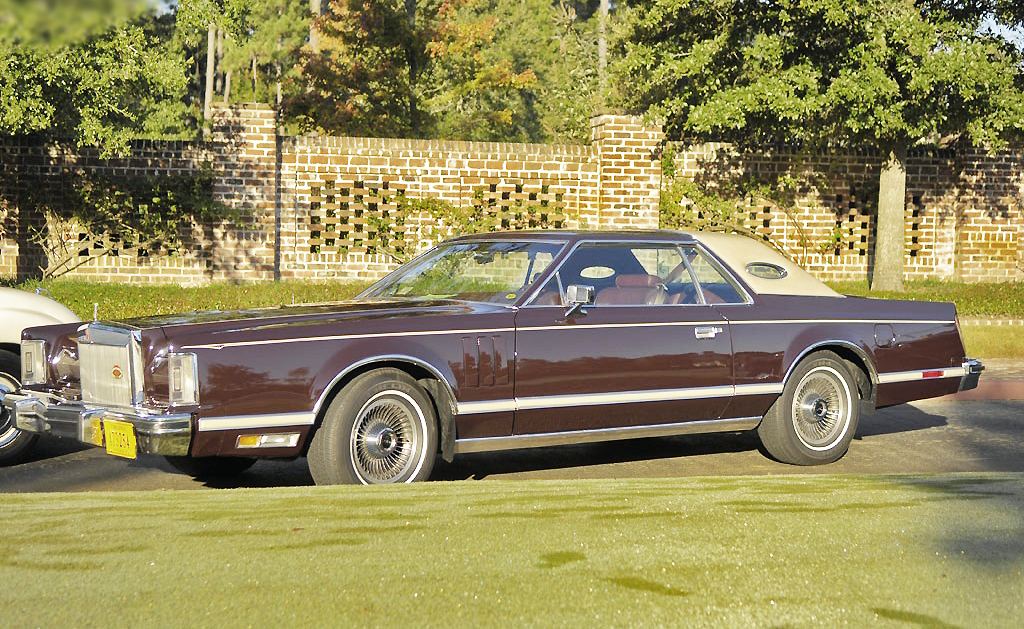
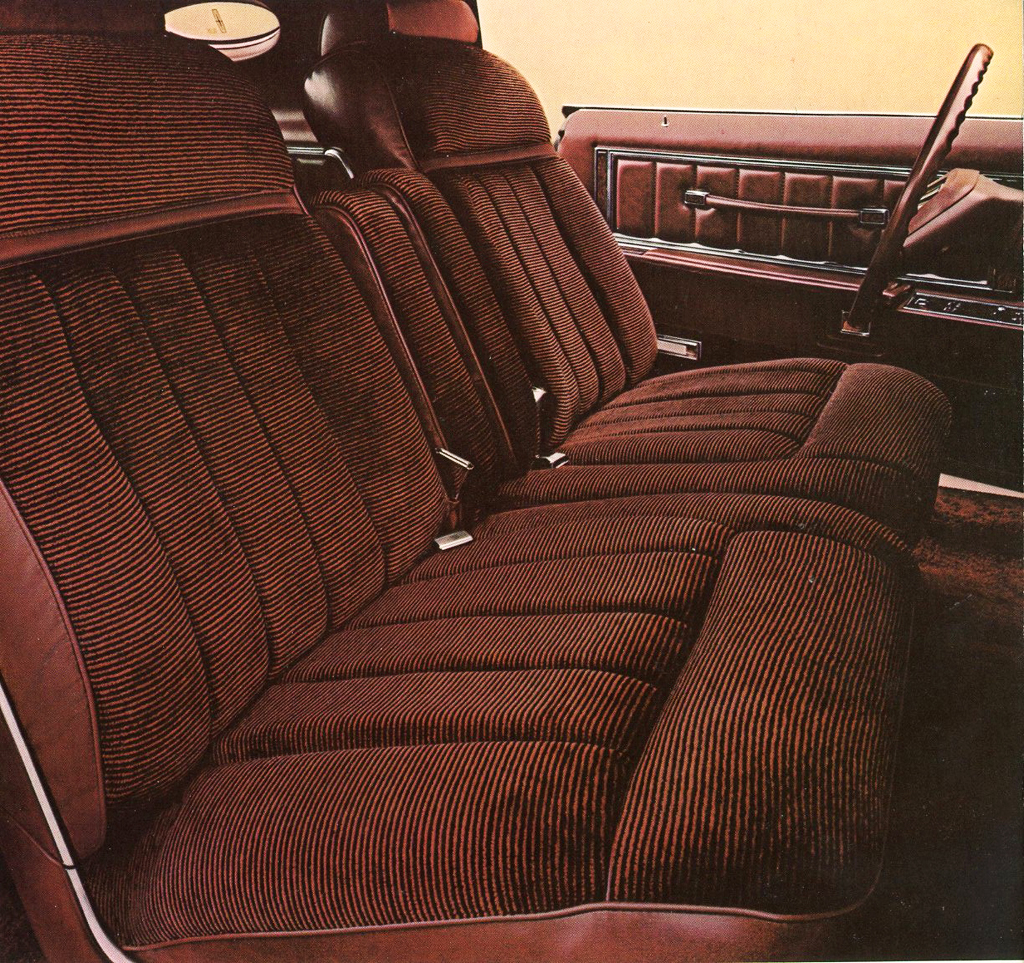
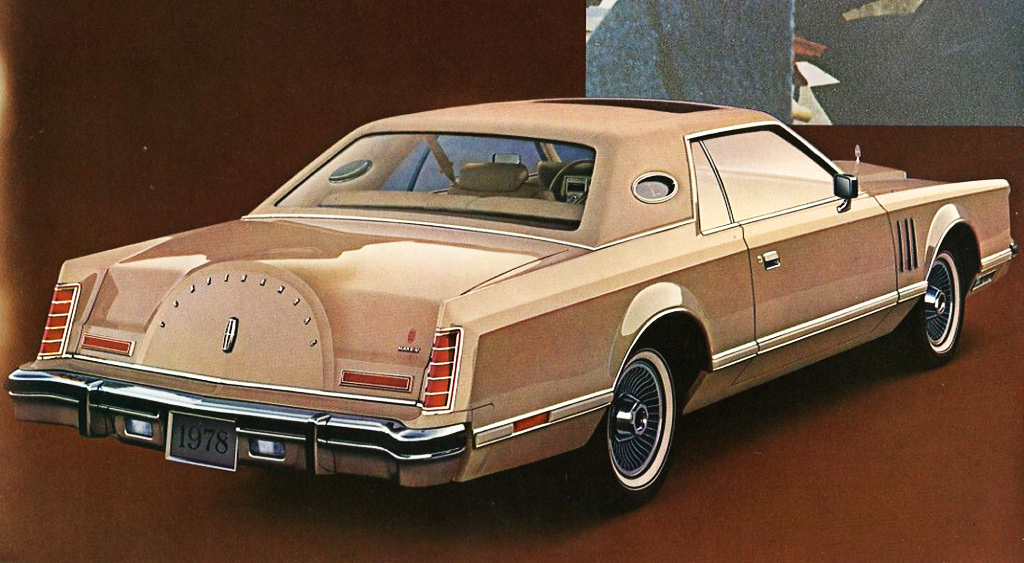
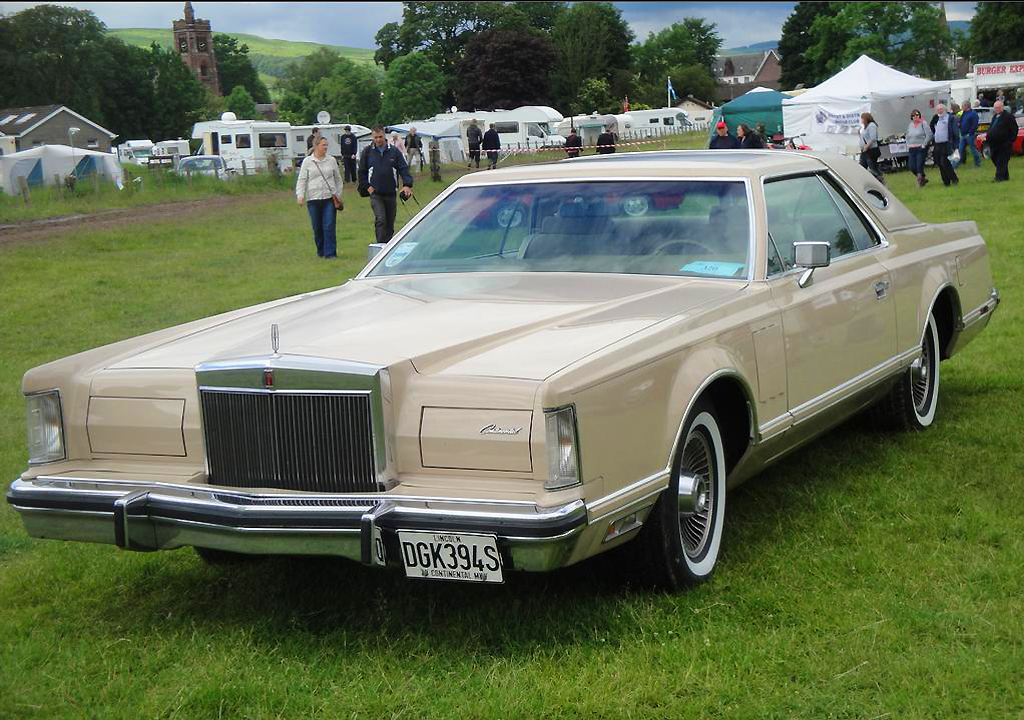
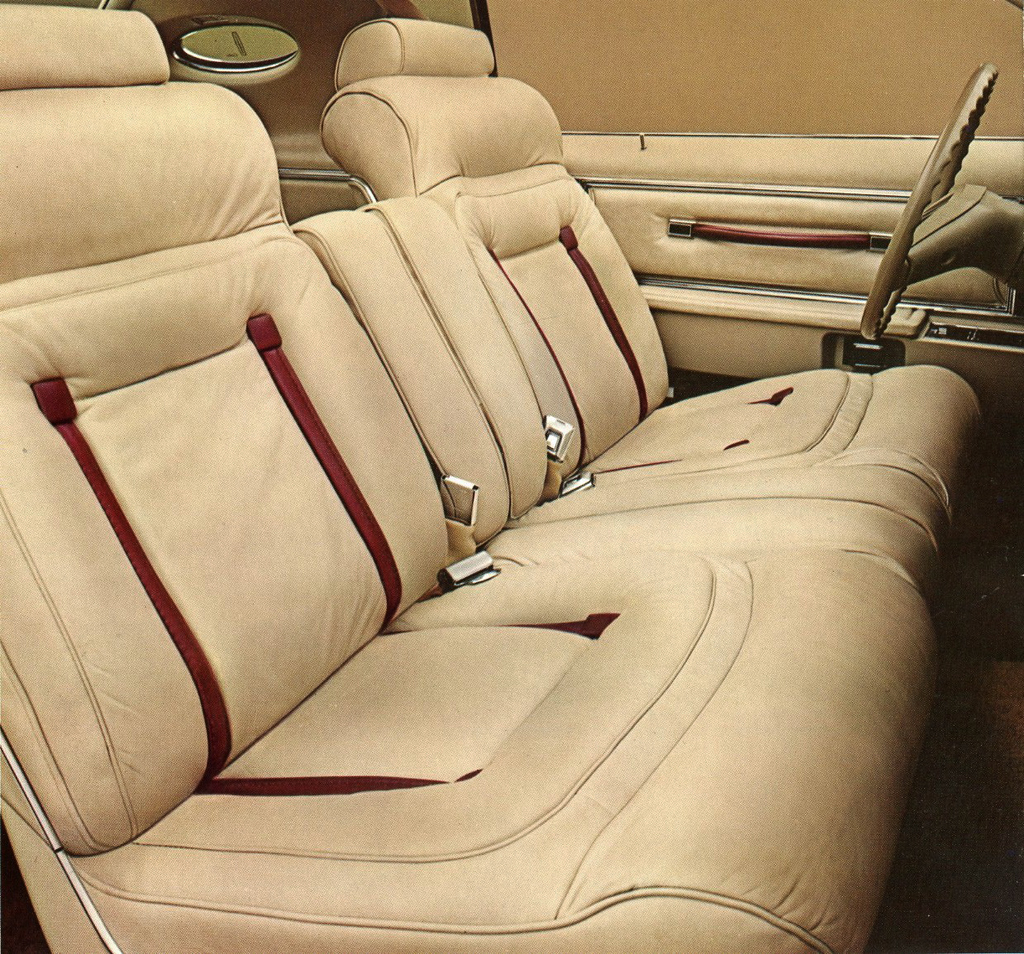
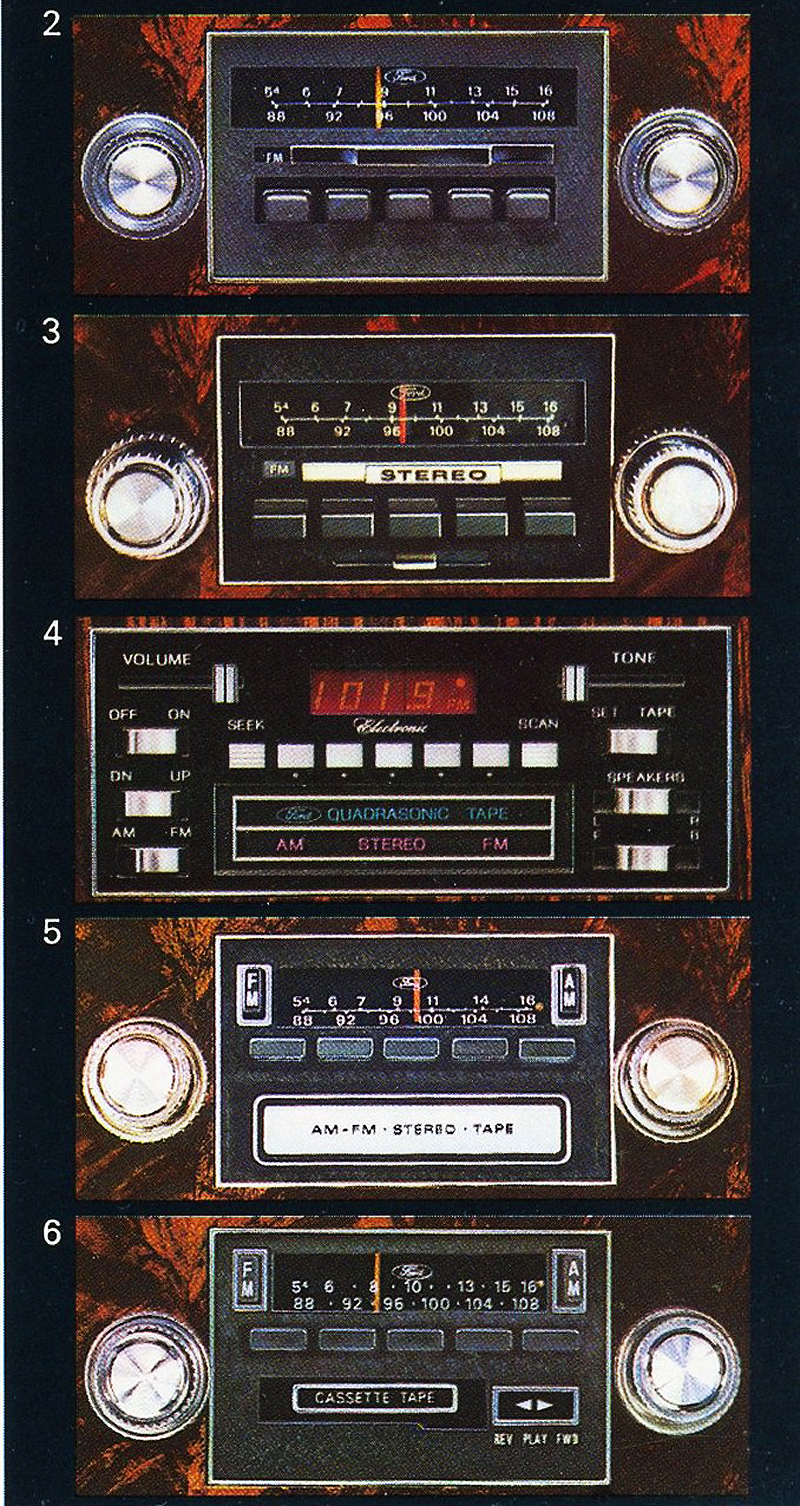
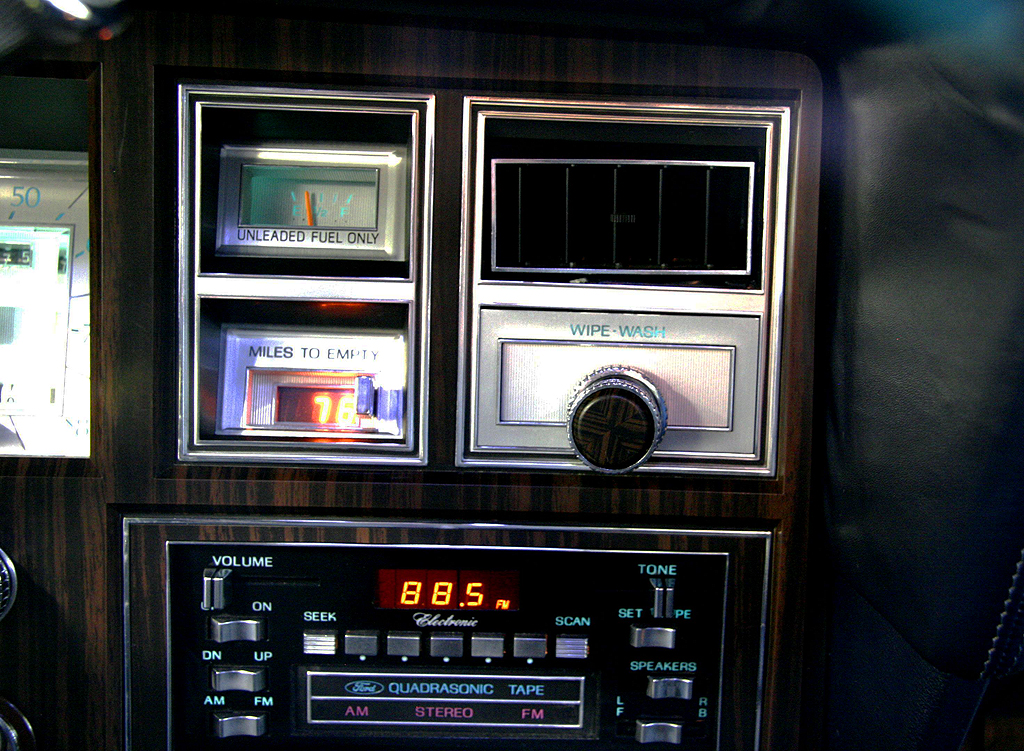
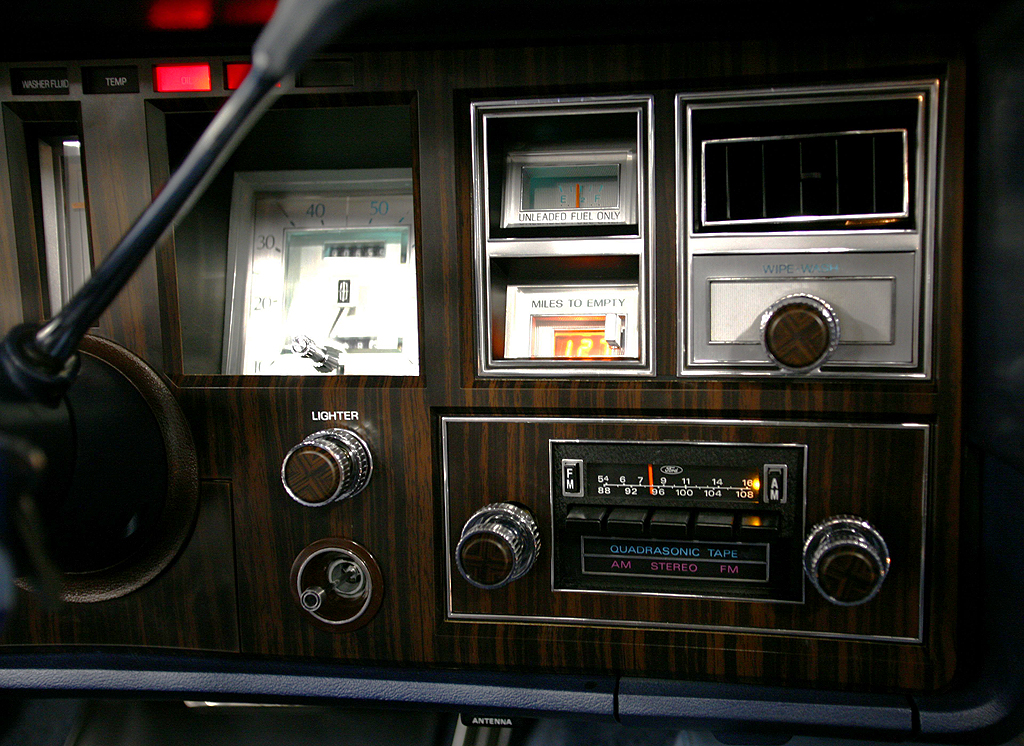
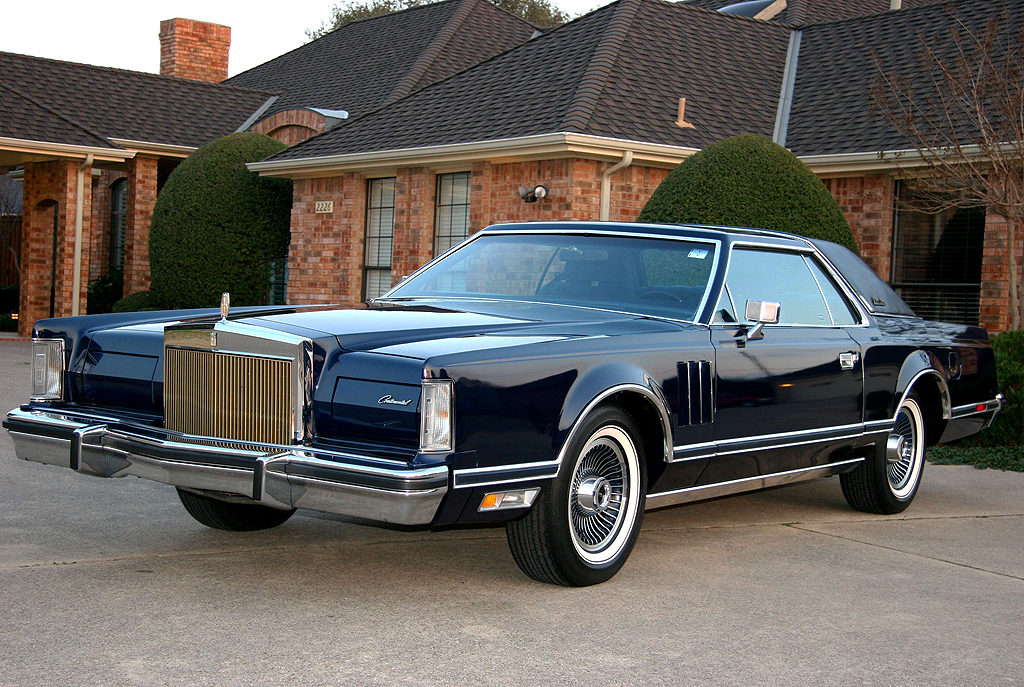
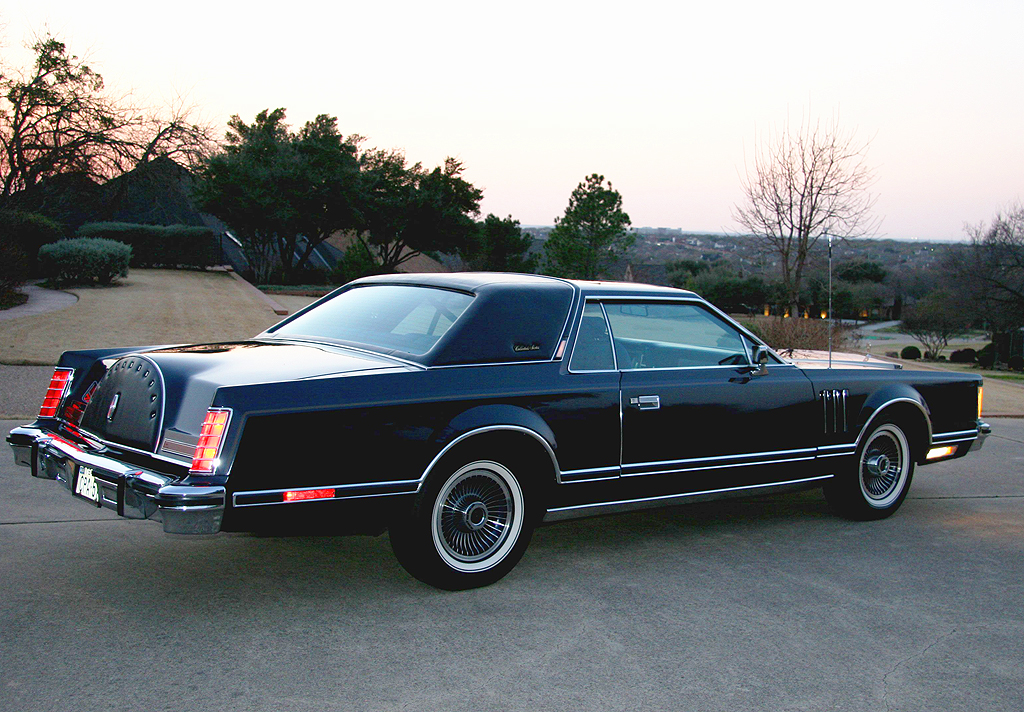
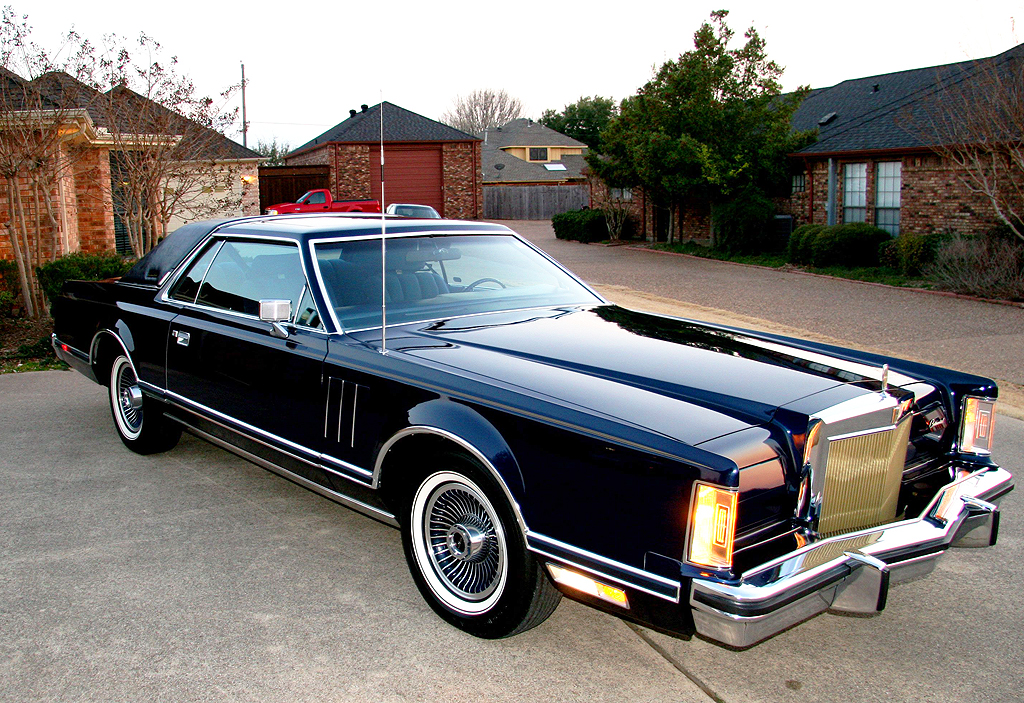
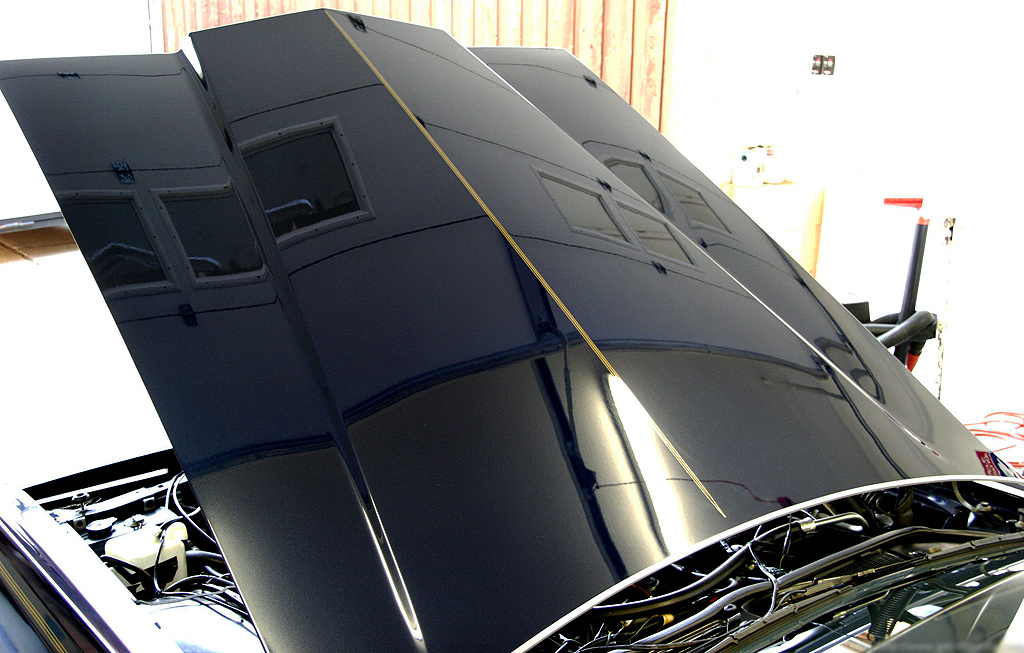
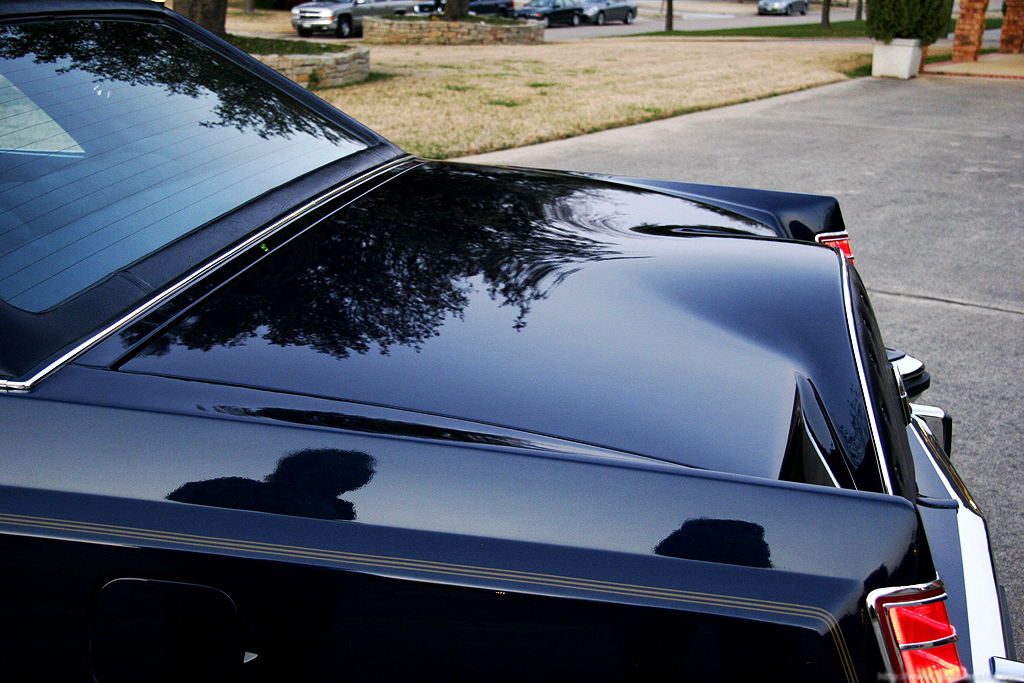
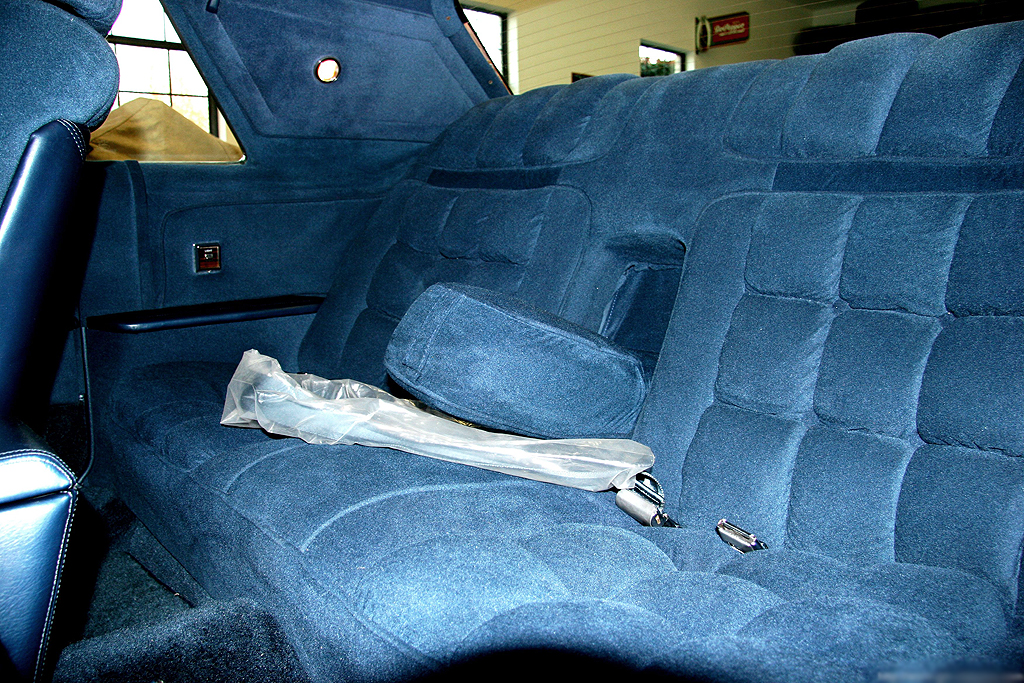
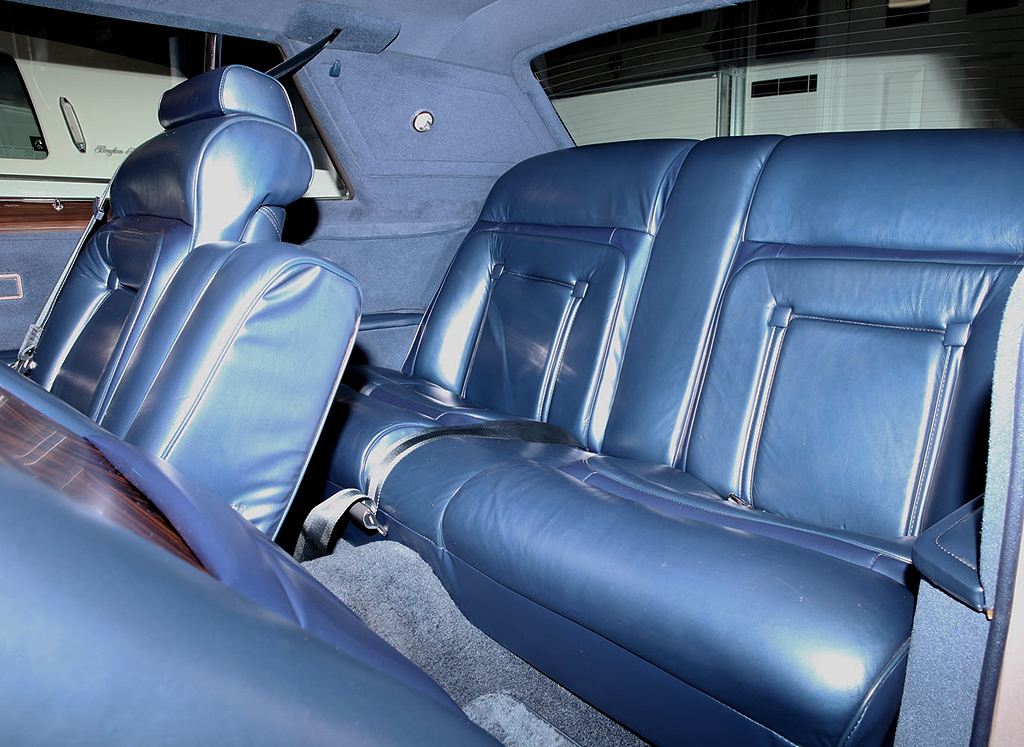

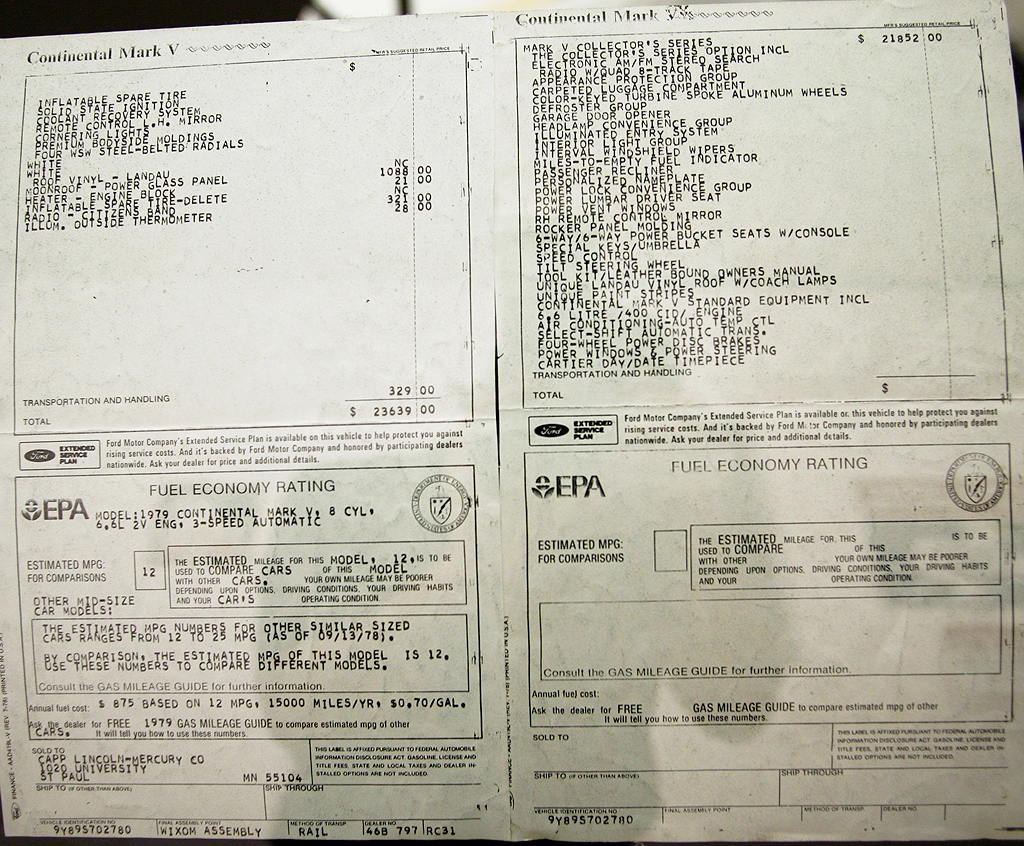
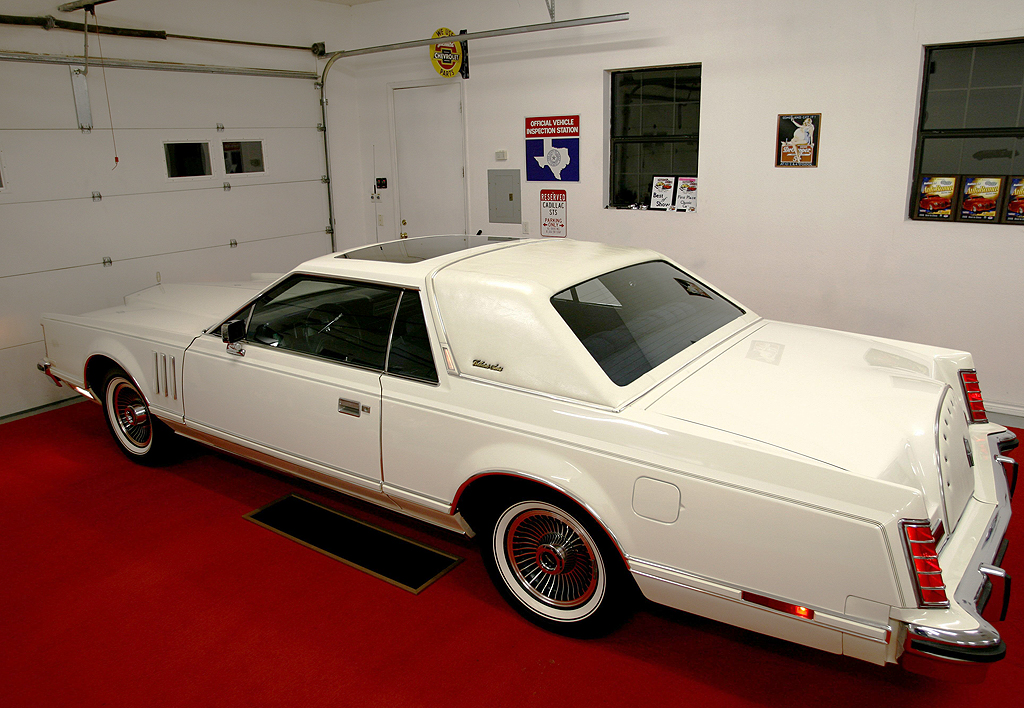
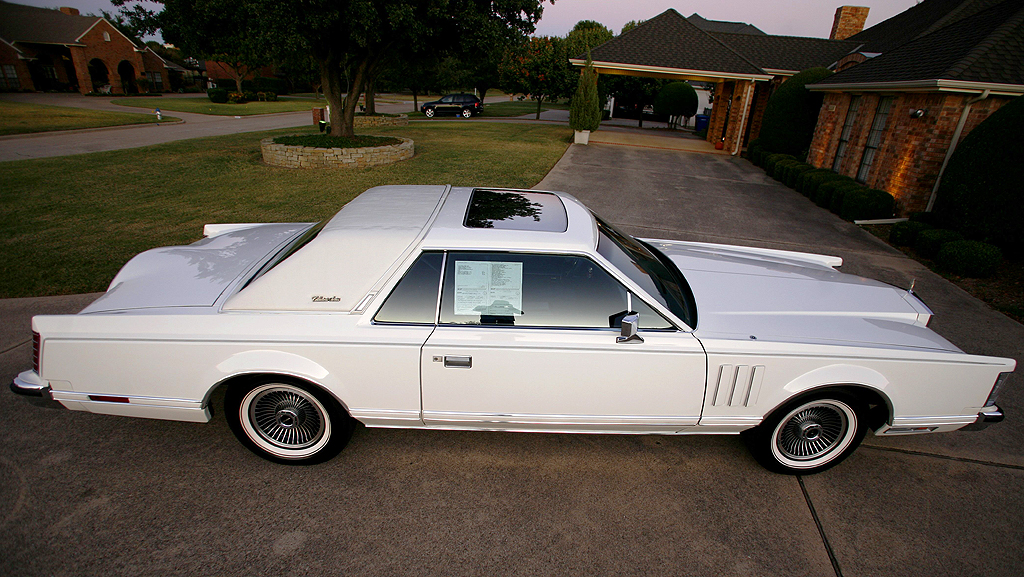
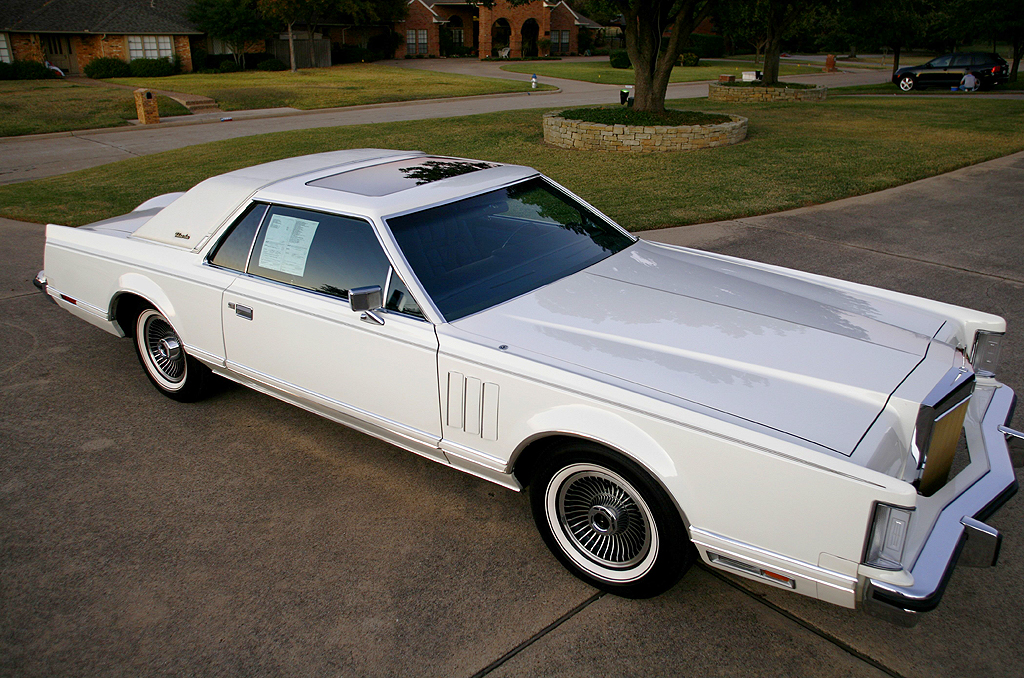
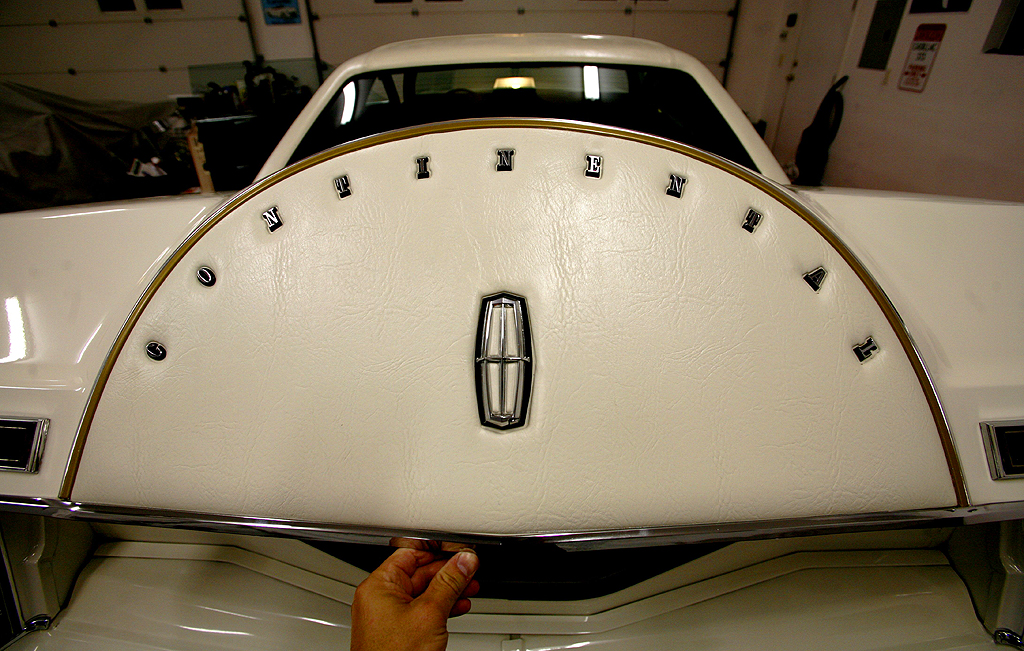
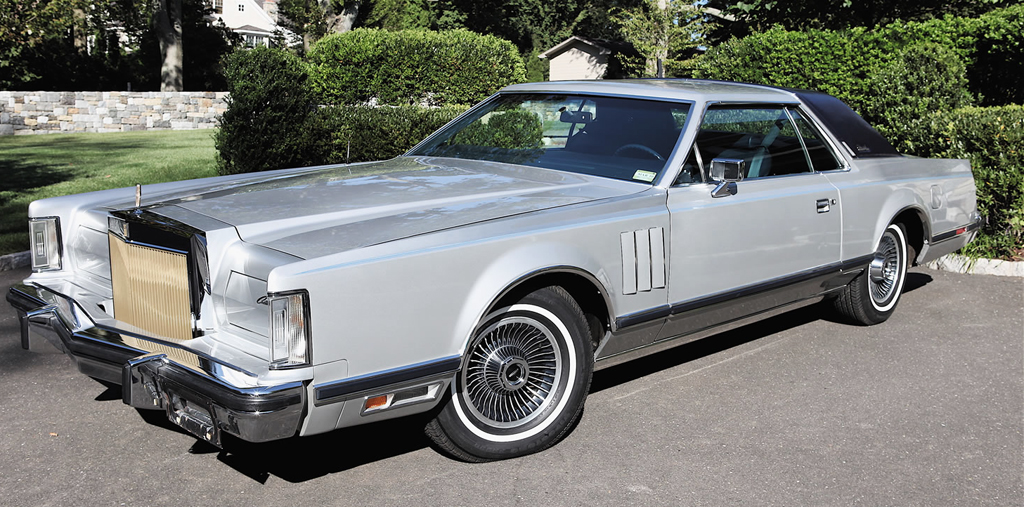
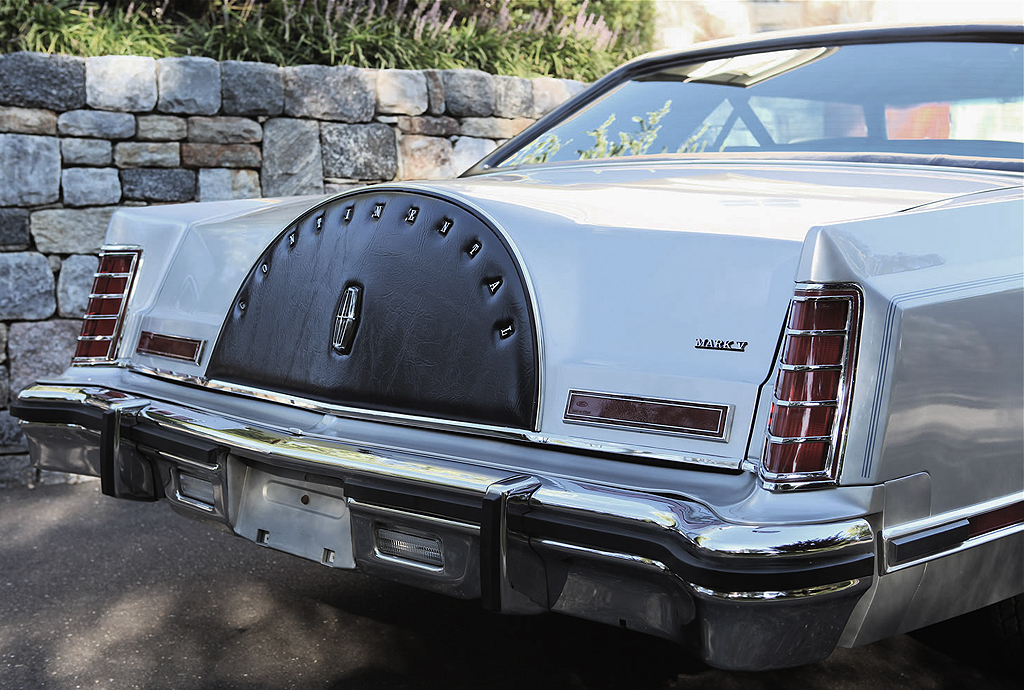
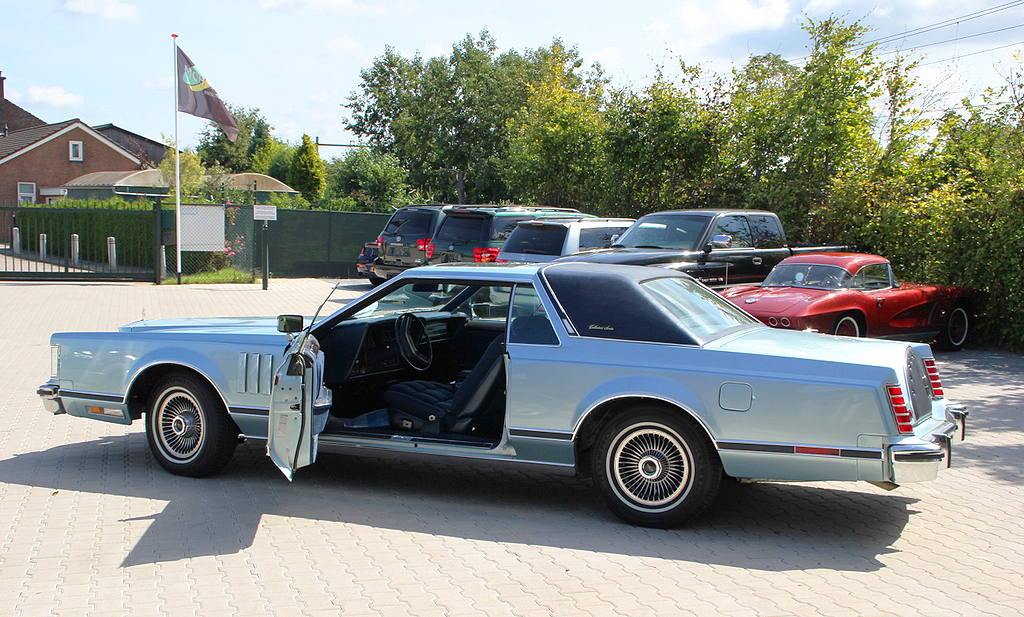
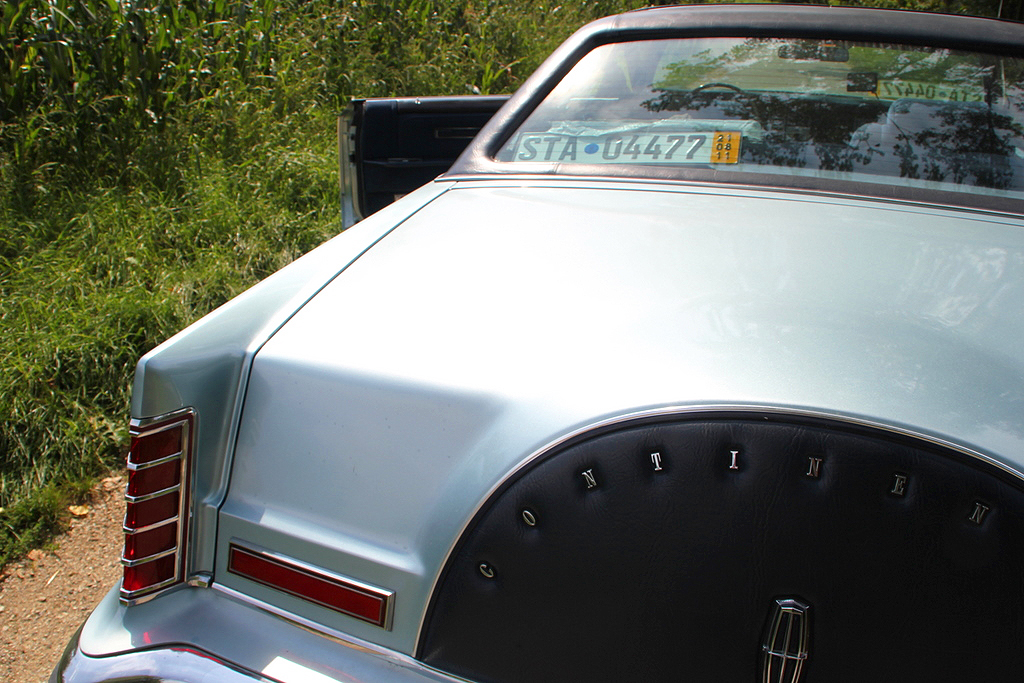
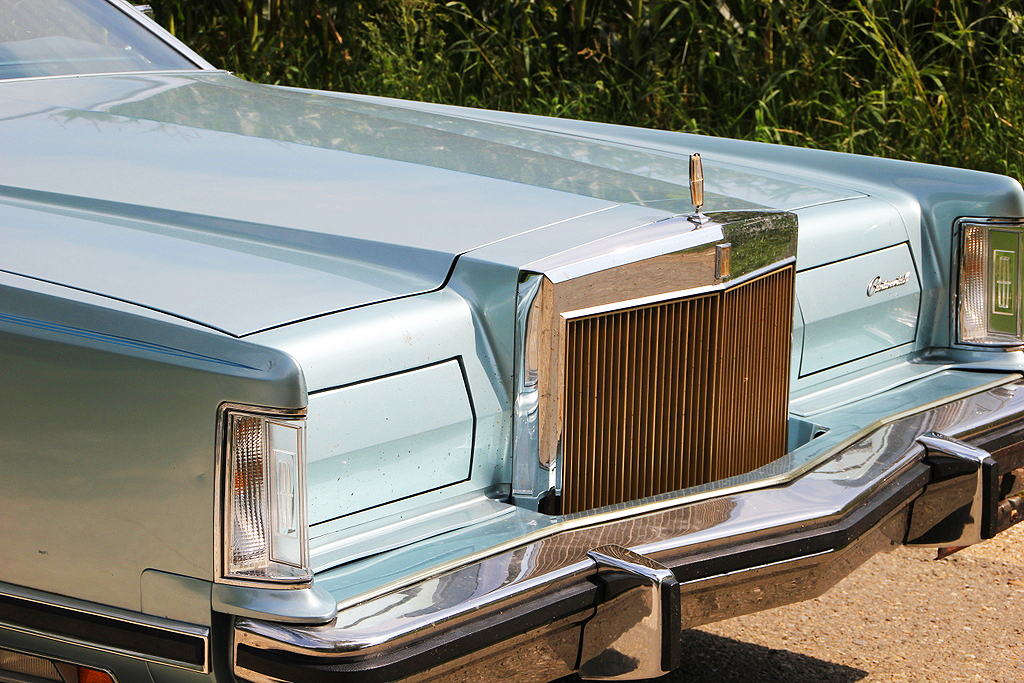
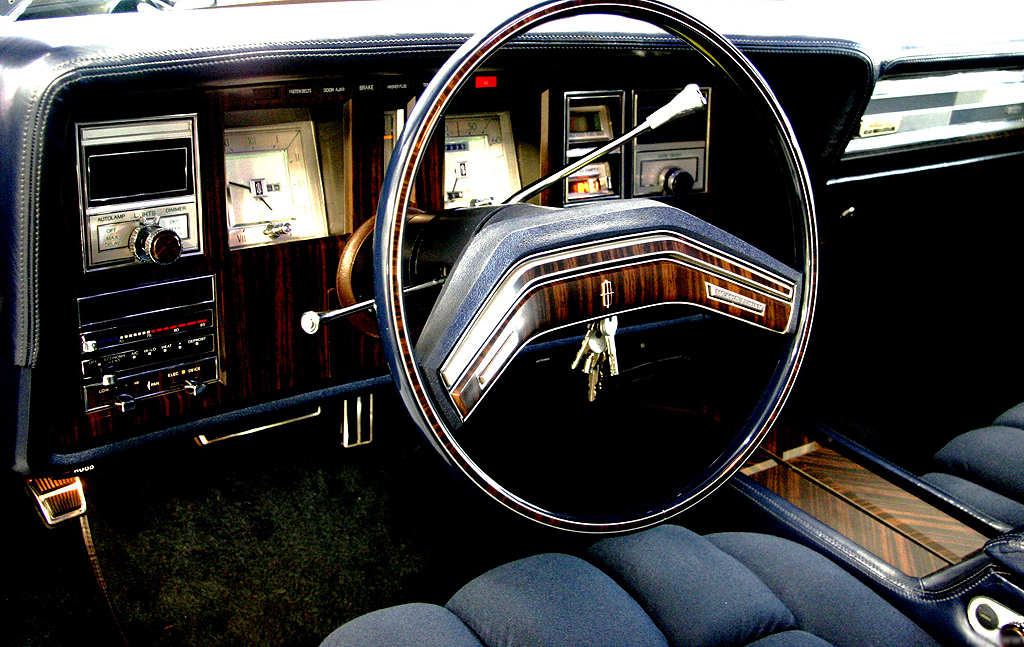
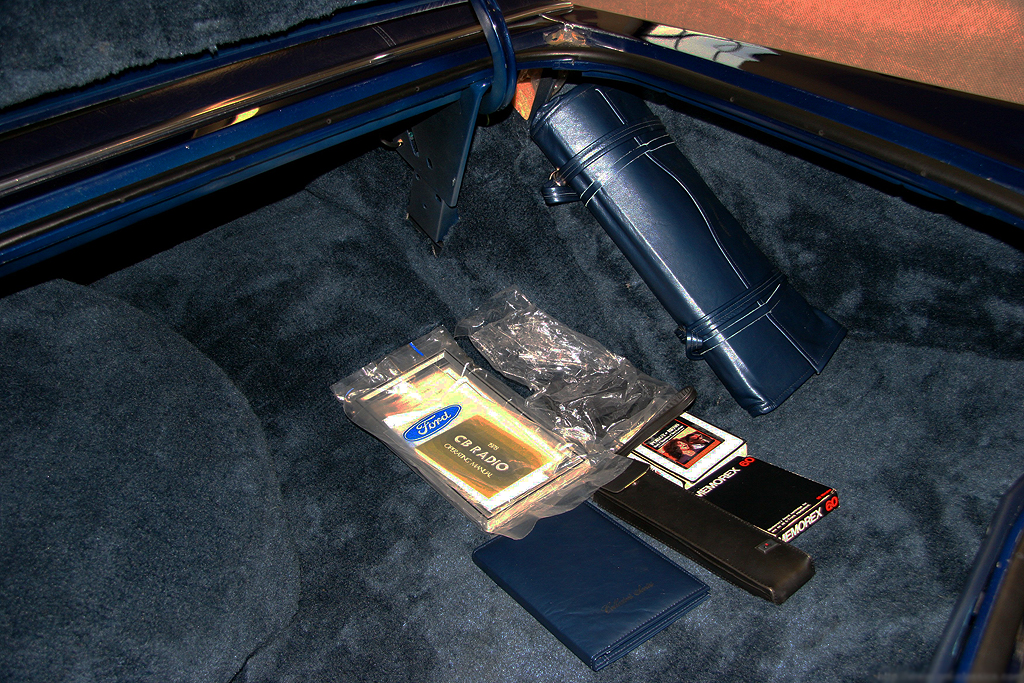
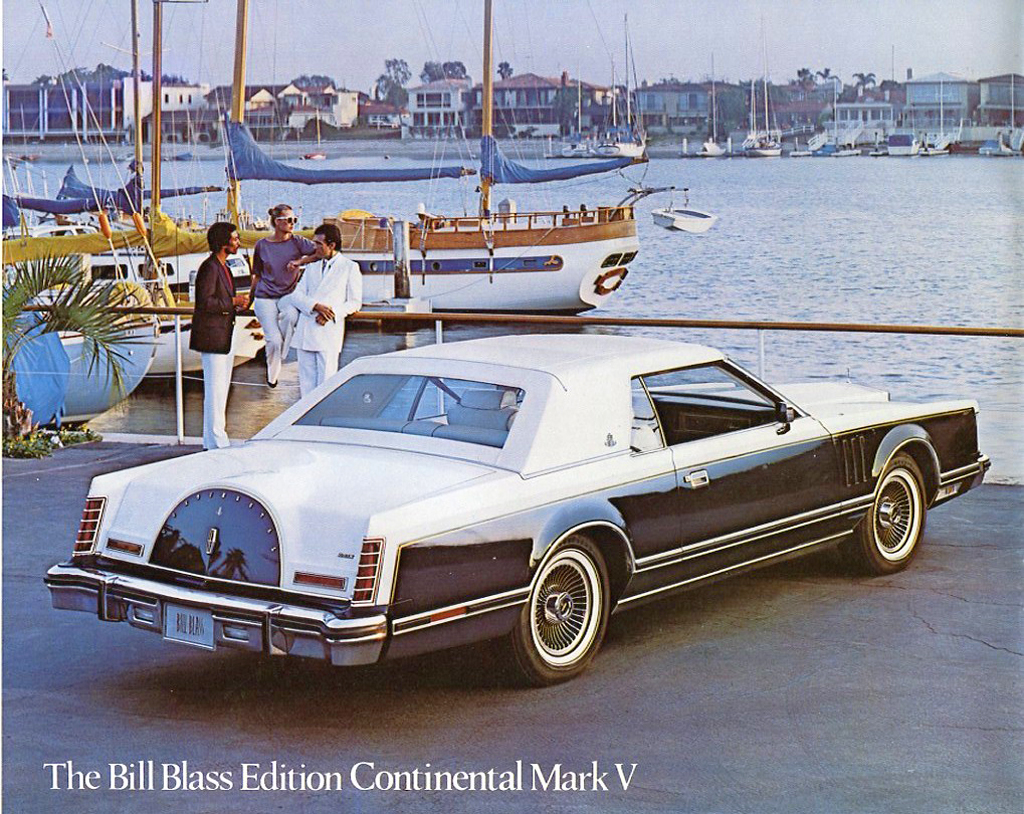
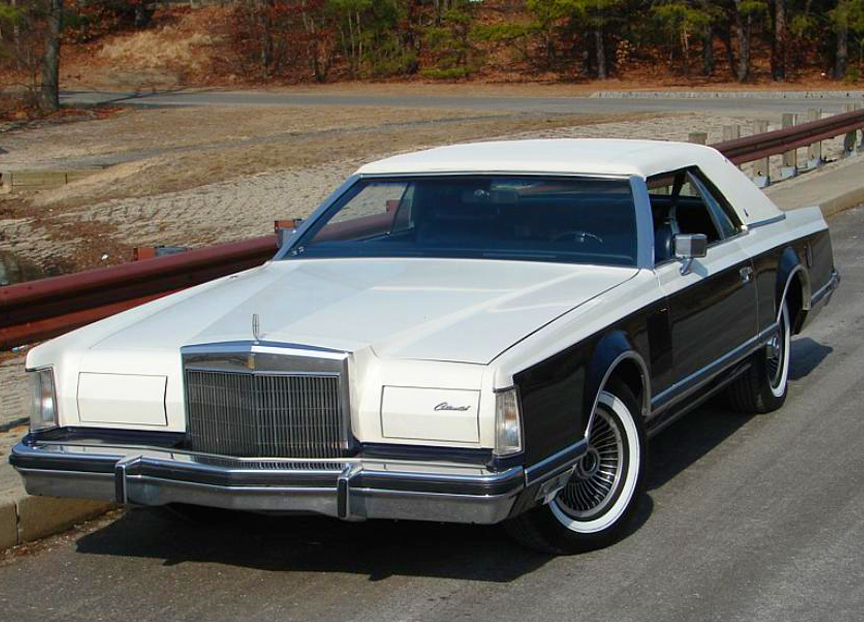
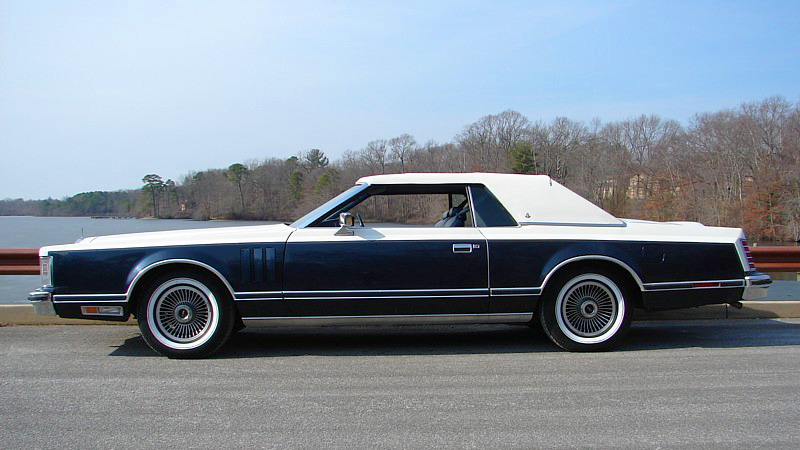
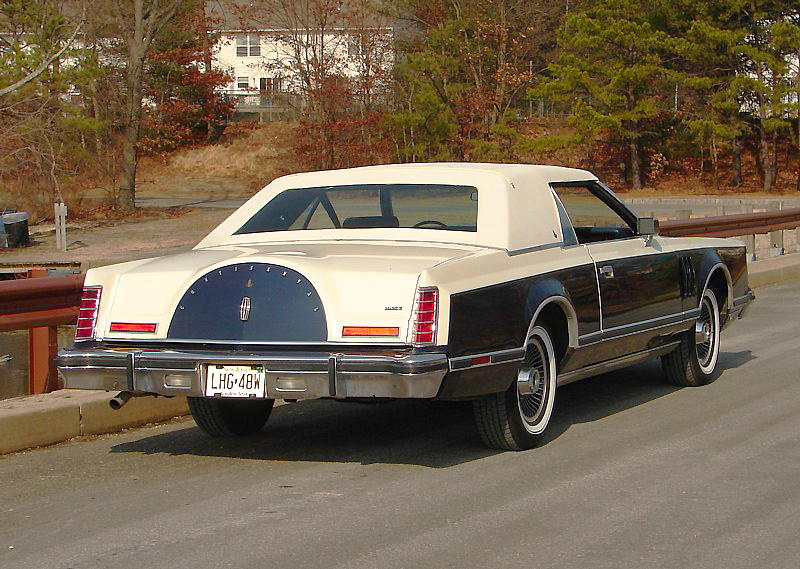
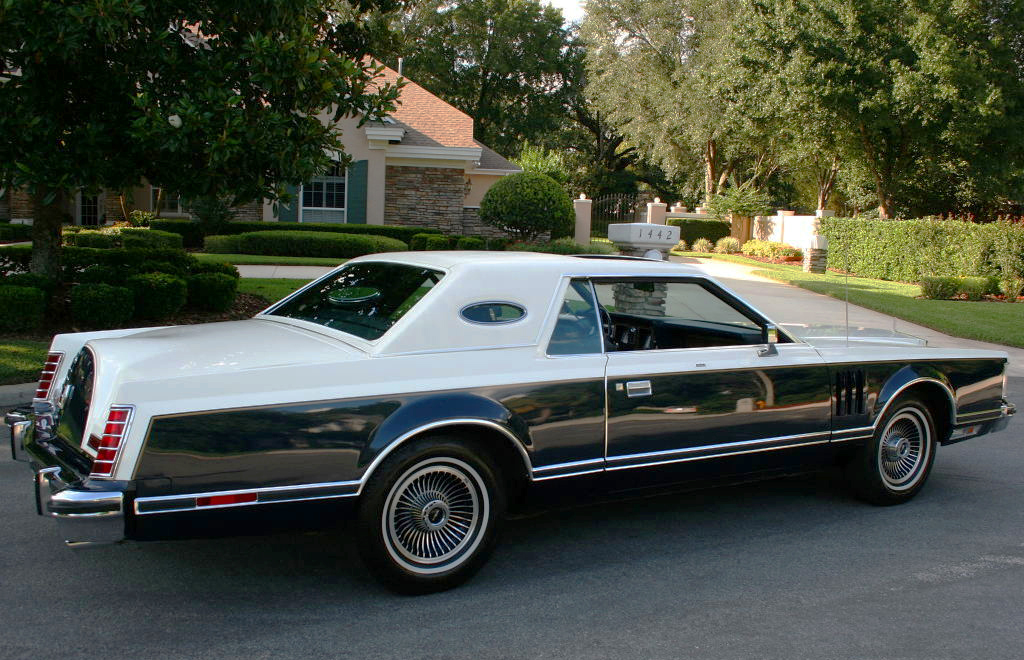
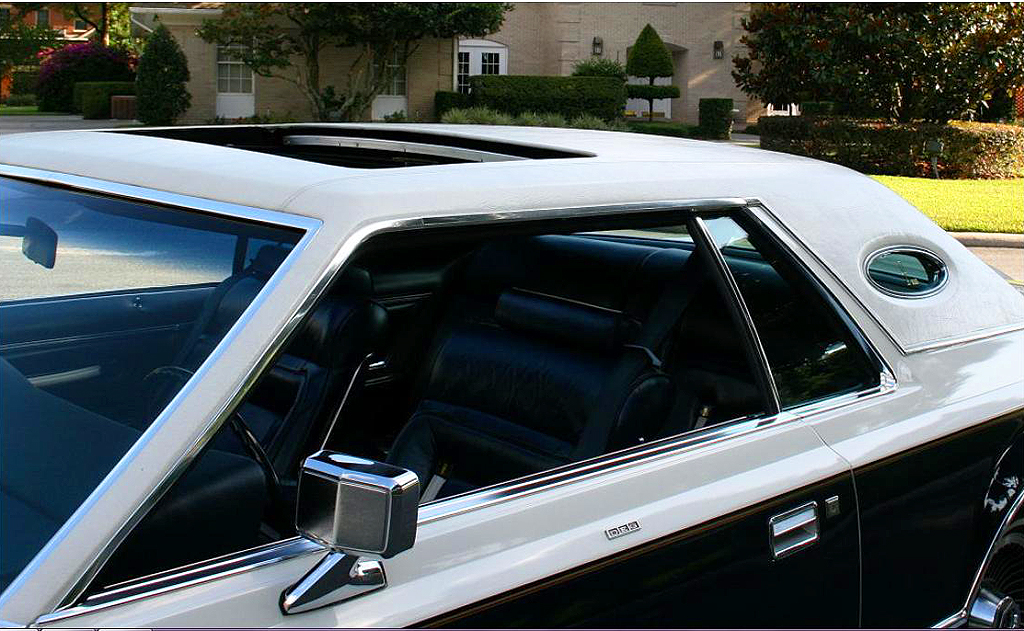
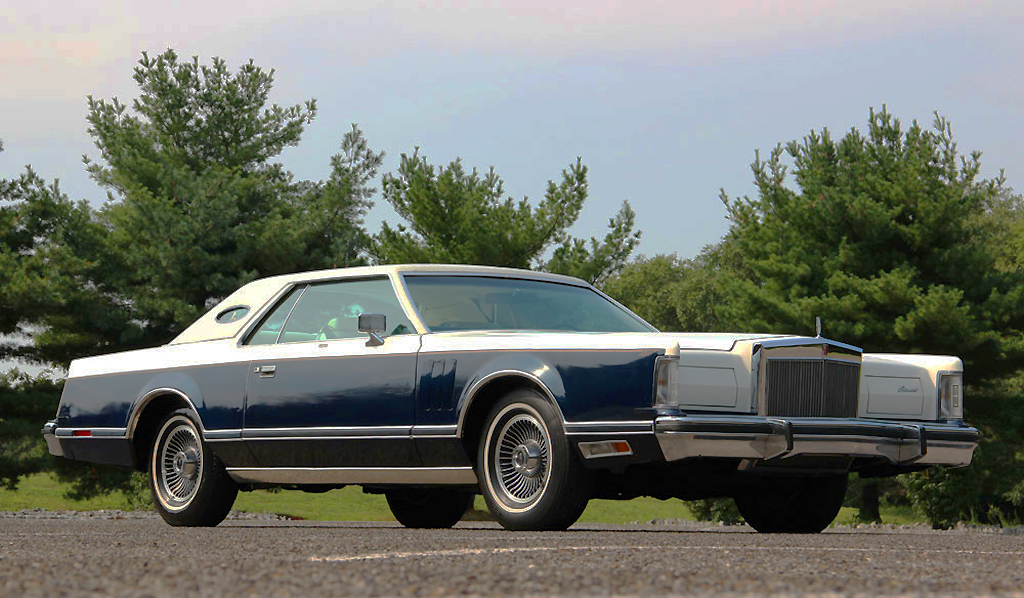
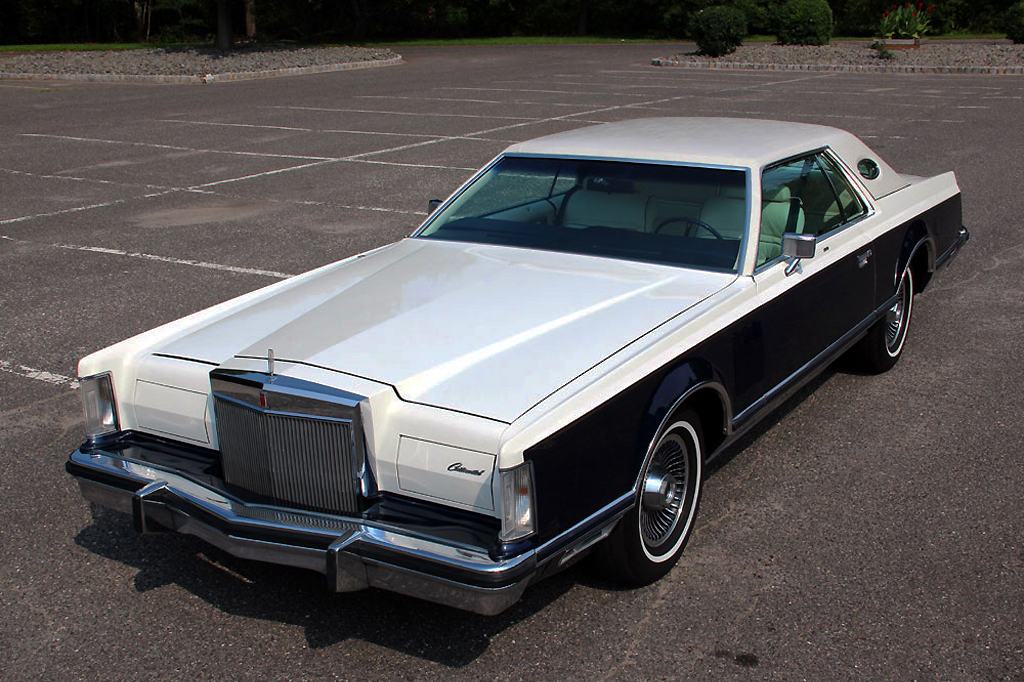
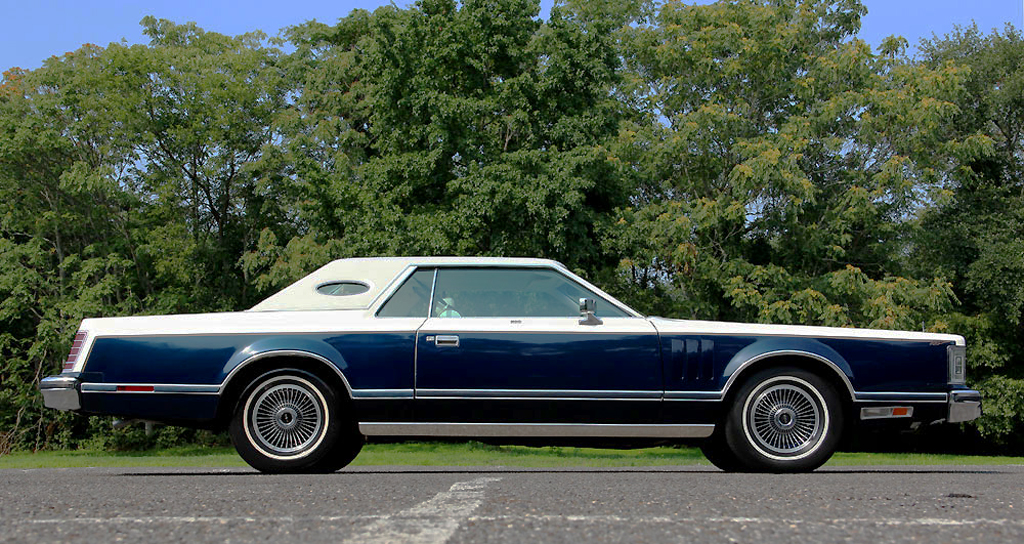
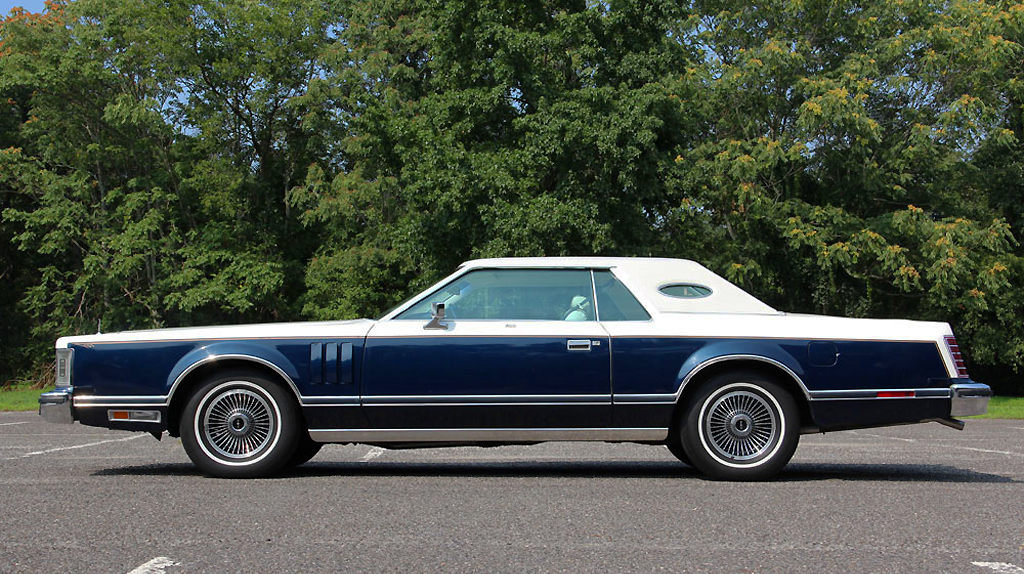
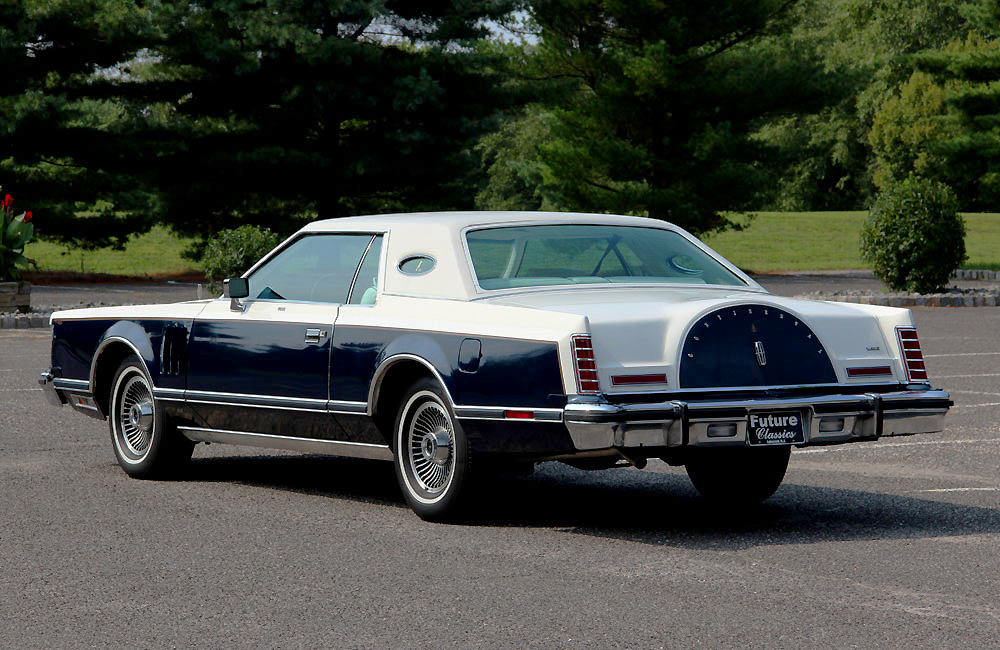
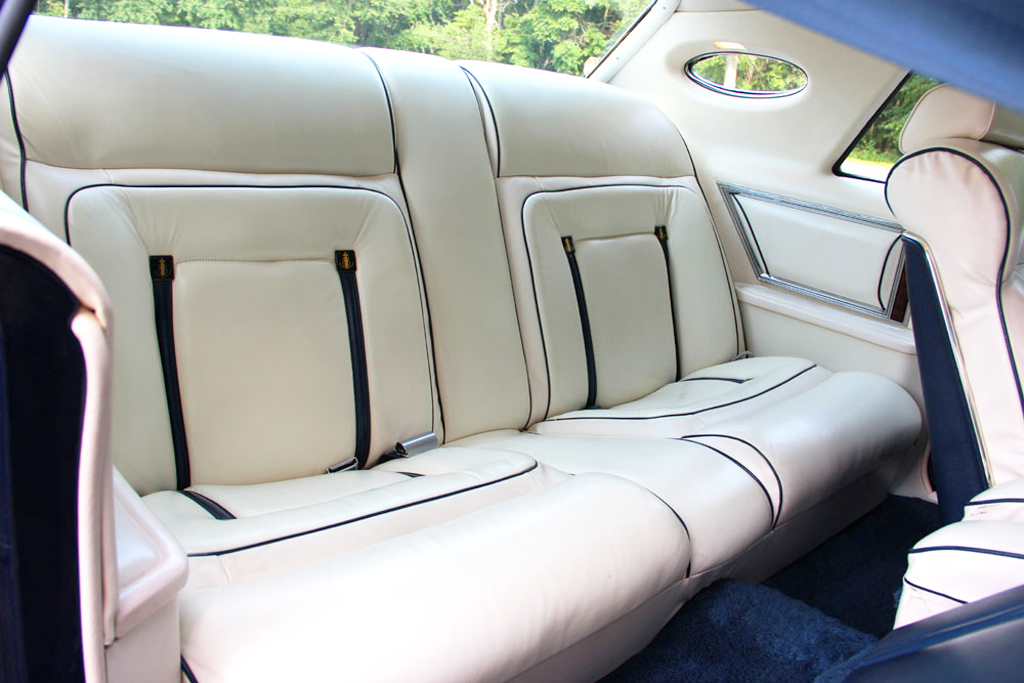
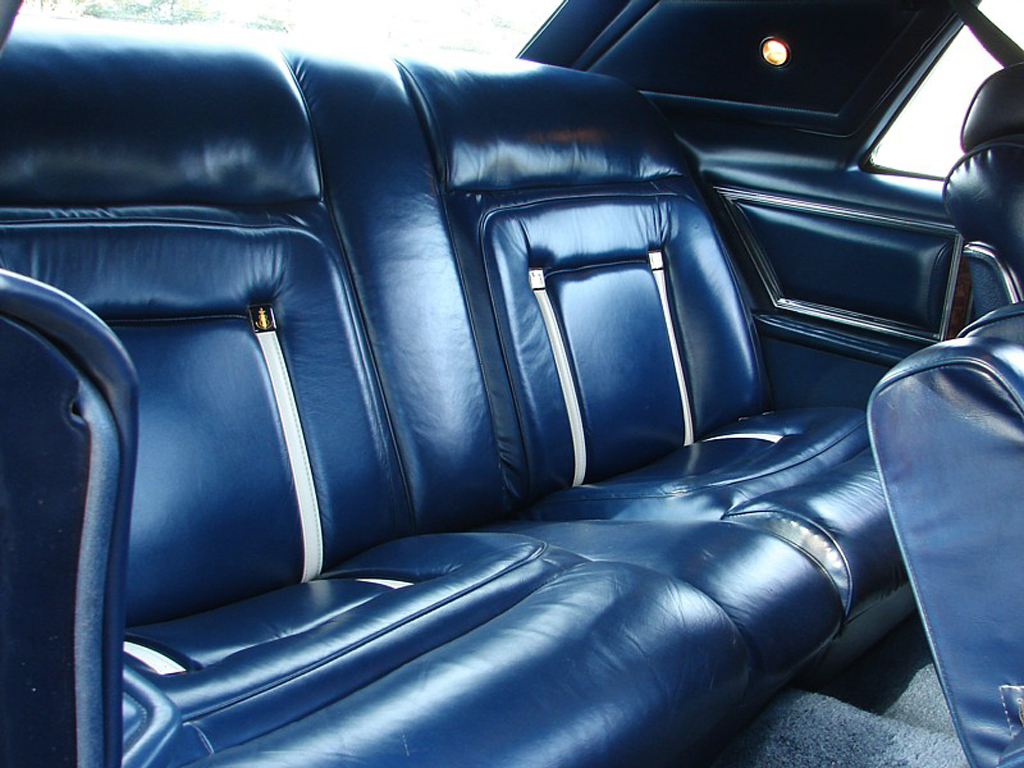
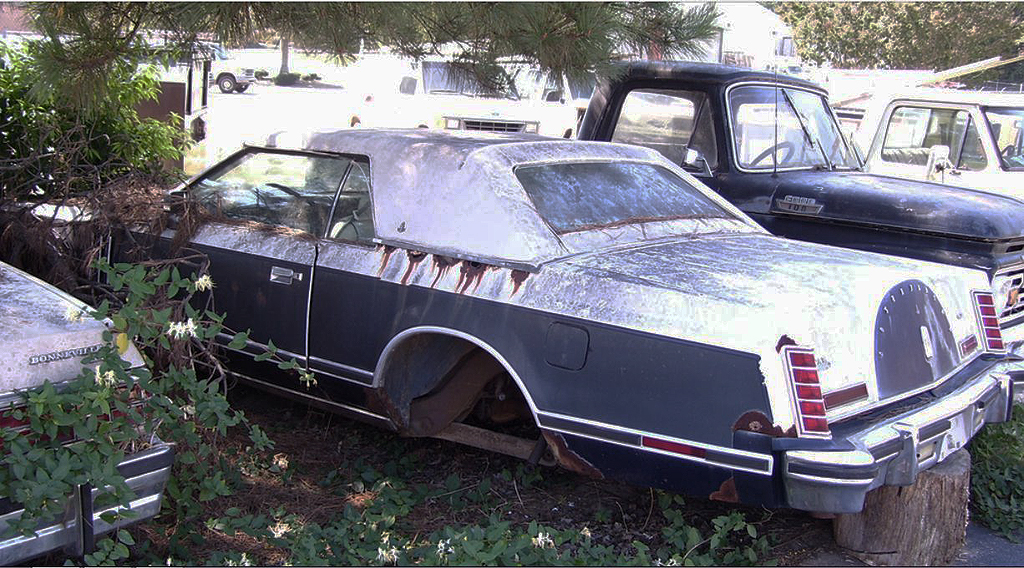
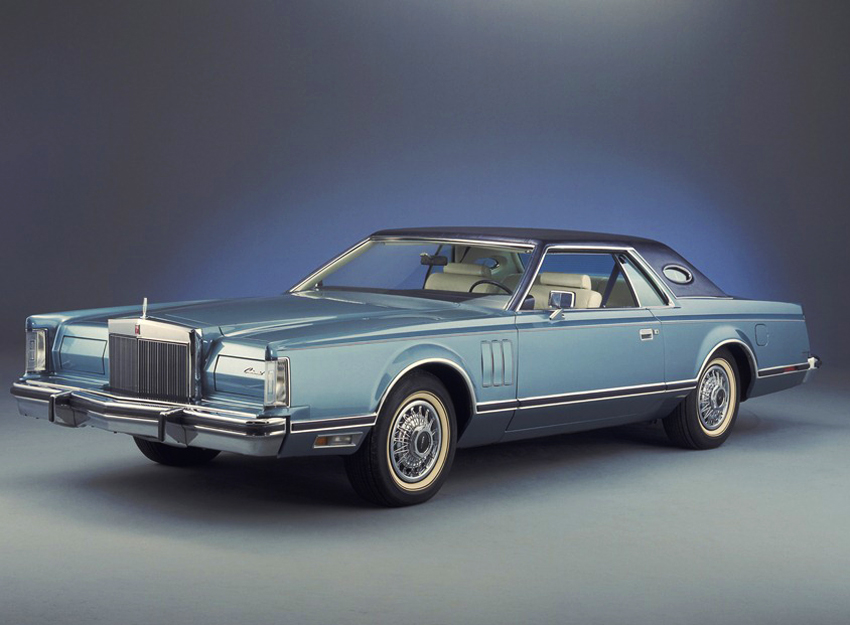
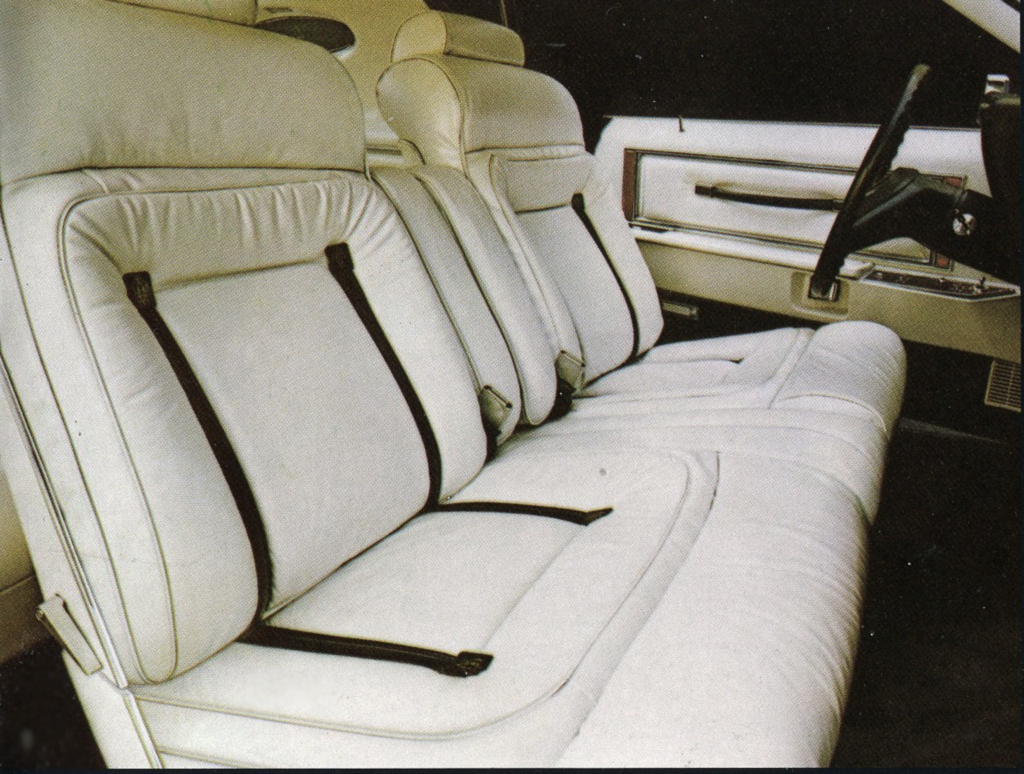
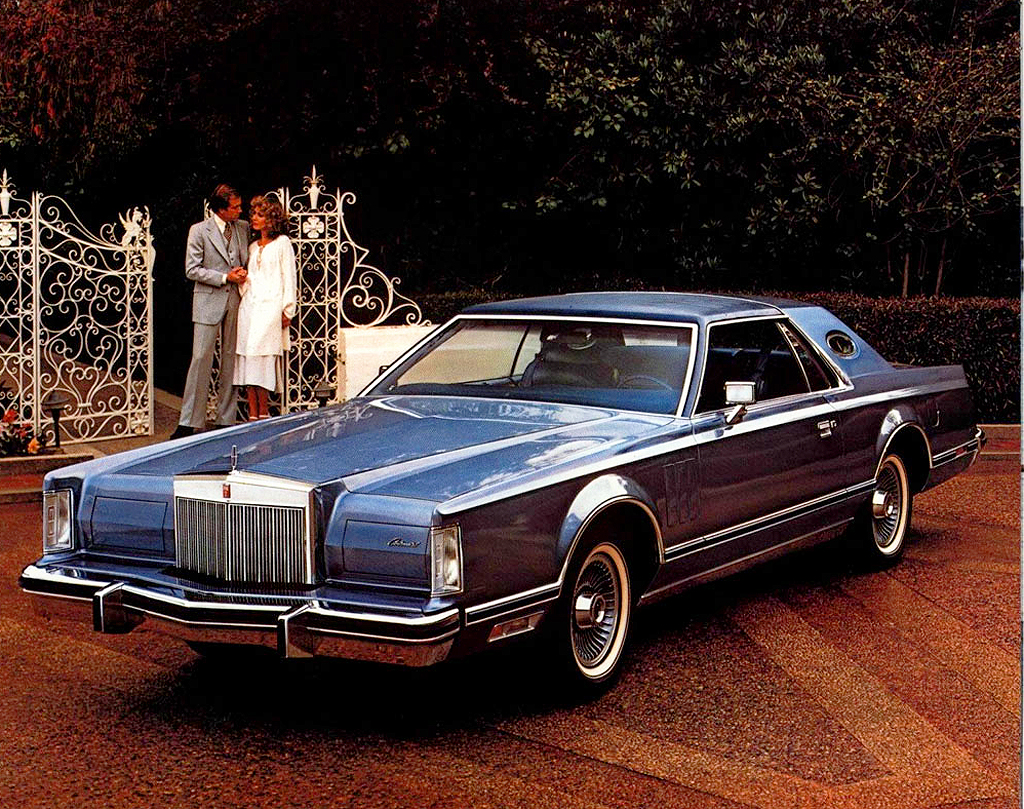
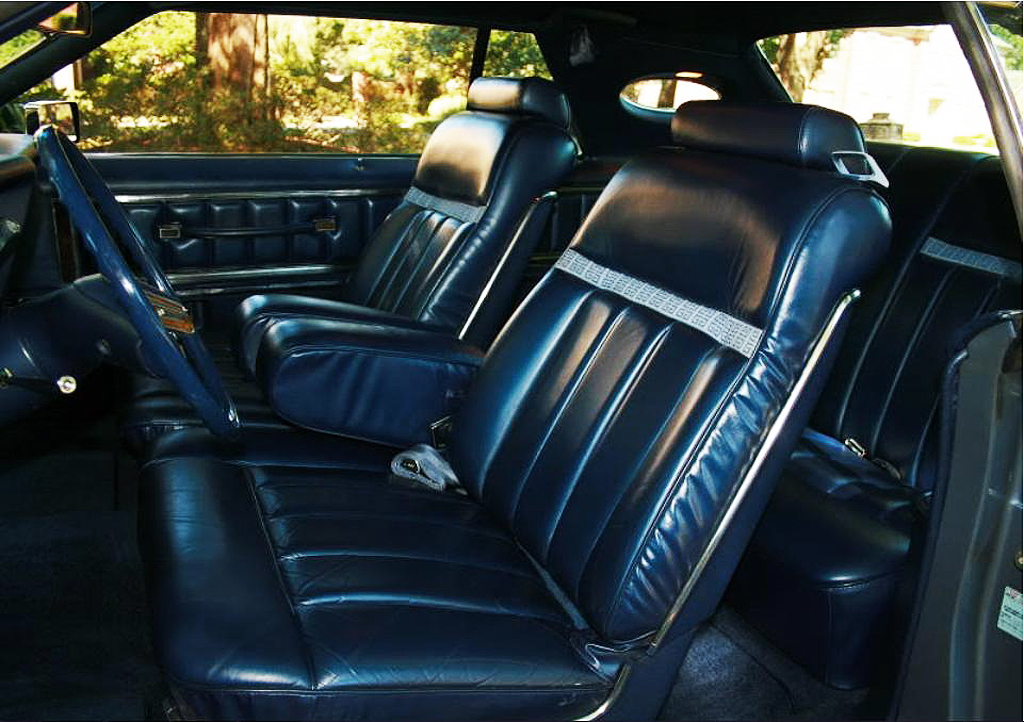
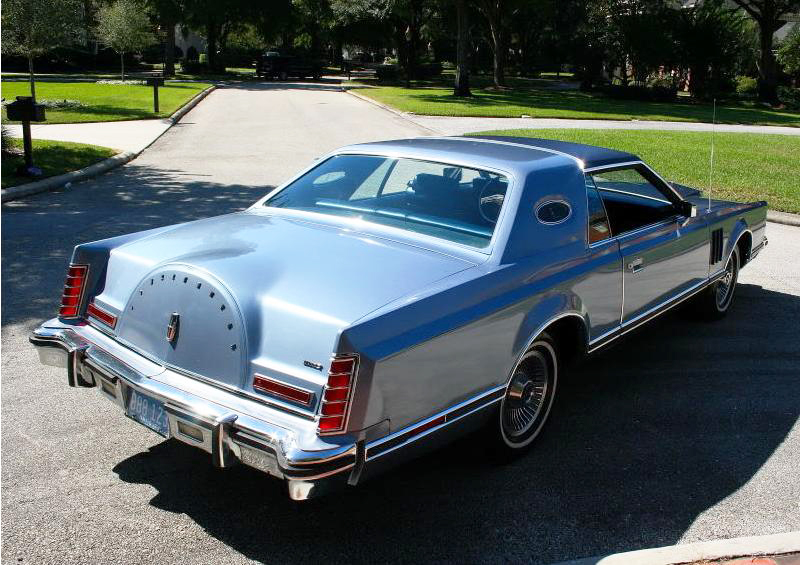
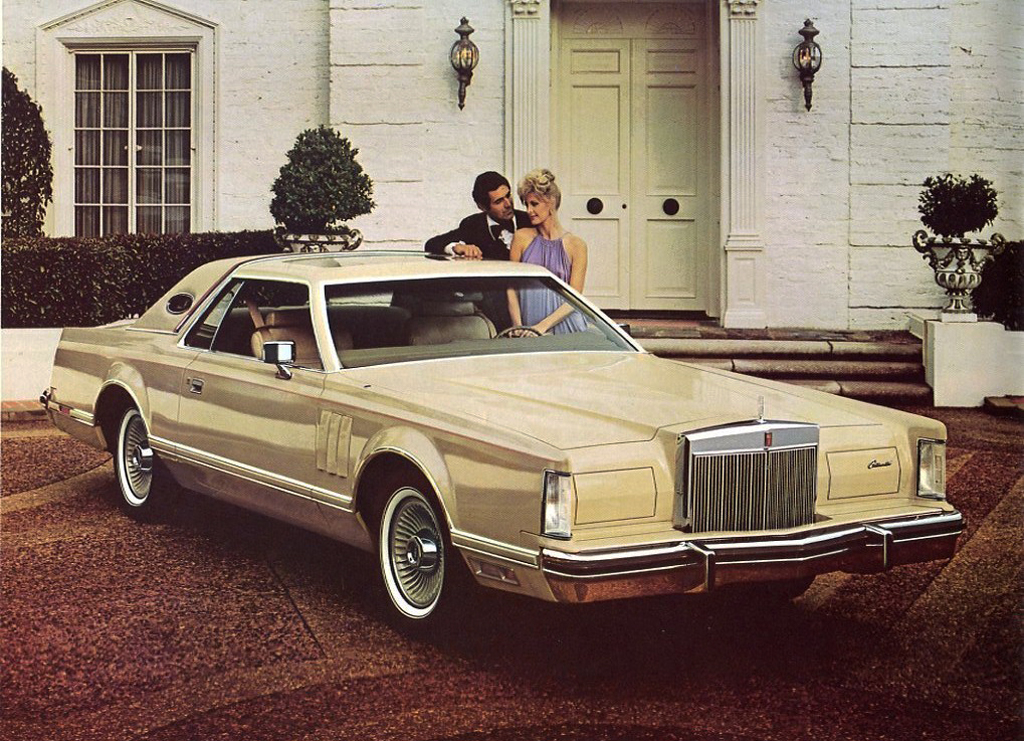
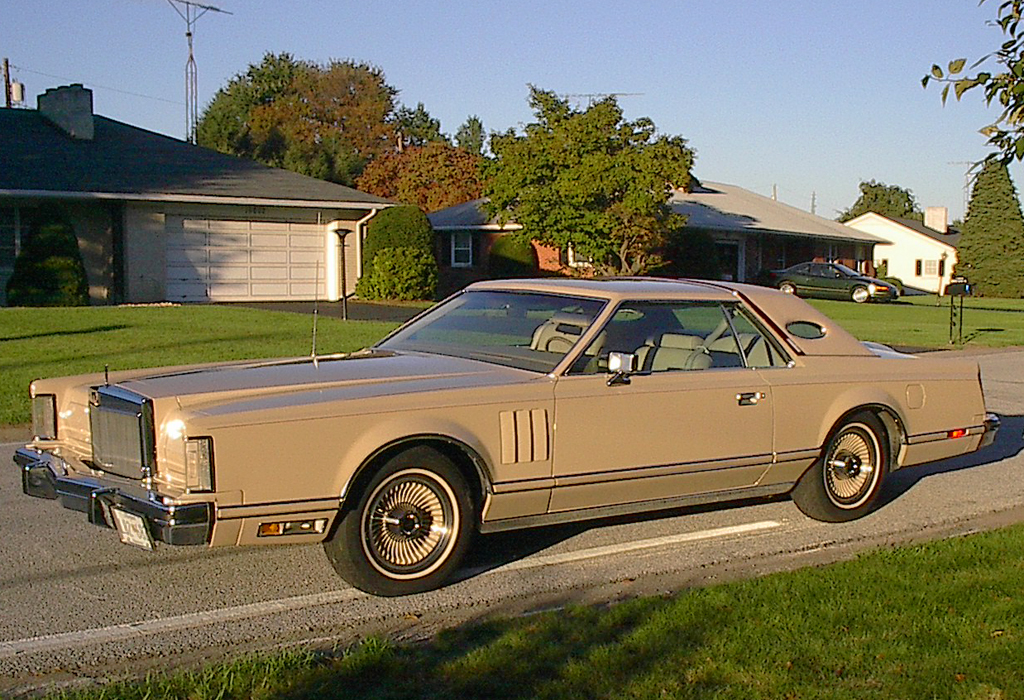
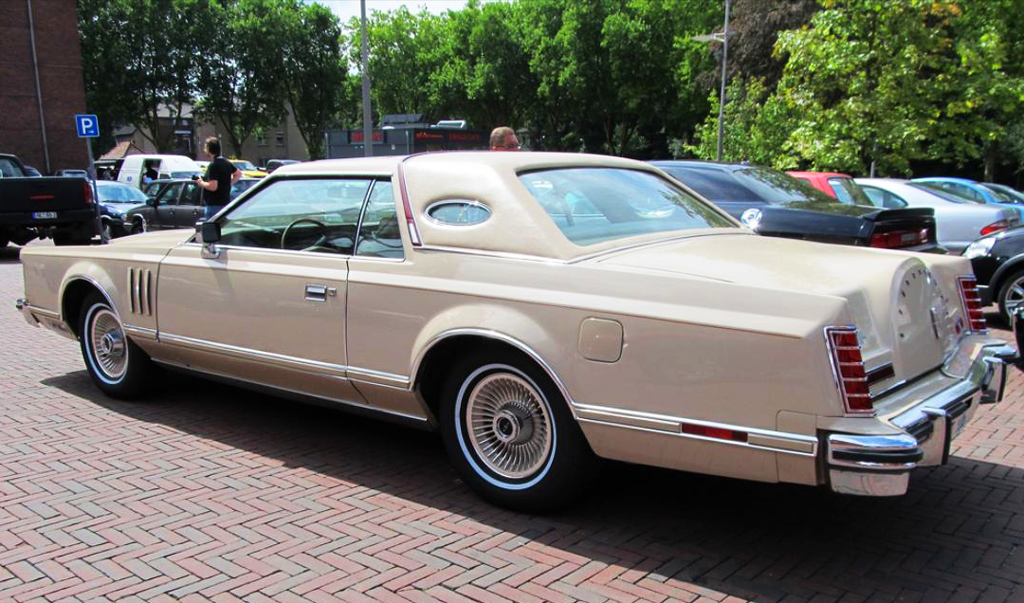
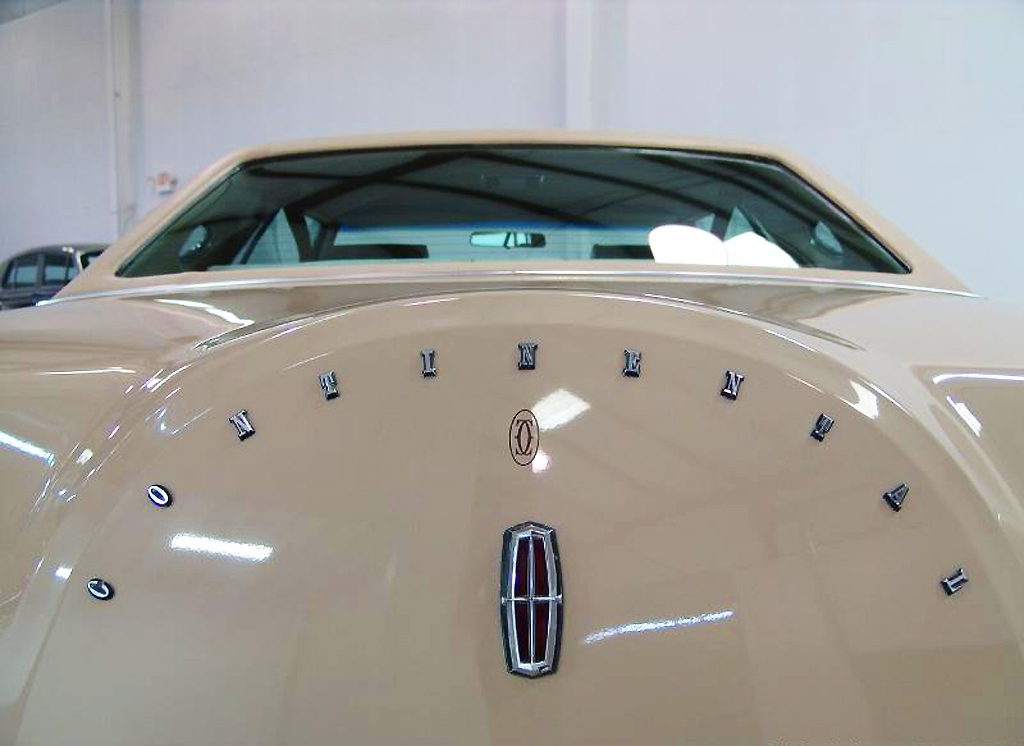
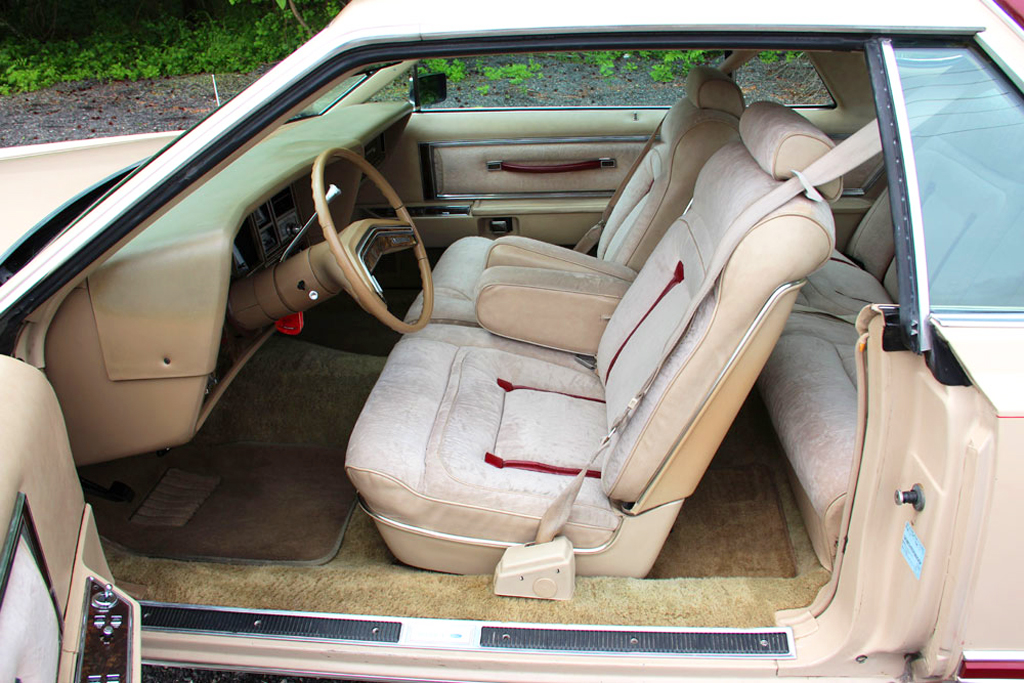
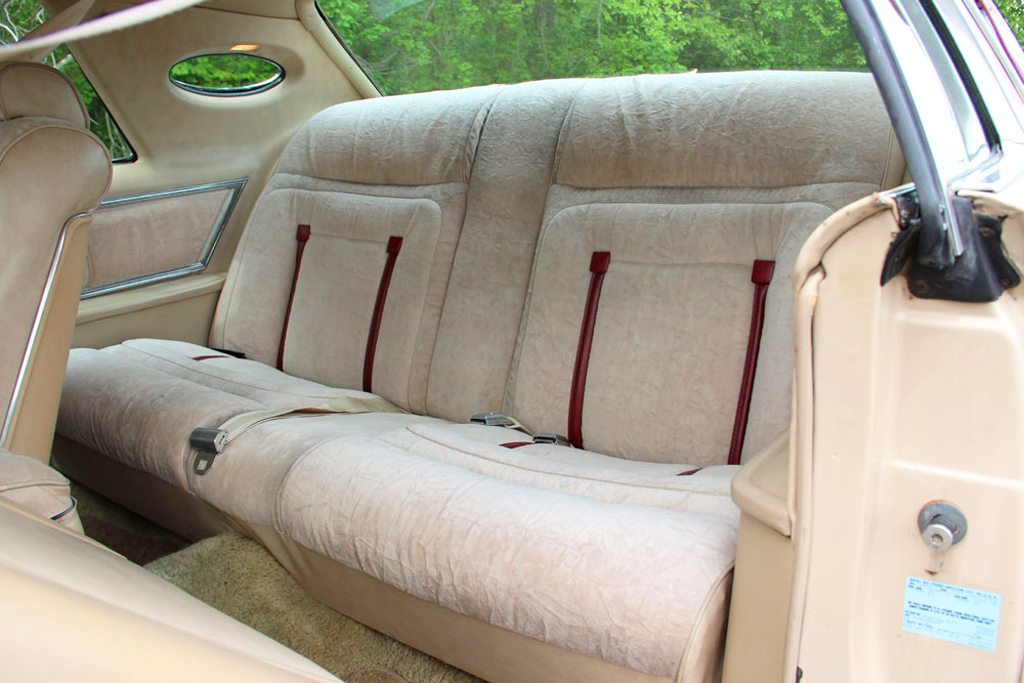
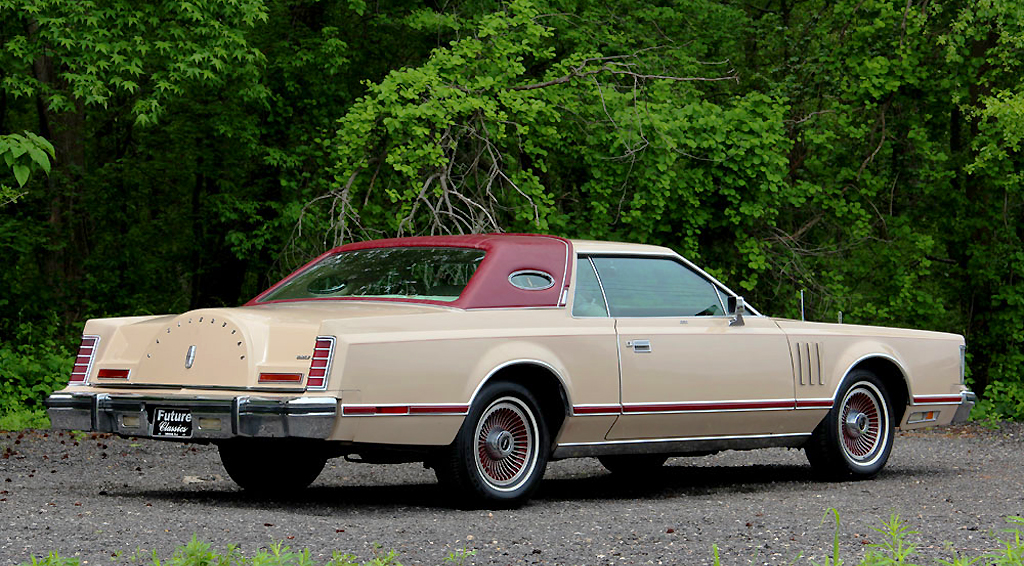
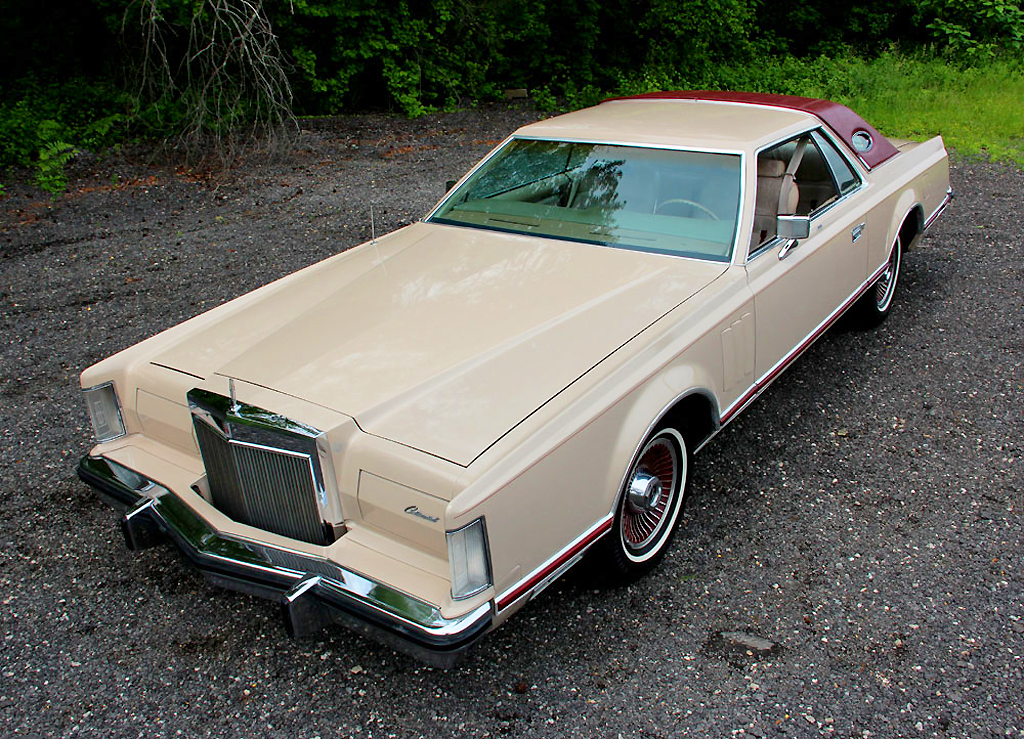
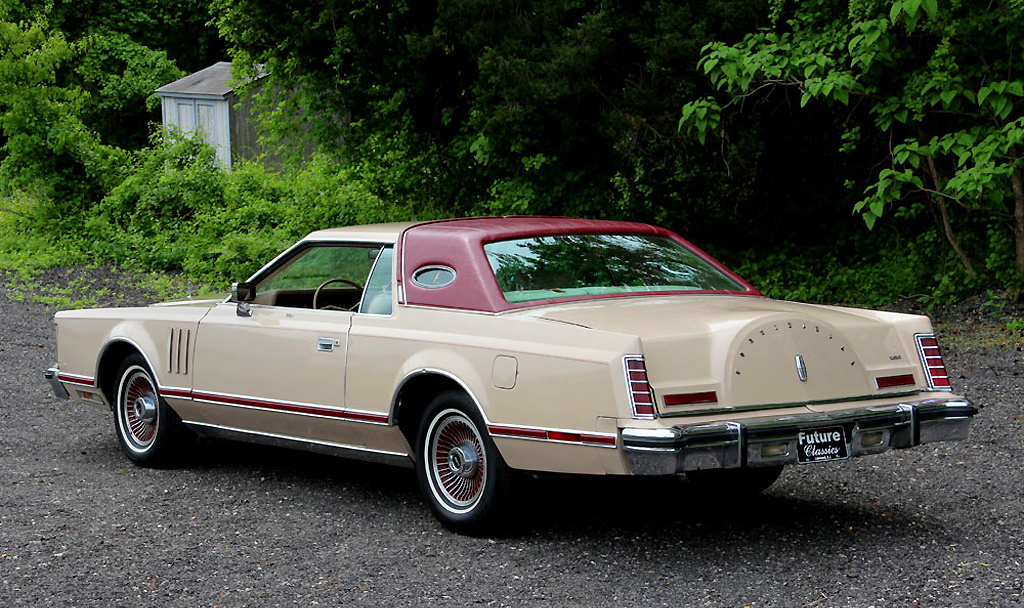
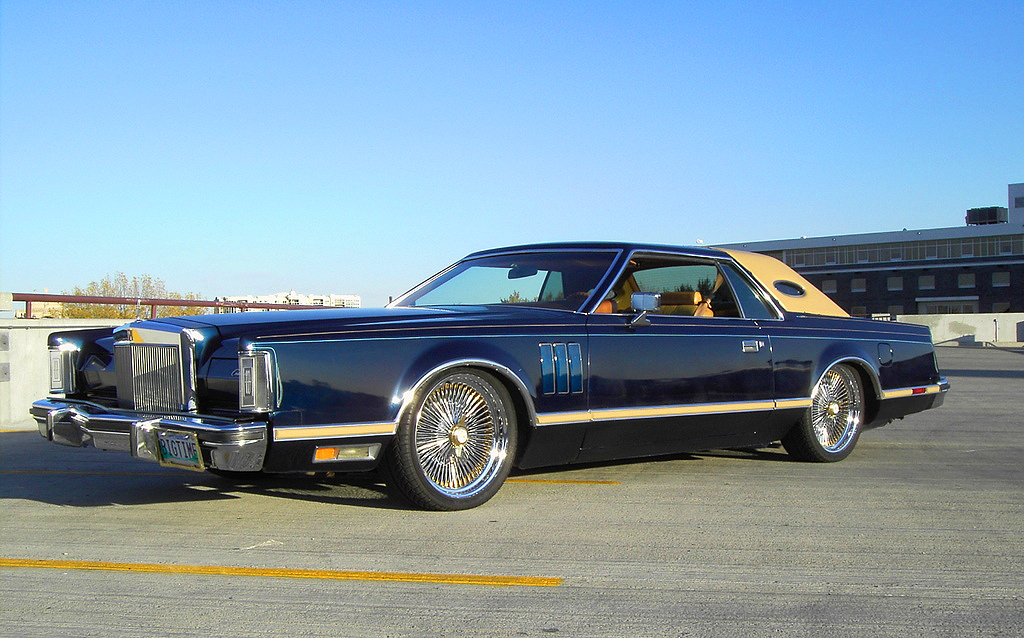
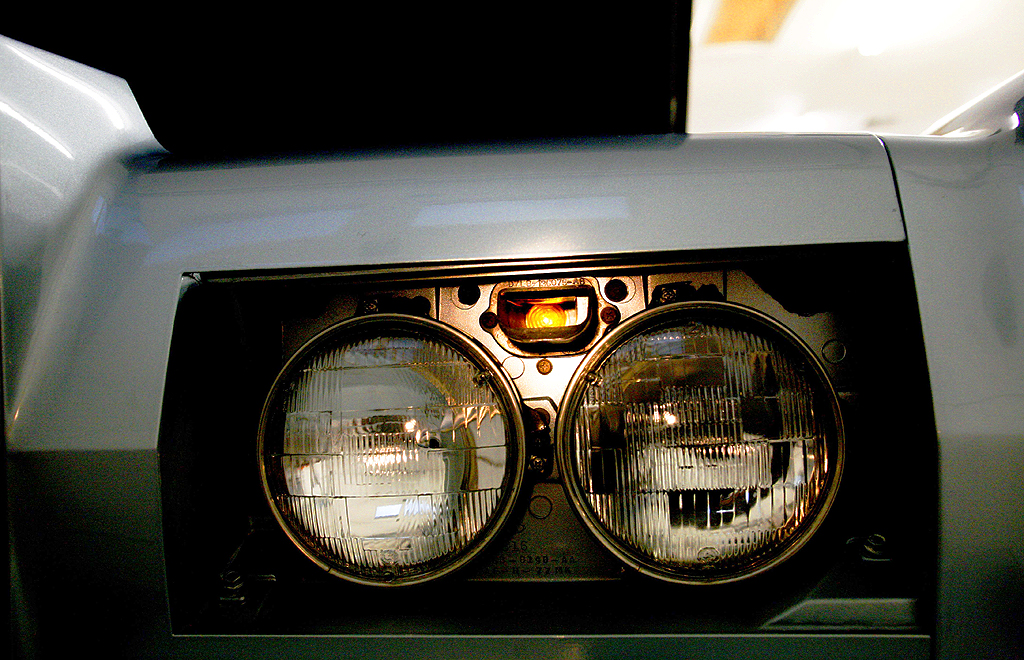
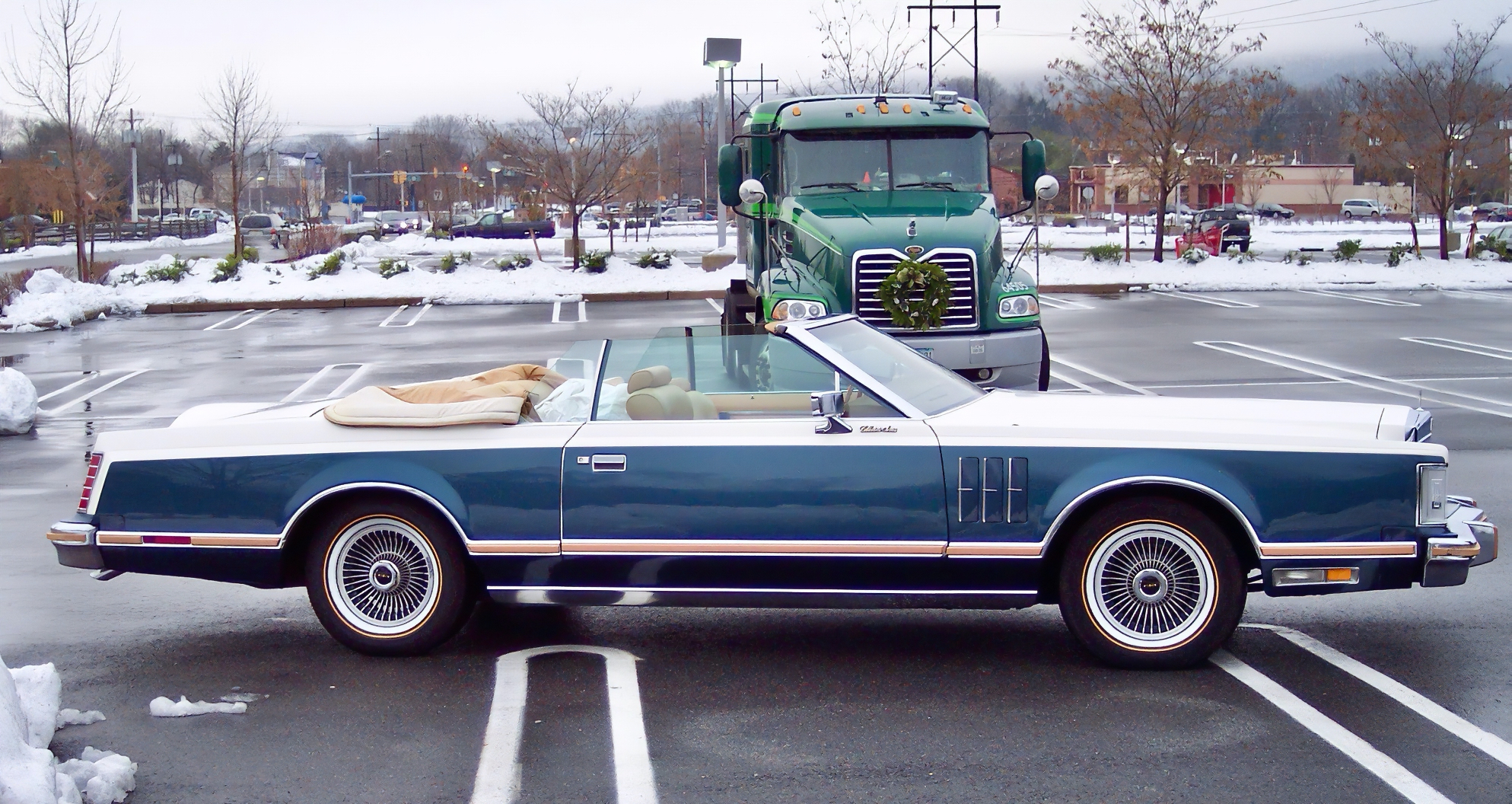
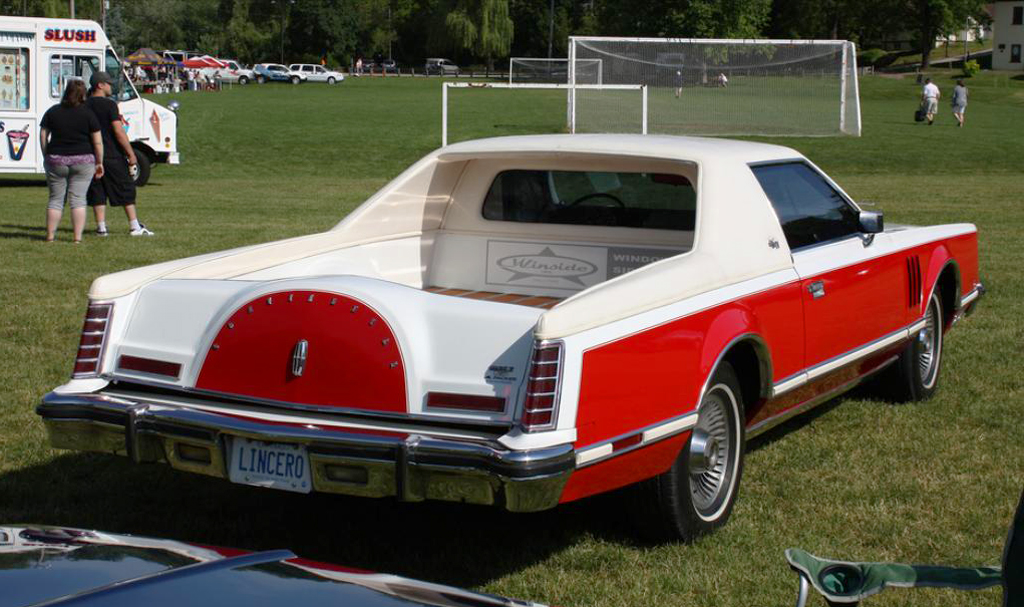
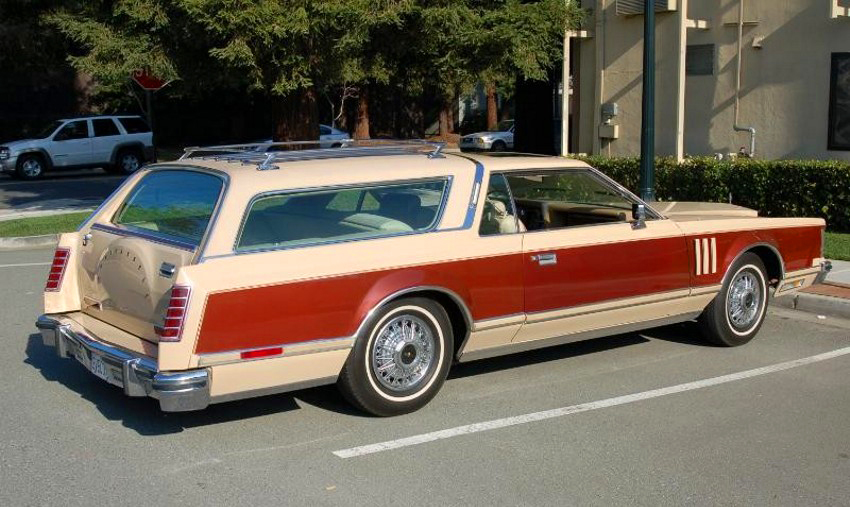

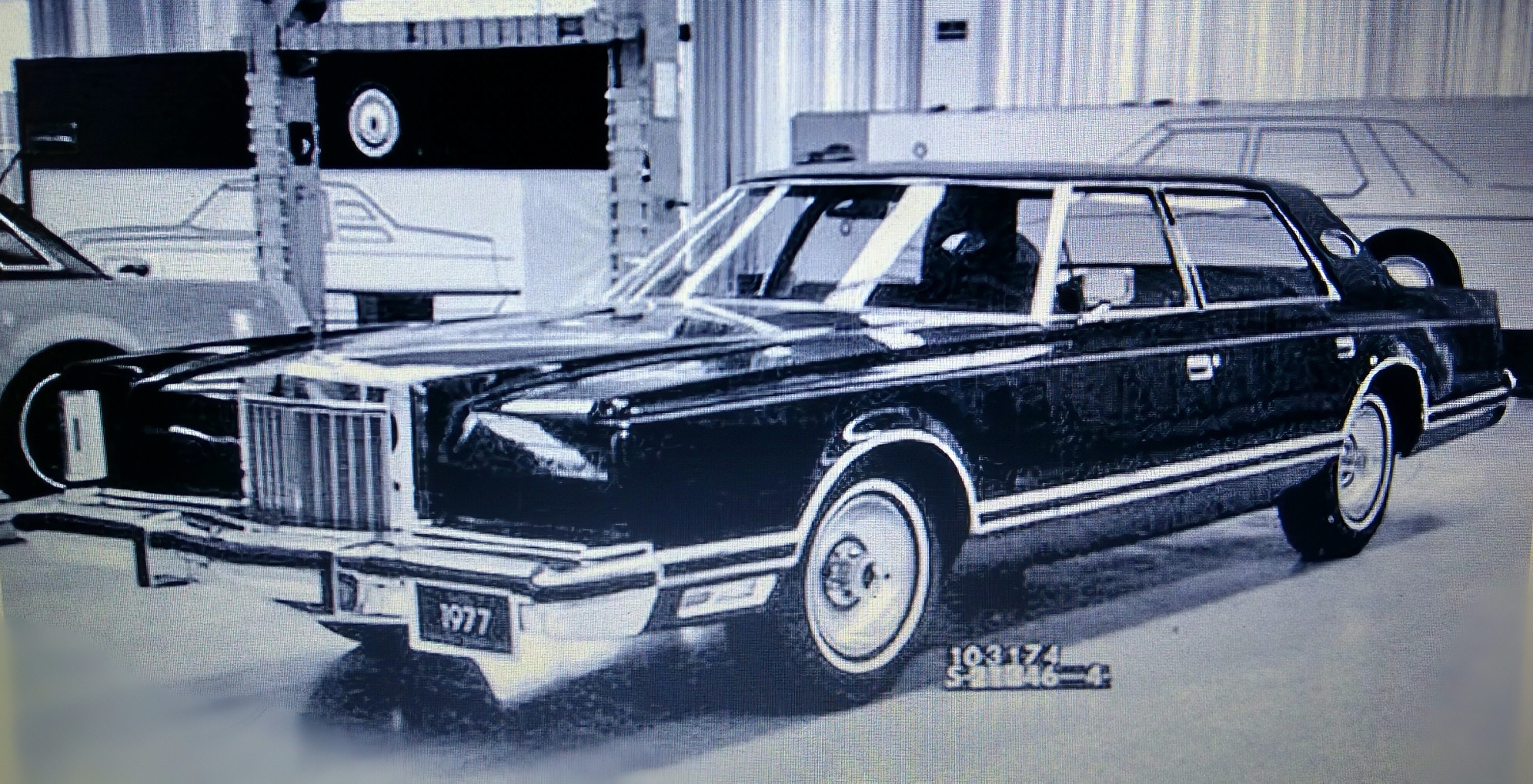
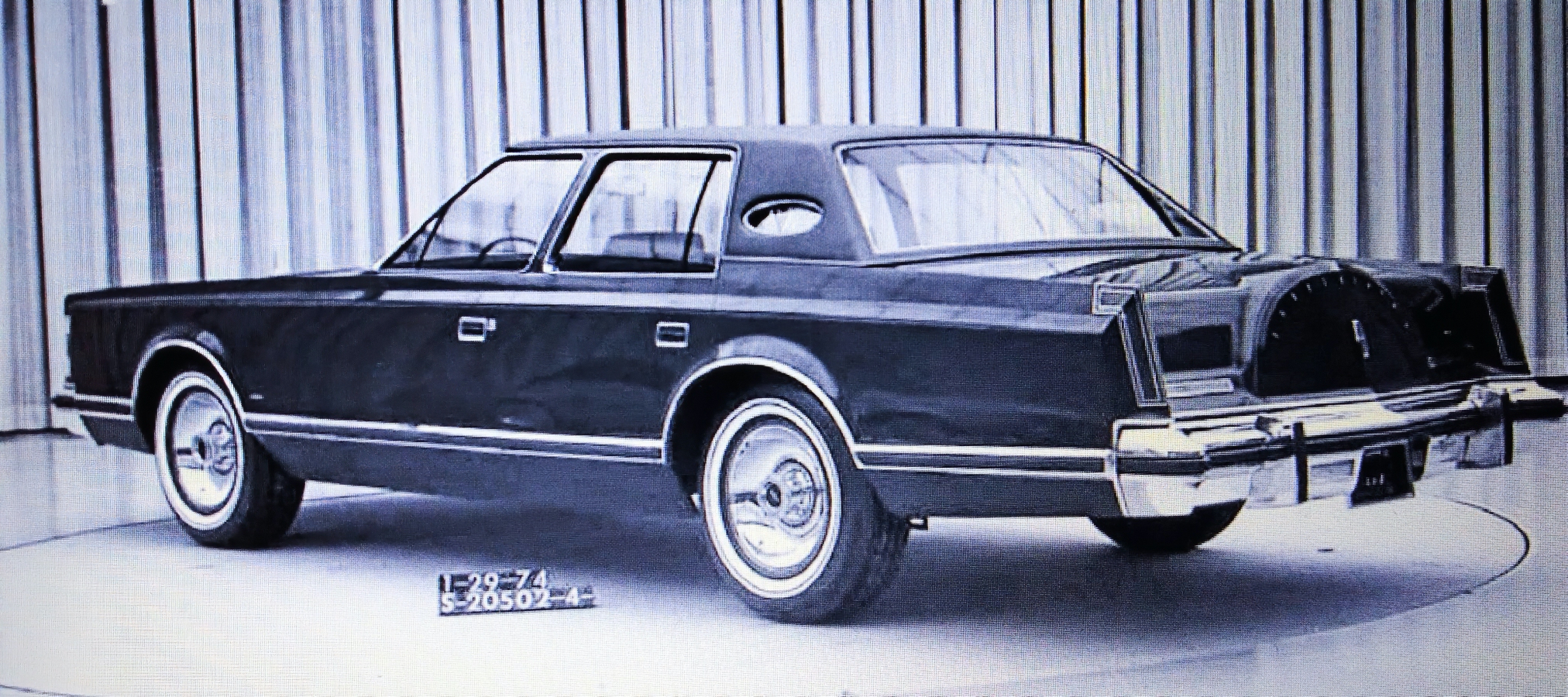
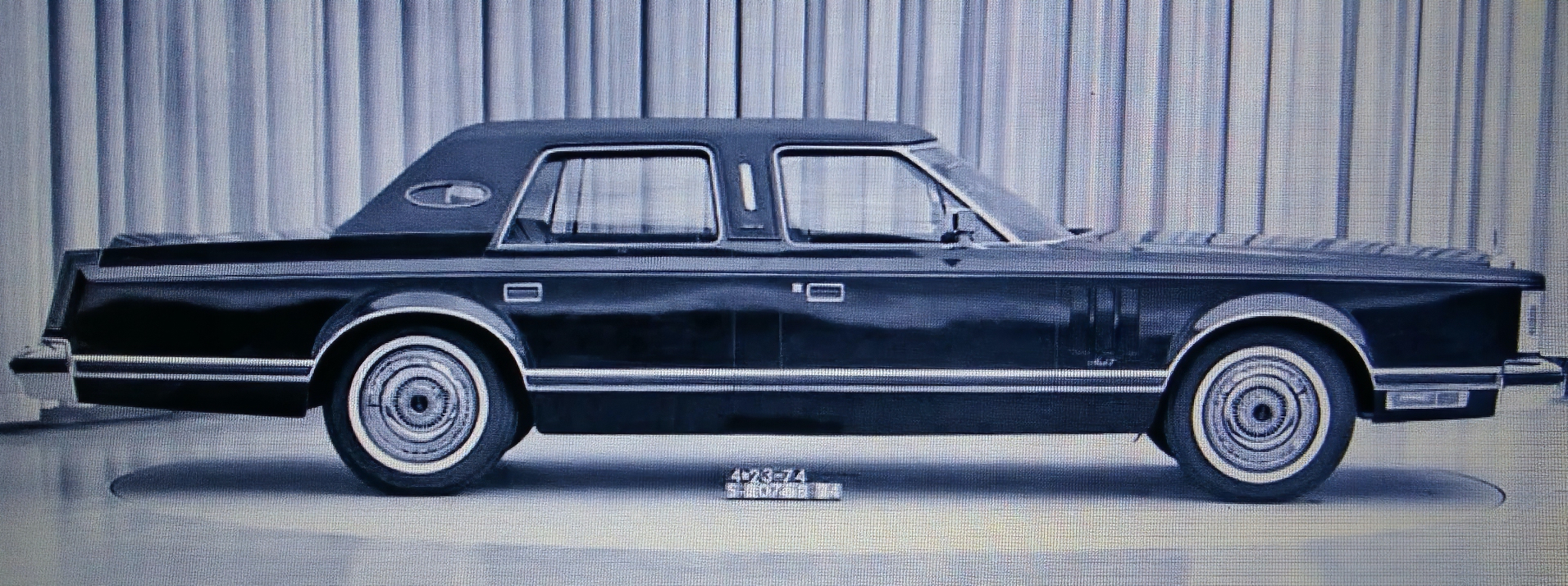
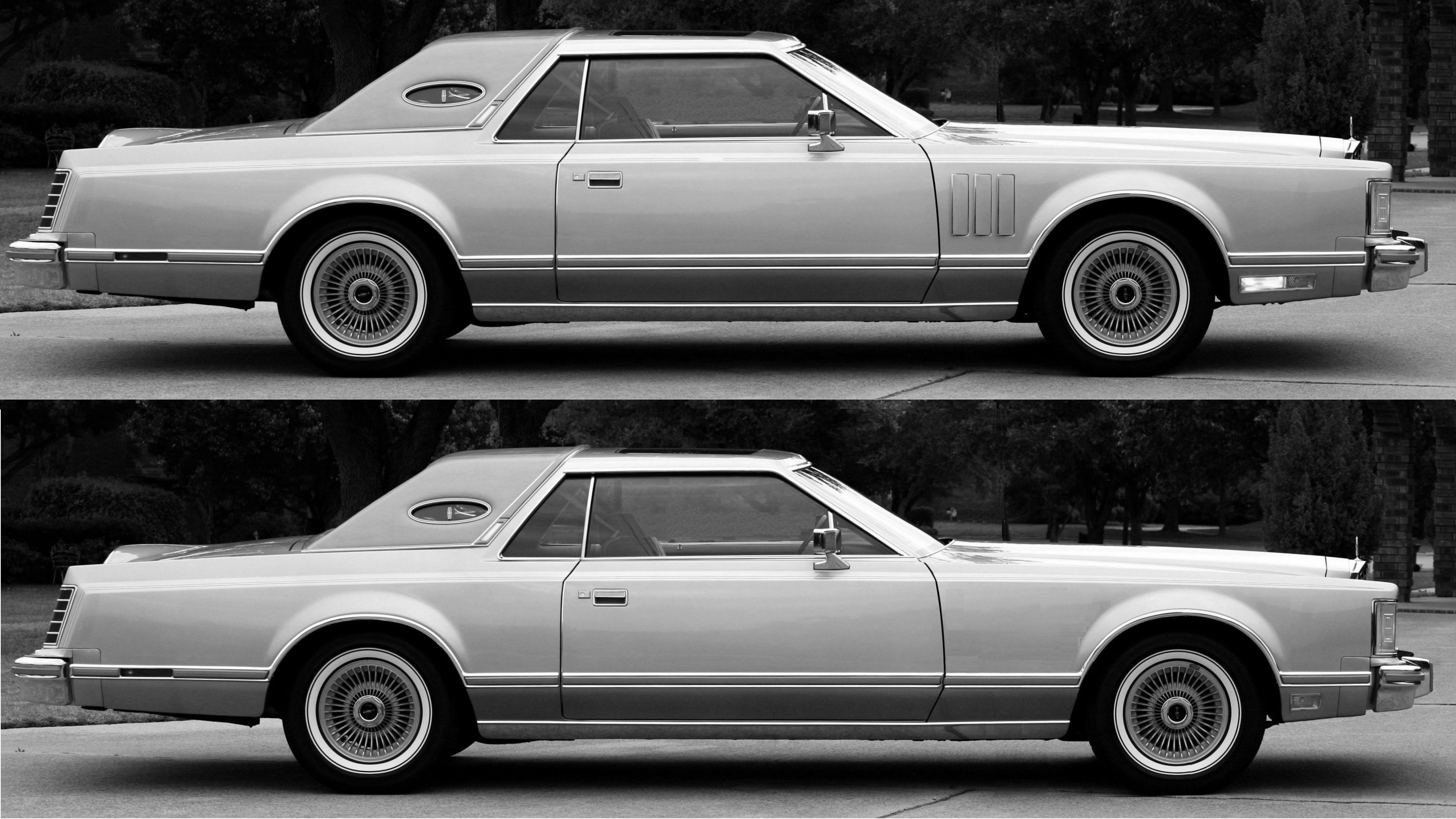
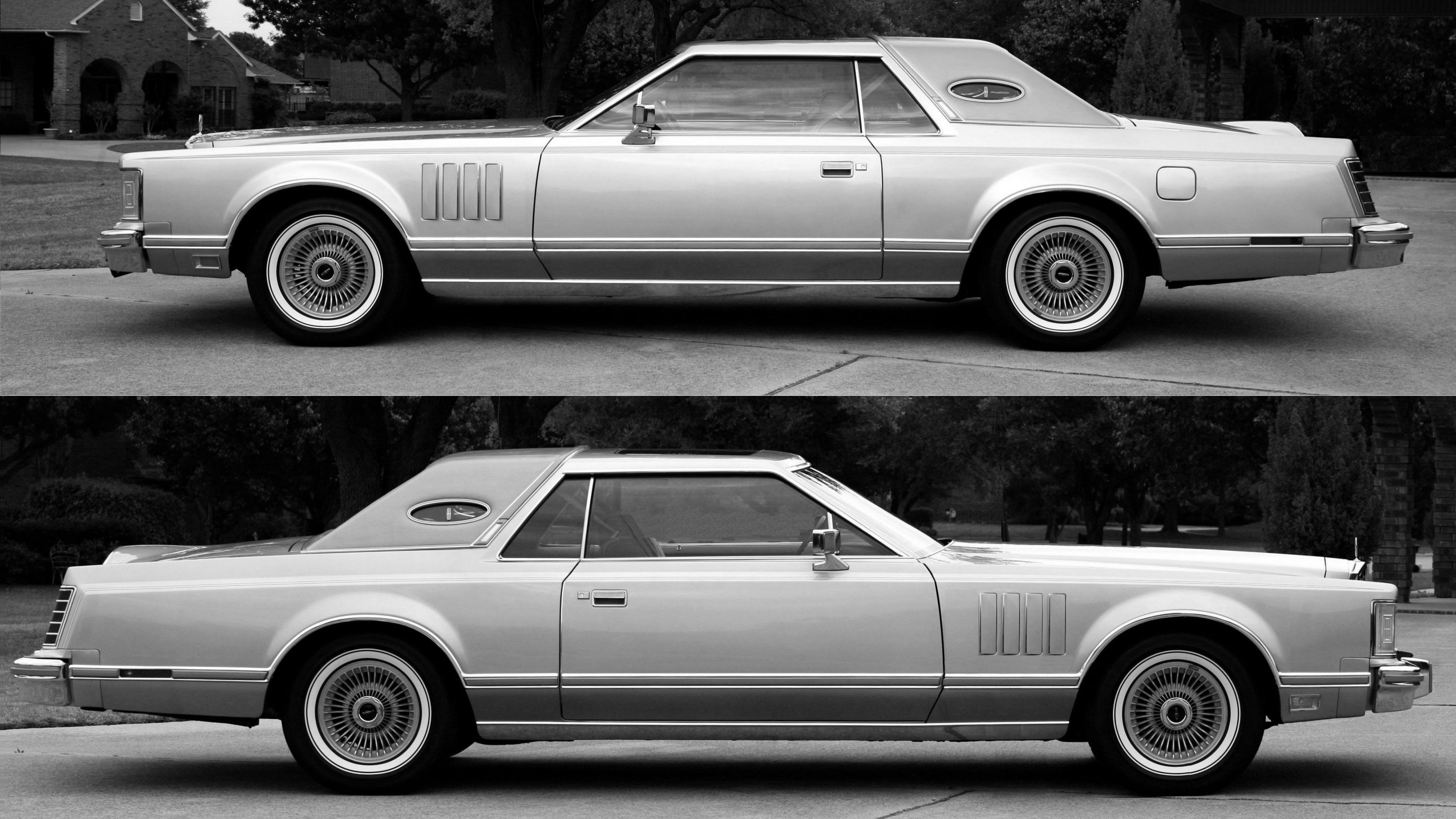
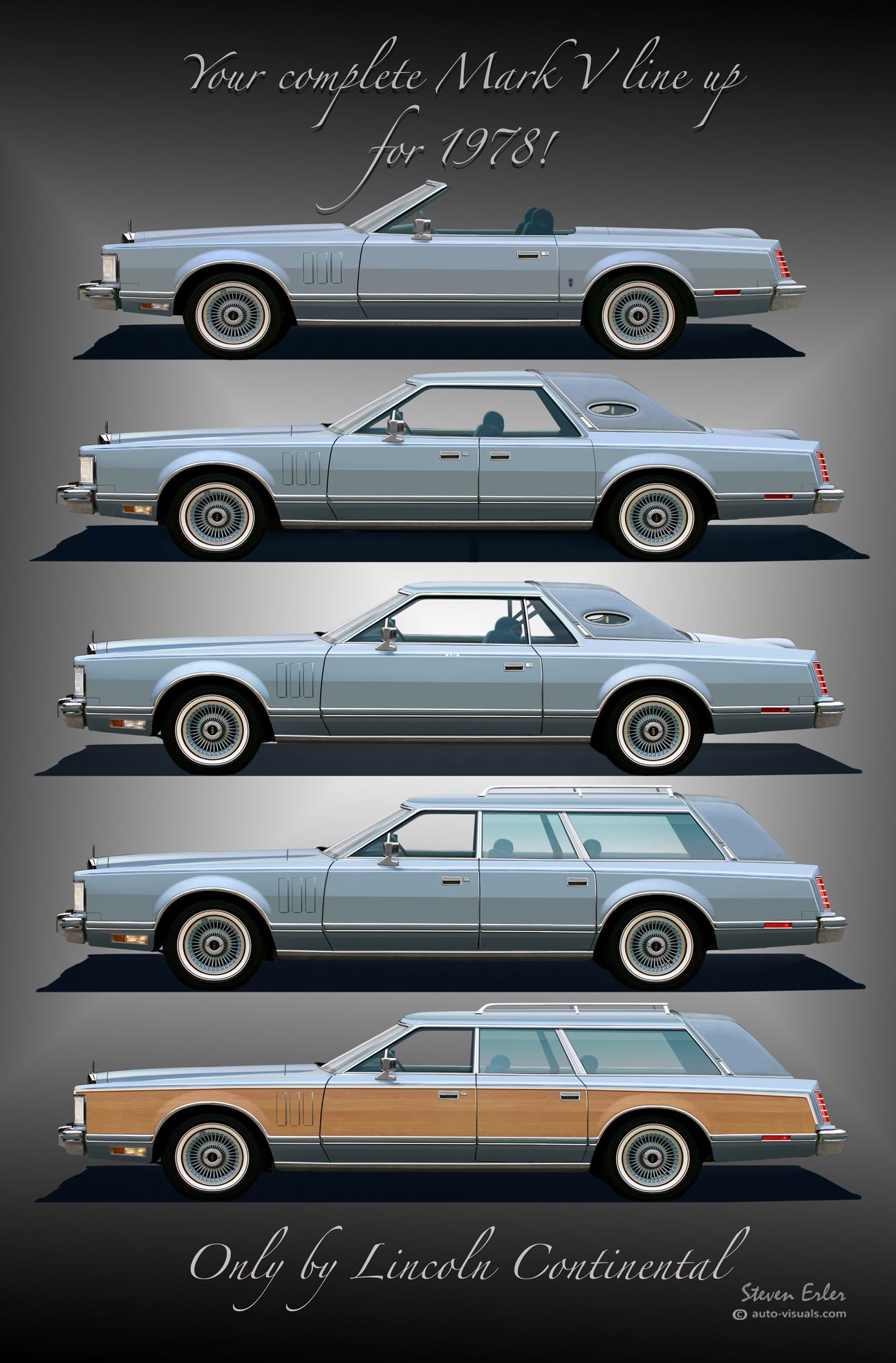































A nicely comprehensive history of the Mark V. I used to ogle these cars at our local Lincoln Mercury dealer back in the 70s. Very rare to see two alike, and exquisite in terms of brash styling yet tasteful packaging. Bill Blass was the most popular designer series, and Pucci the rarest. I bought a ’77 Mark Luxury Group car late 2017, white/burgandy with forged aluminum wheels and 44k 2-owner miles.
IMO the ’79 are the most interesting in terms of designer and color combinations, however I had to have a 460. Standouts for me; the ’77-’78 are the last years for the blue chip 460, C6, and 9″ rear. 4-wheel disc brakes, and a chassis that is shared with all full size and intermediate Fords is also a positive in terms of parts and upgrades.
20 years ago this “last graduate of the old school” was still too much of a hangover from that era. However 40 years on I find these car inspiring in terms of its presence and a surprising amount of solid well built engineering.
Tis true Lincoln gave the middle finger to the government in 1979 and refused to downsize; however, Lincoln wasn’t the only car maker to refuse. Pontiac was the other one to stand firm in 1979. Pertaining to muscle cars engines, whereas Chevy caved in/wimped out and stuck the 350 in the Corvettes and Z-28’s for that year, Pontiac held on to the big Pontiac 400 and kept them in the Trans-Ams.
California (being the liberal state it is) enacted draconian laws against Pontiac and had outlawed the Pontiac 400 motor for 1979. Pontiac was so determined, as an answer, Trans-Ams made at Van Nuys plant in California got the big 403 Olds (because it burned cleaner). Trans-Ams made in Ohio got the 400 Pontiac motor.
In a late issue of Hot Rod Magazine (or possibly a different car mag) they have a pic of a 1979 Trans-Am with the caption: “It won’t pass this way again.”
Yes the Lincoln got physically bigger, but Pontiac held on to the bitter end, also.
Pingback: For Sale 1978 Lincoln - one of a kind - 10,000 original miles